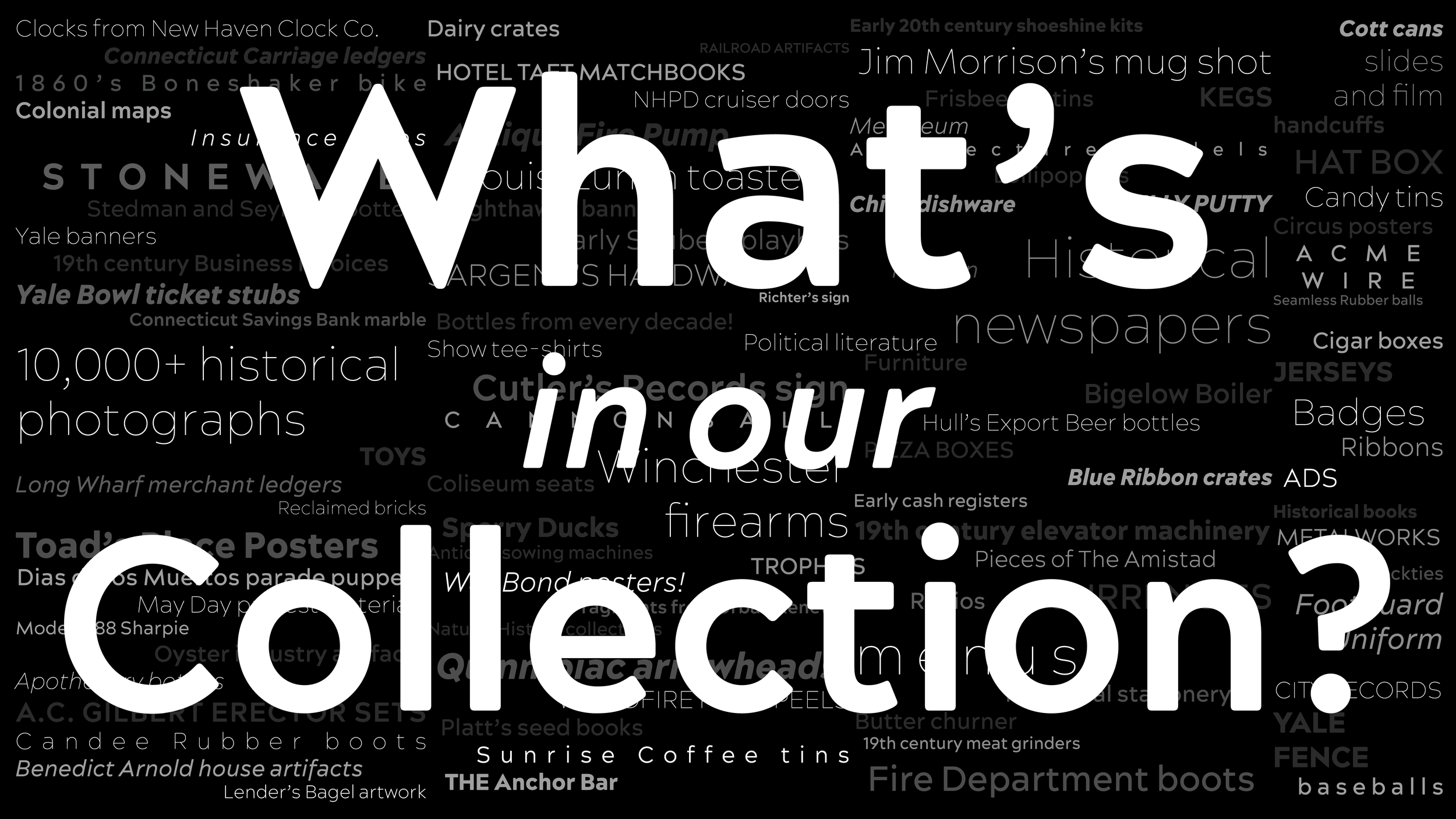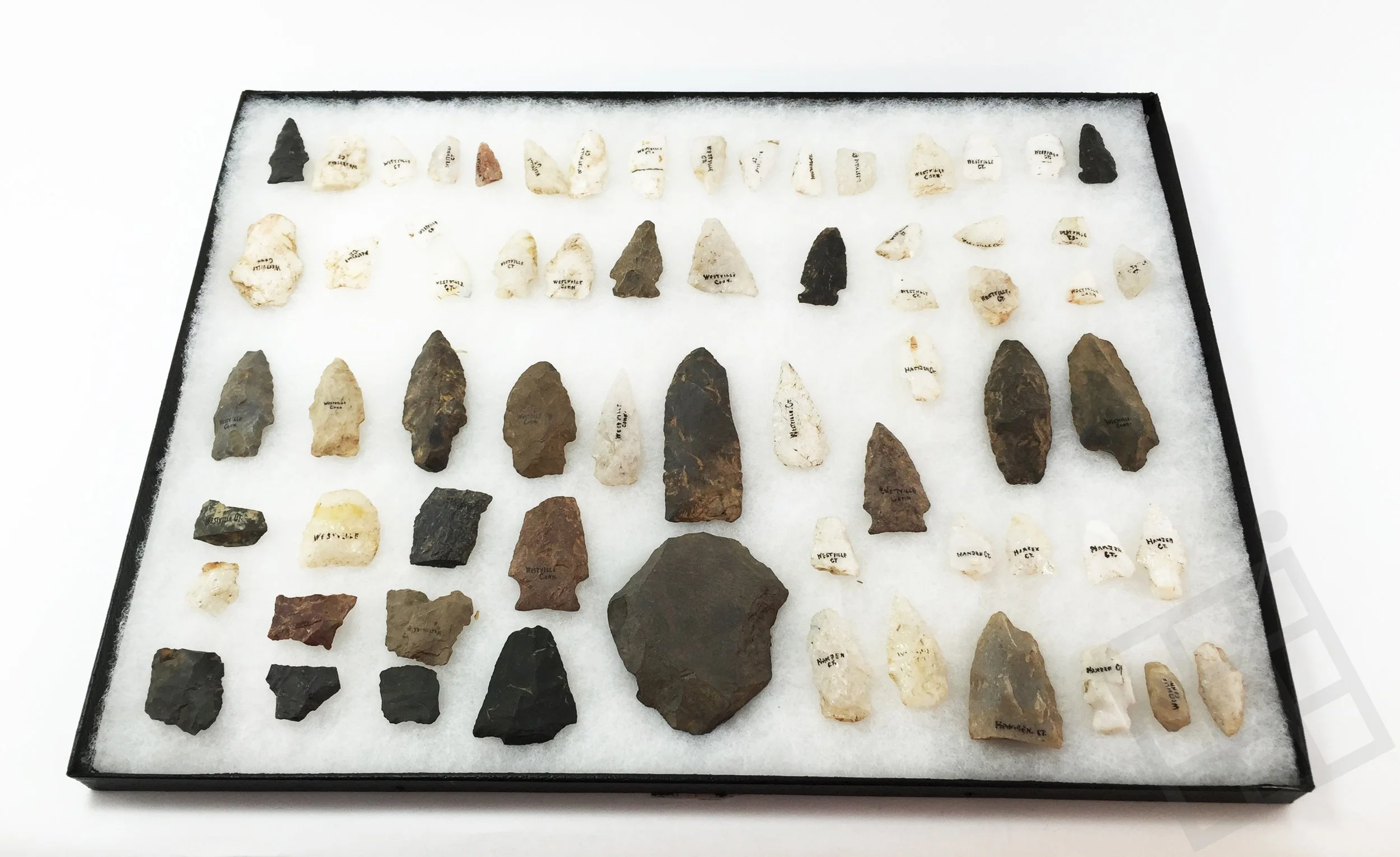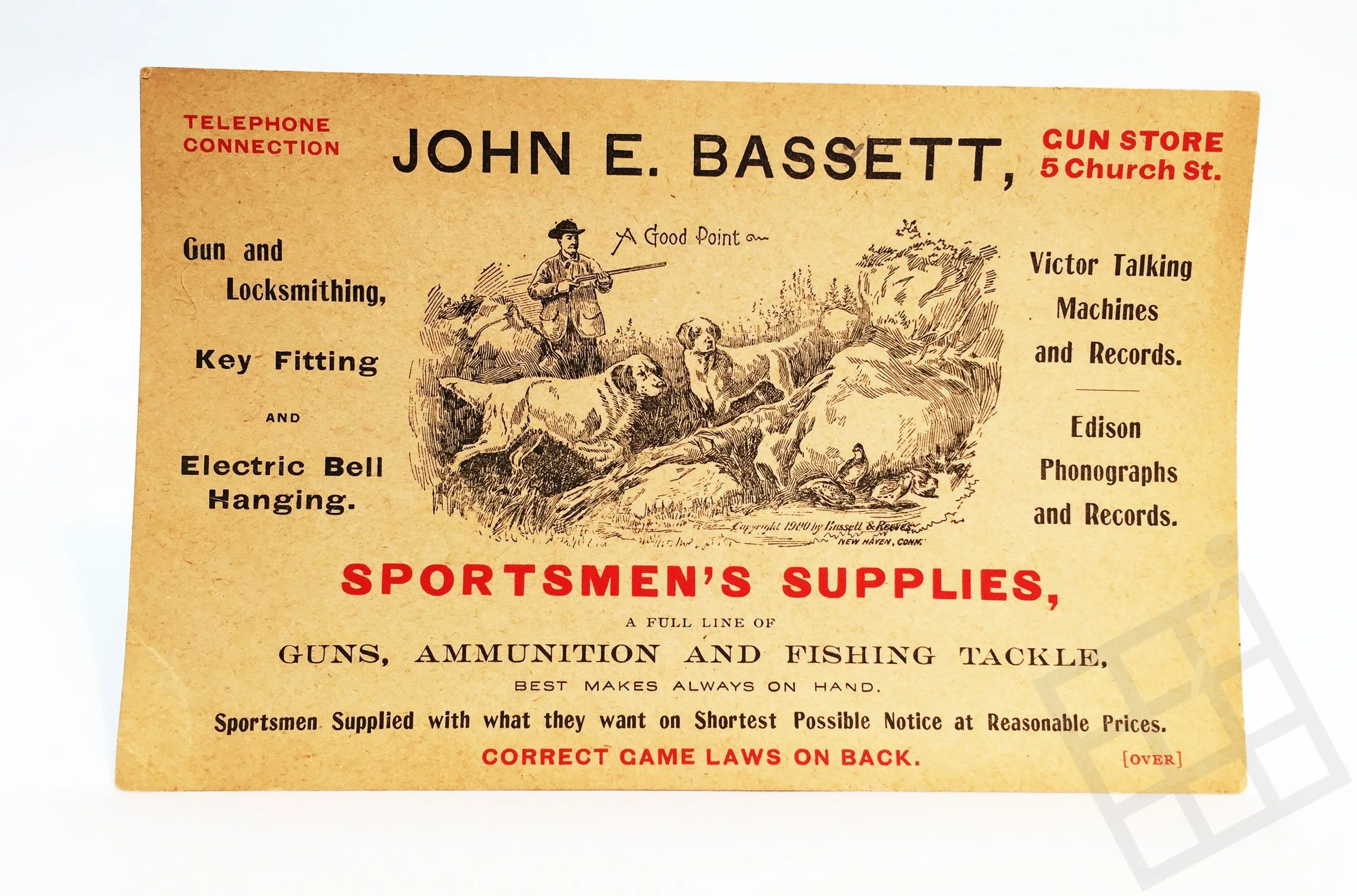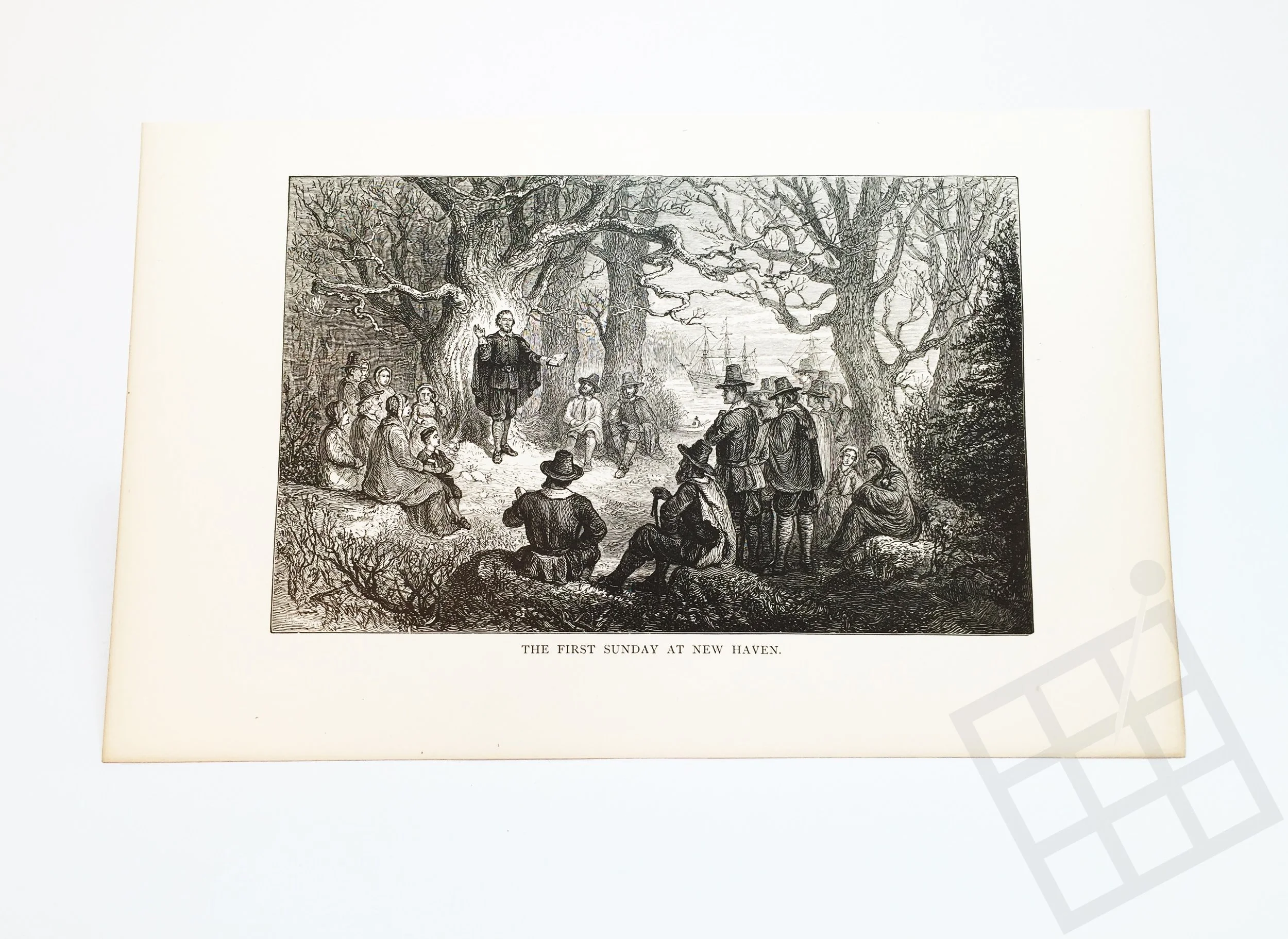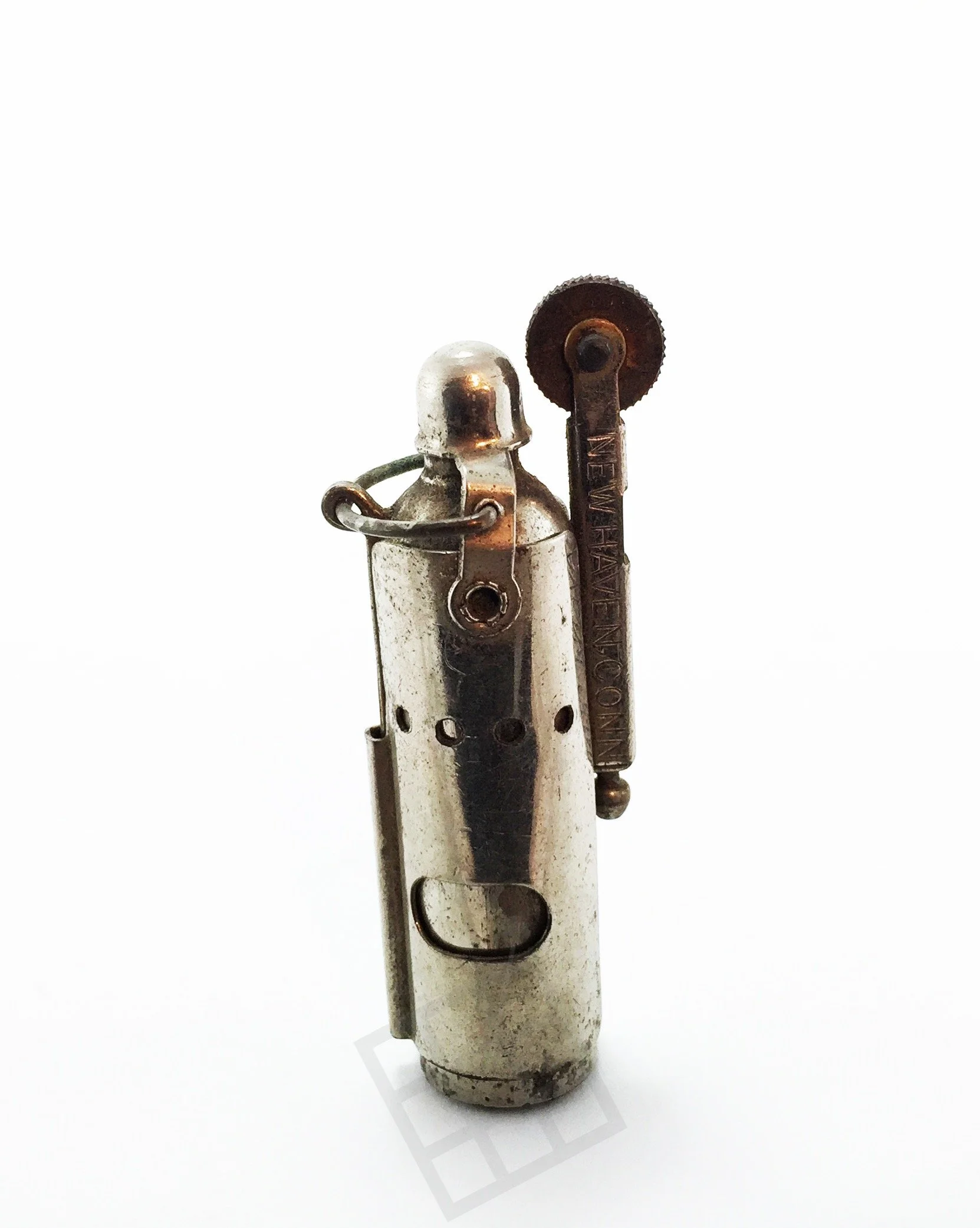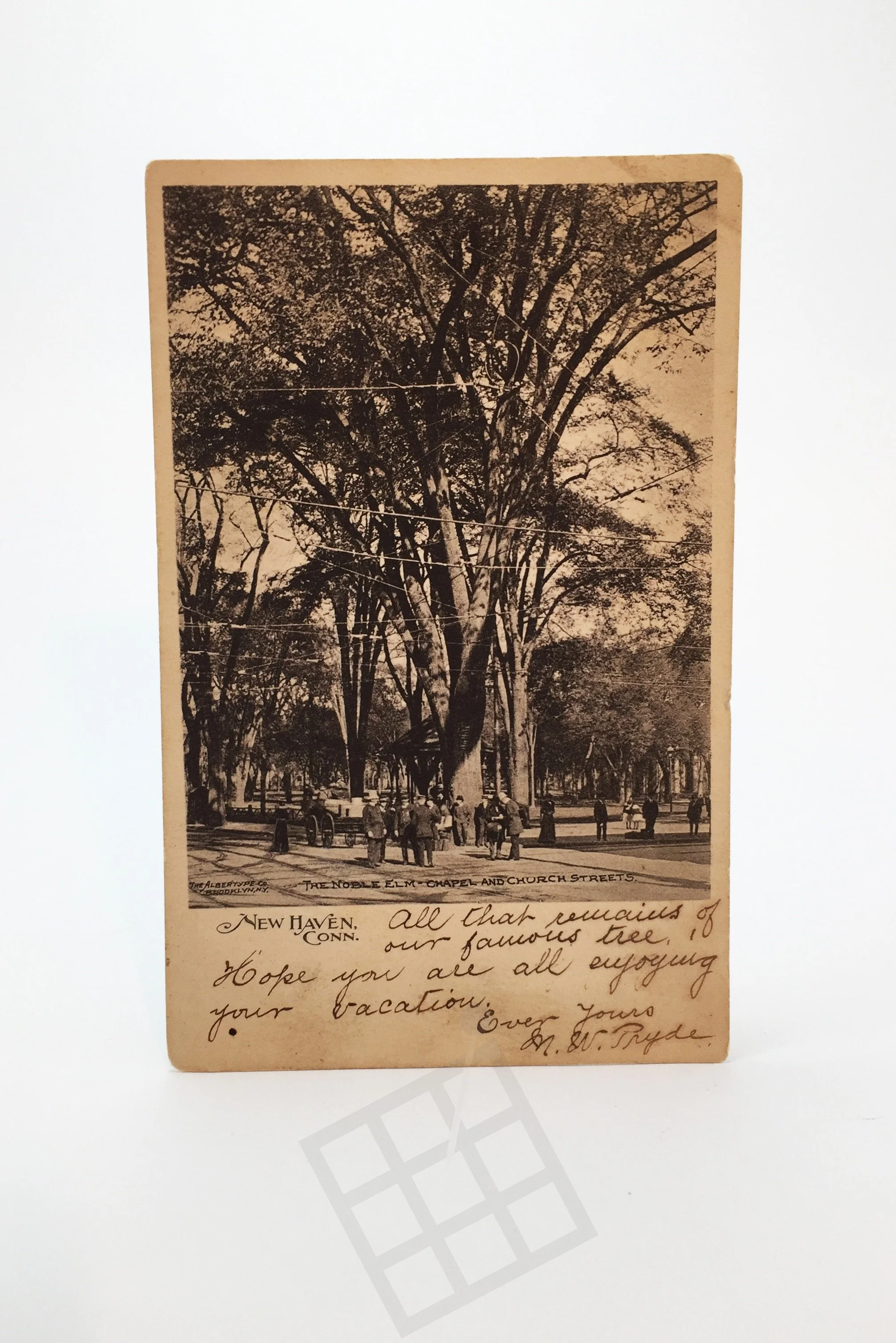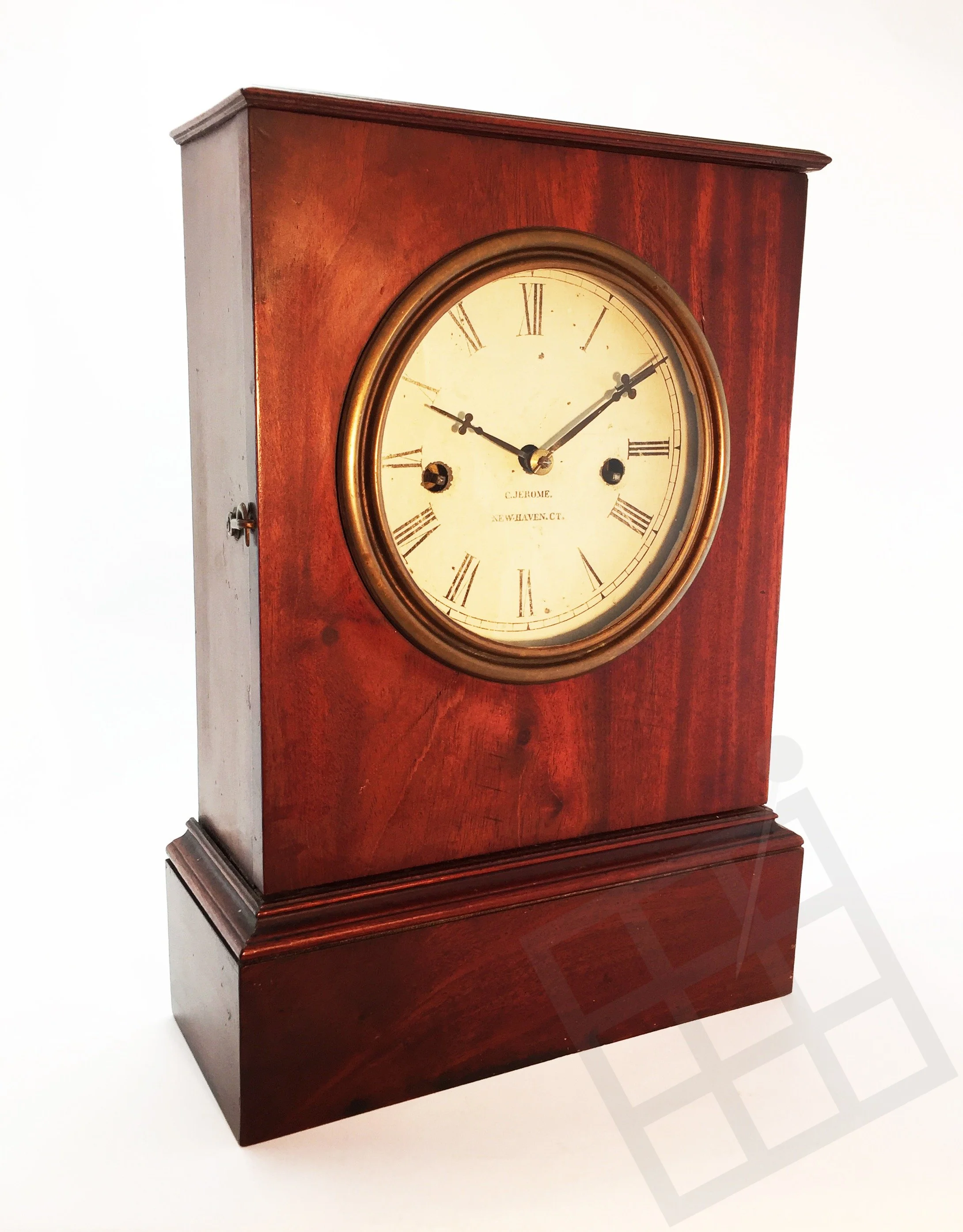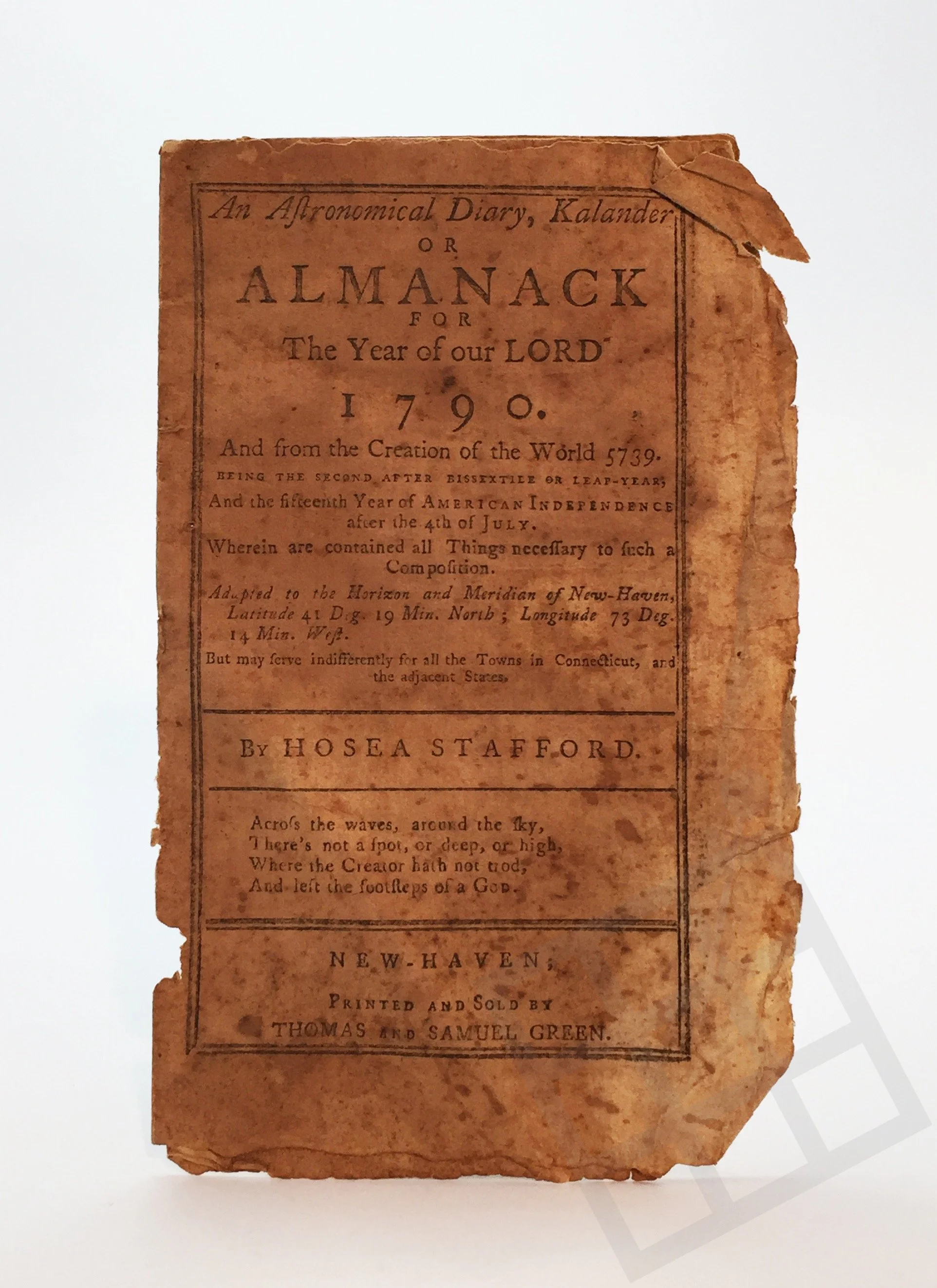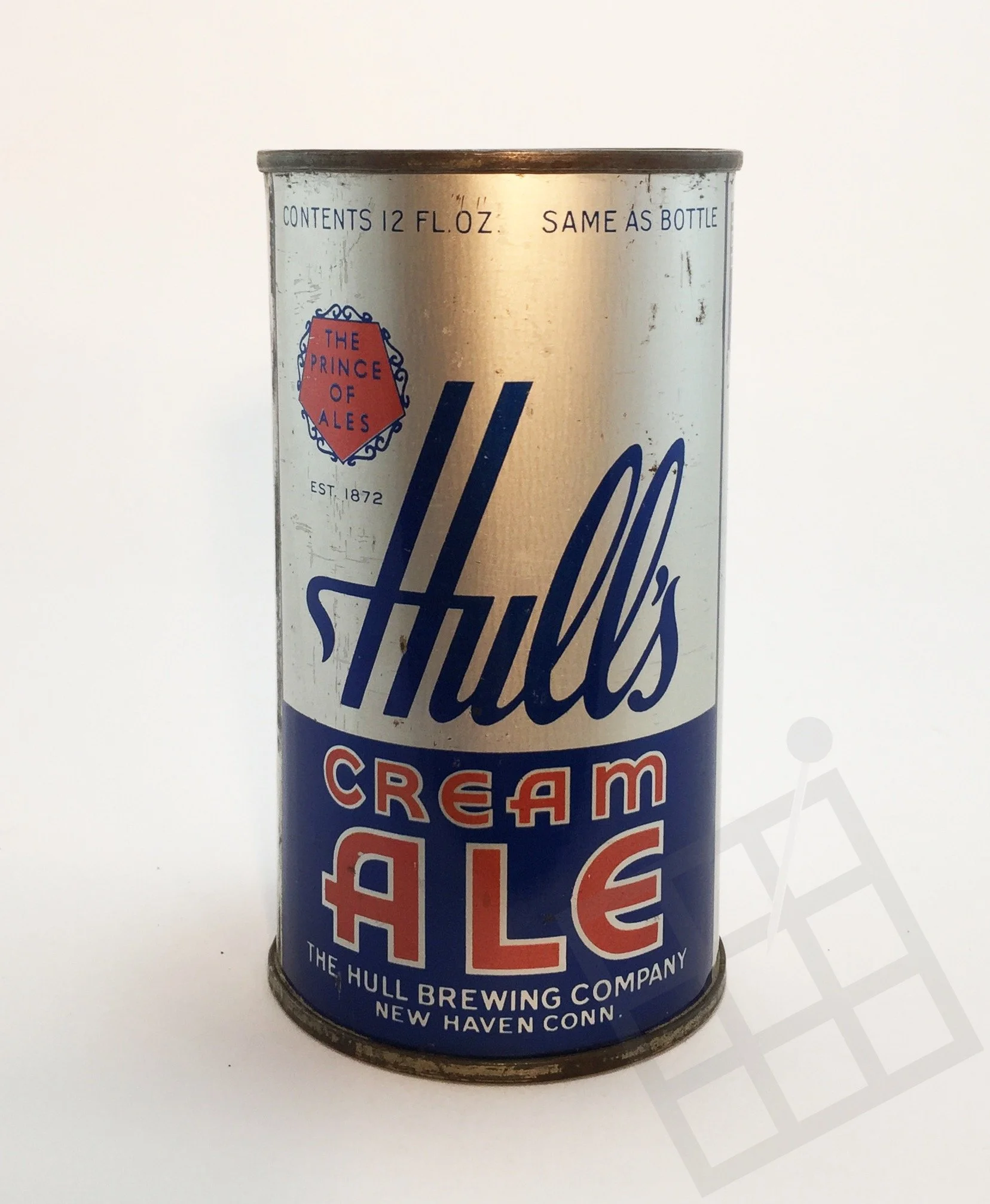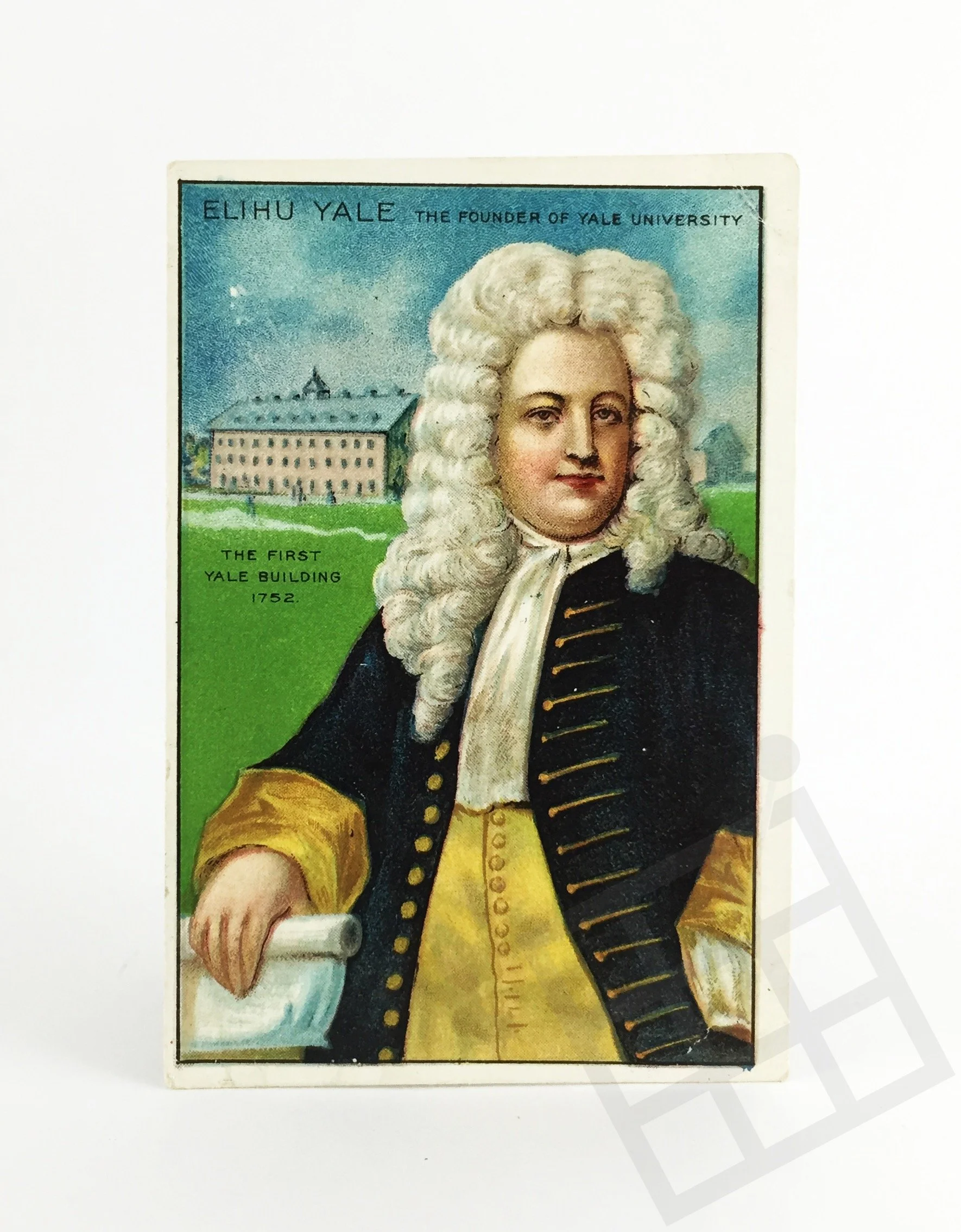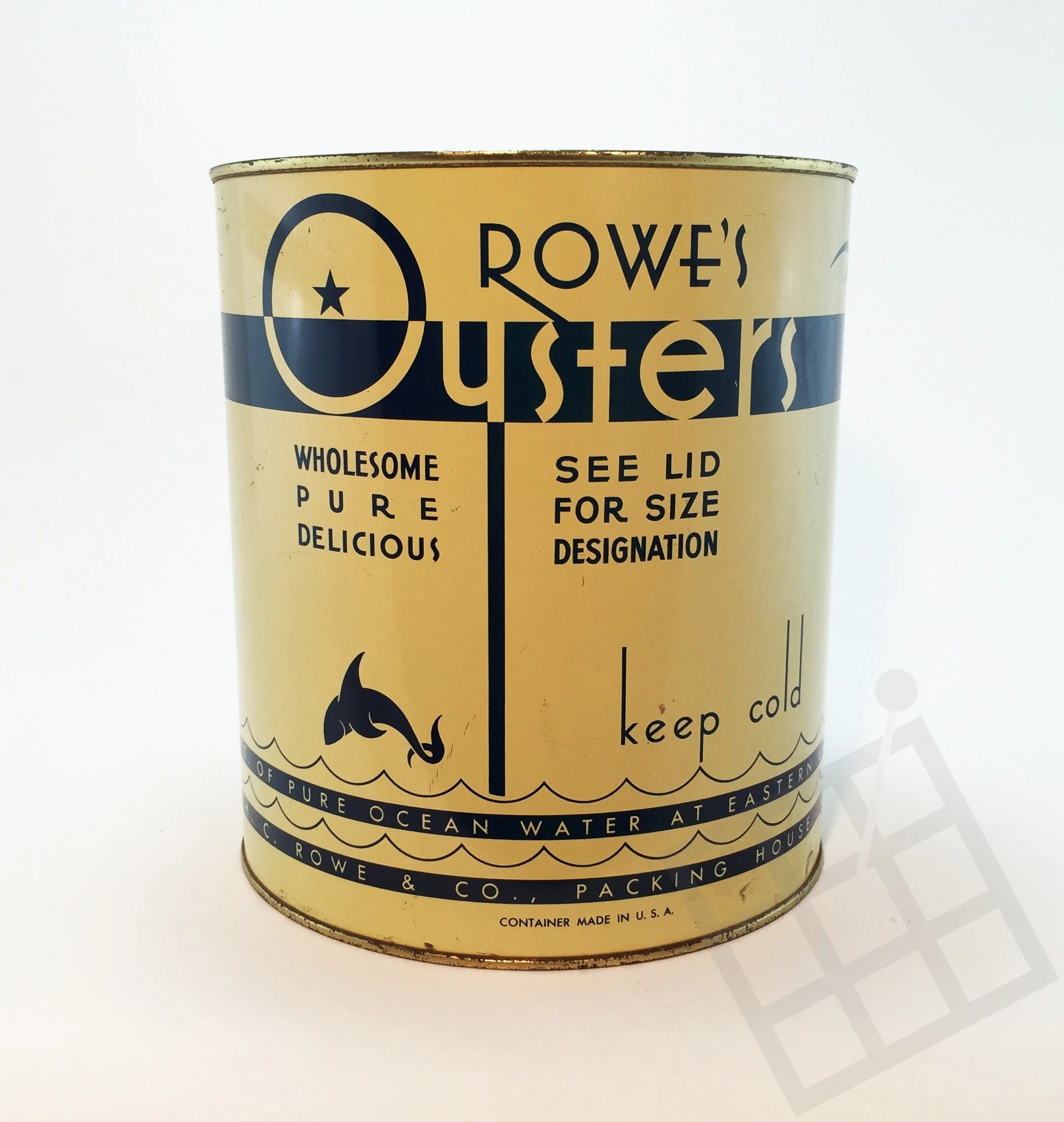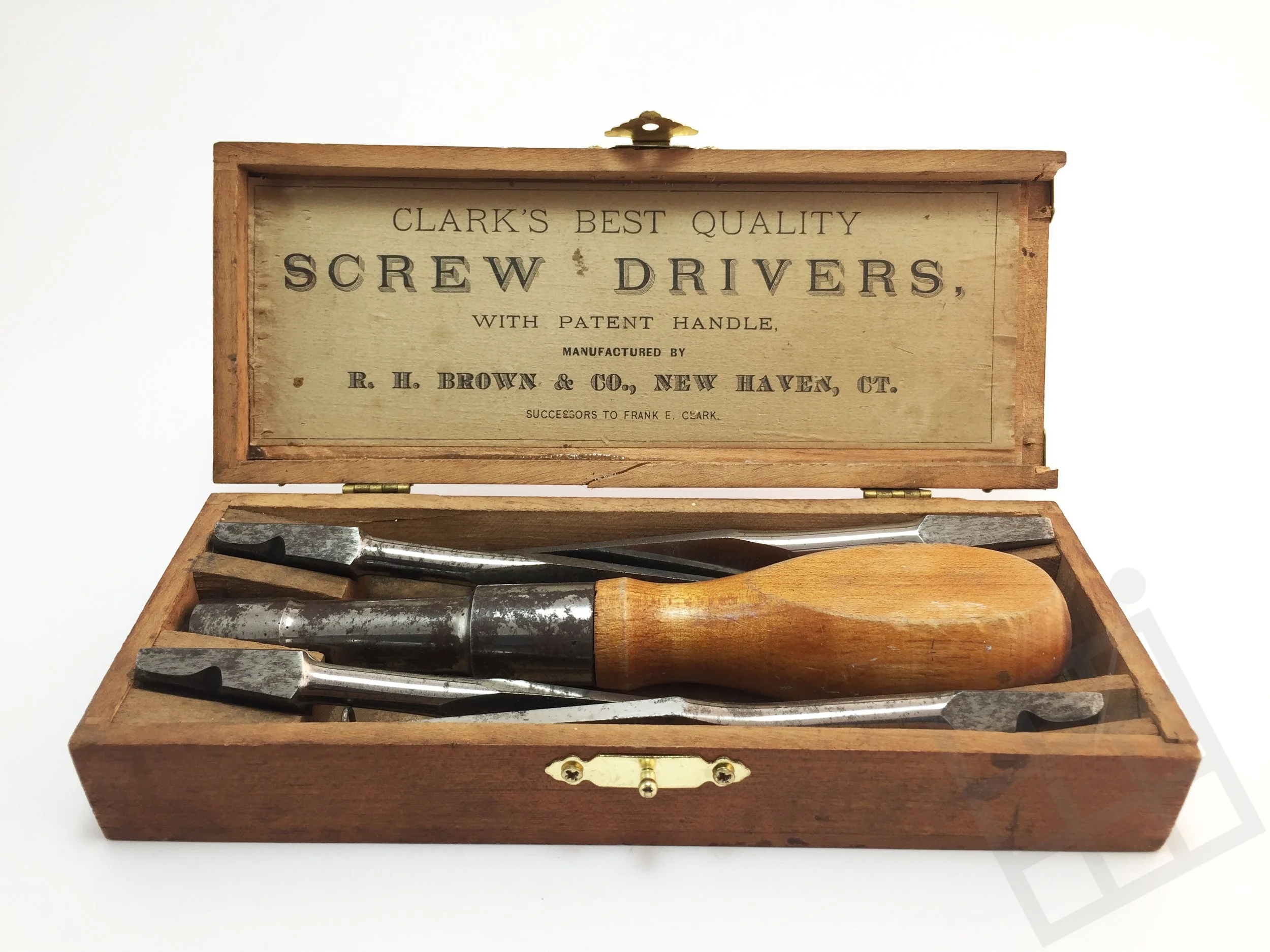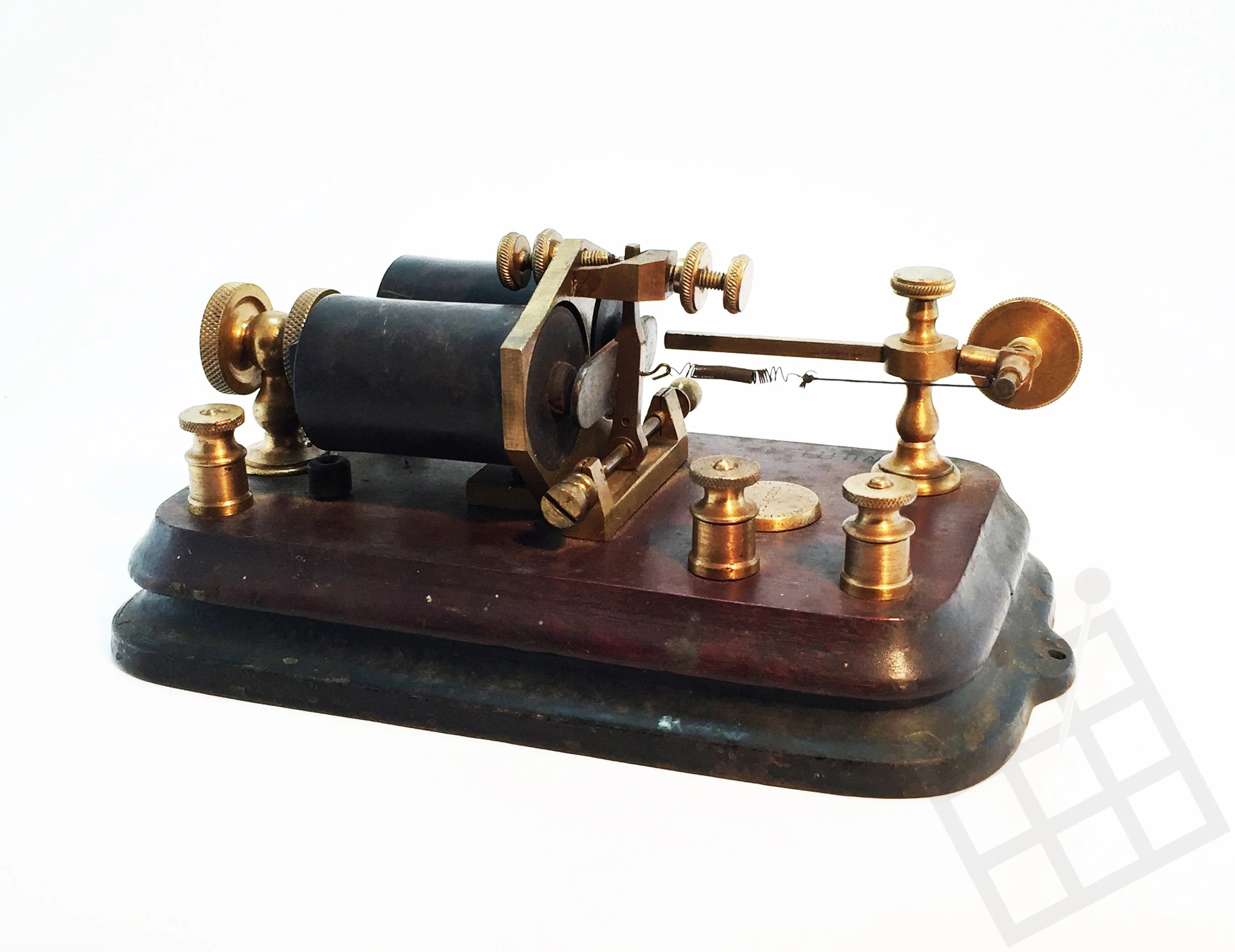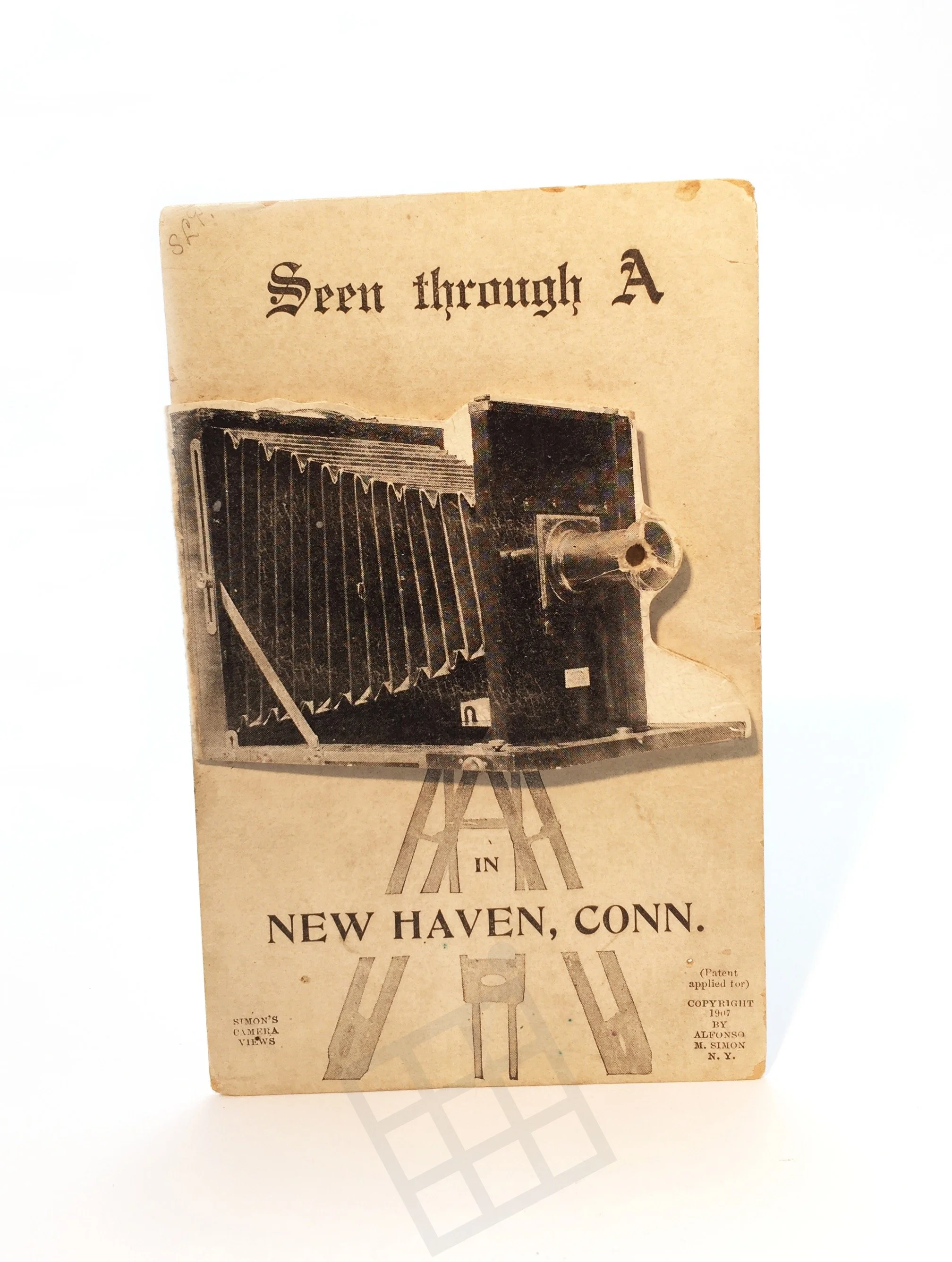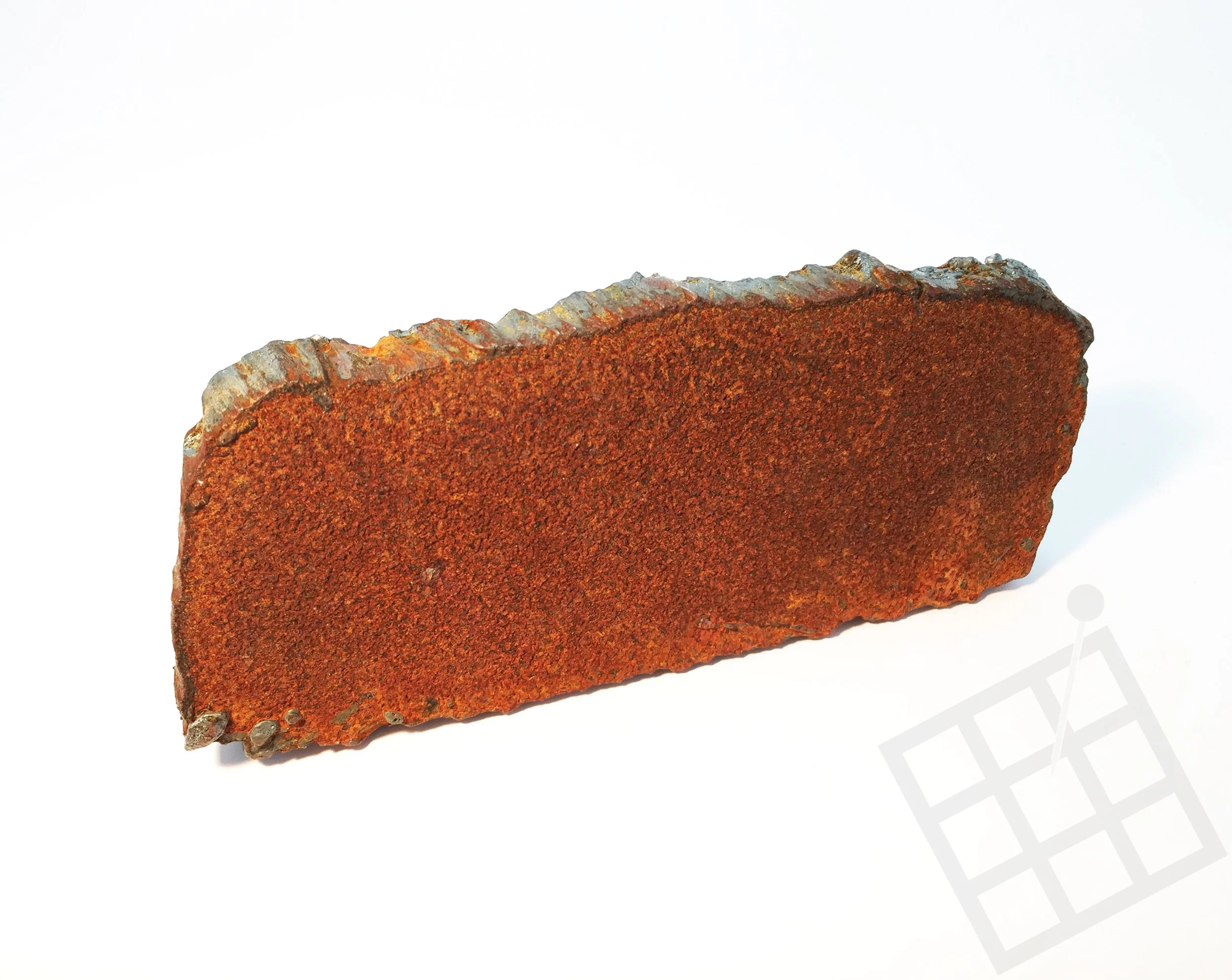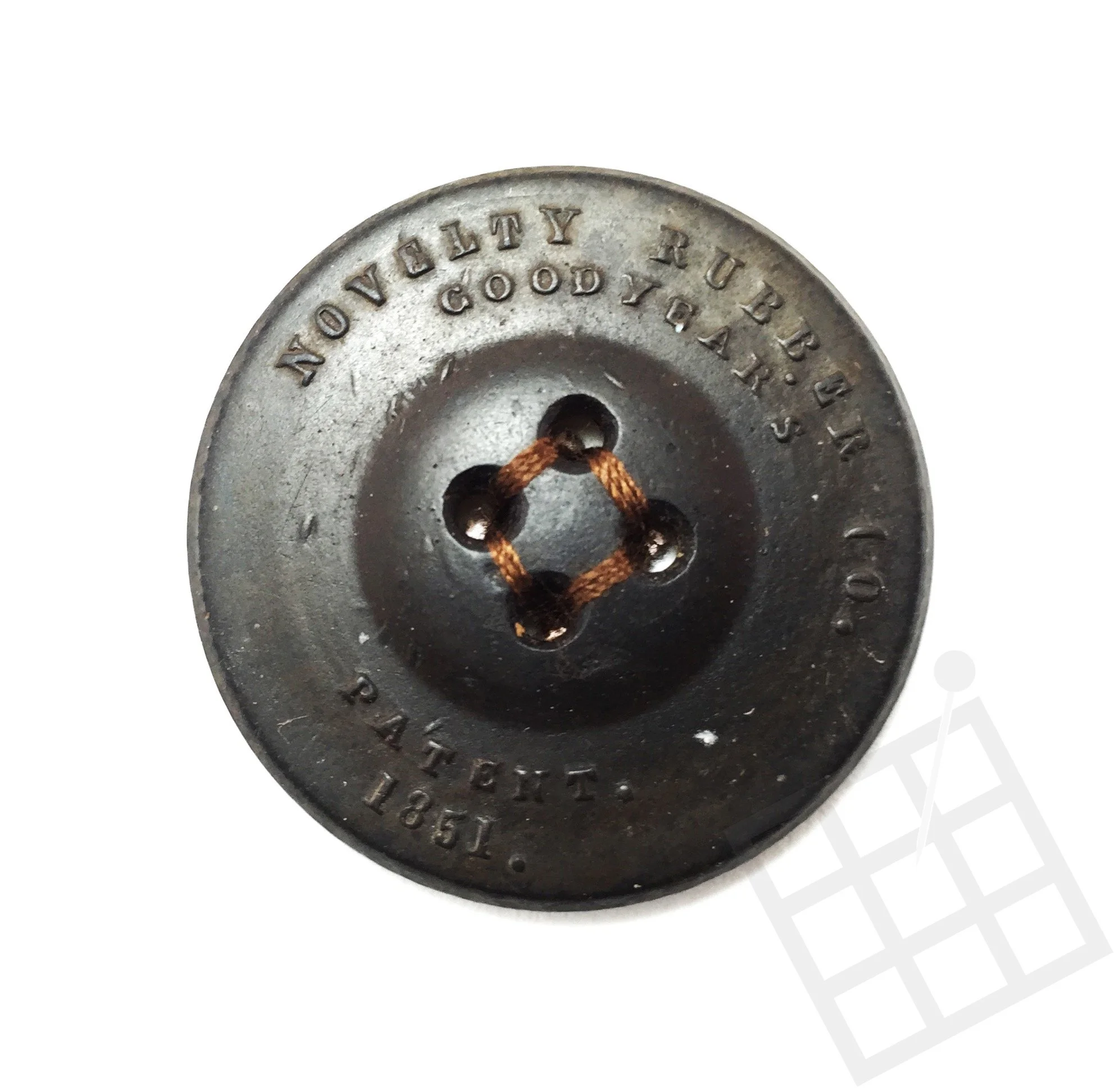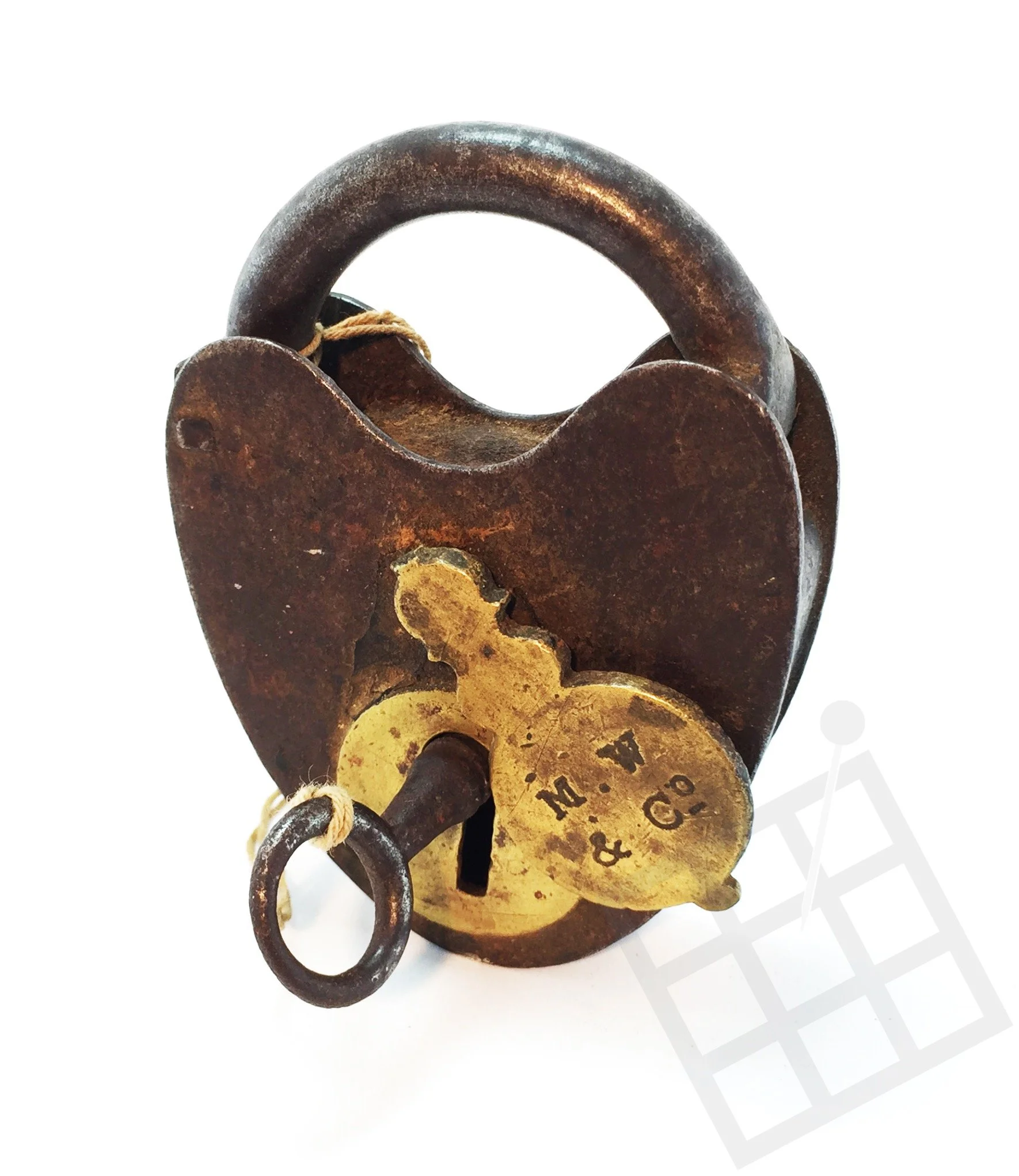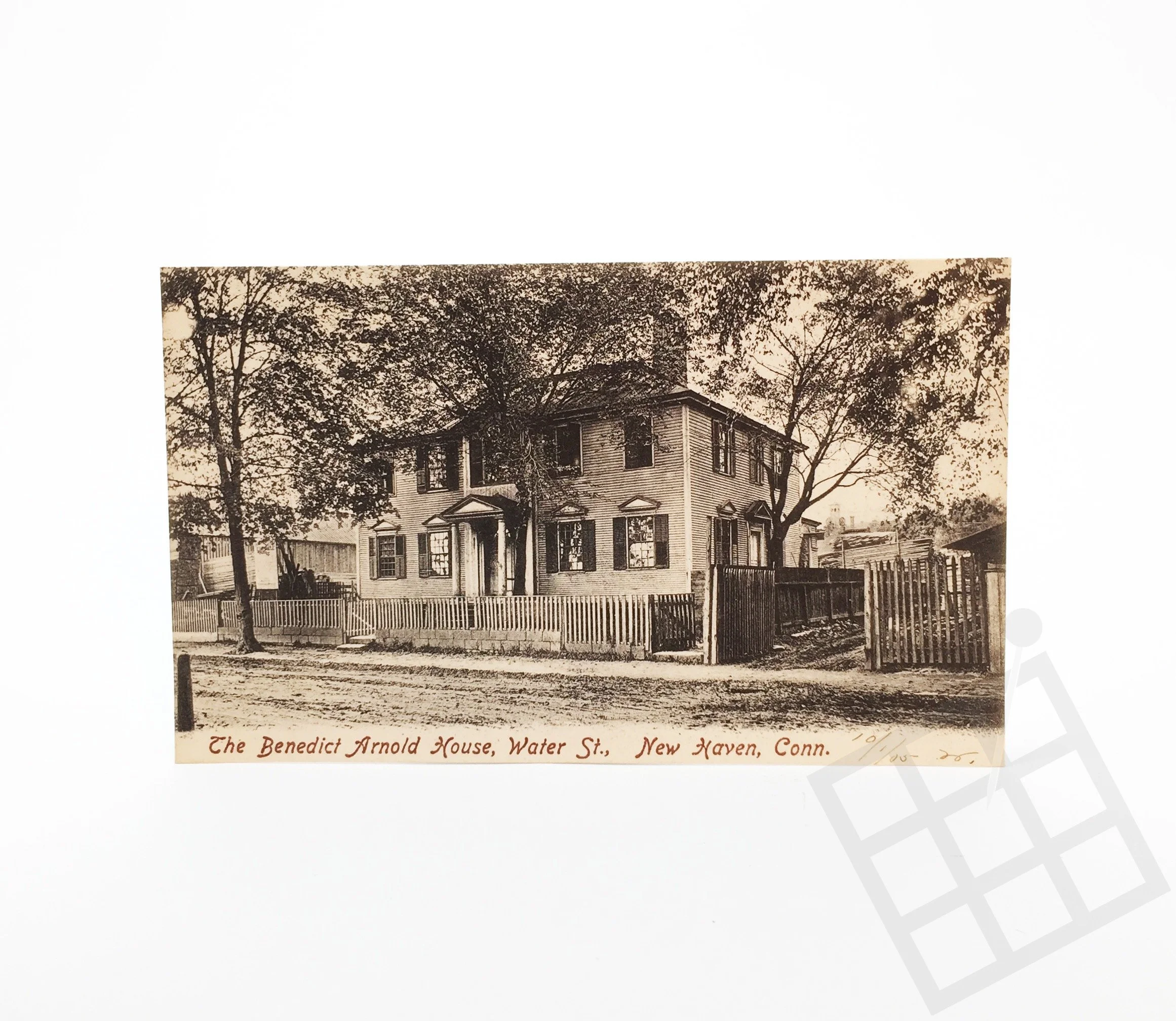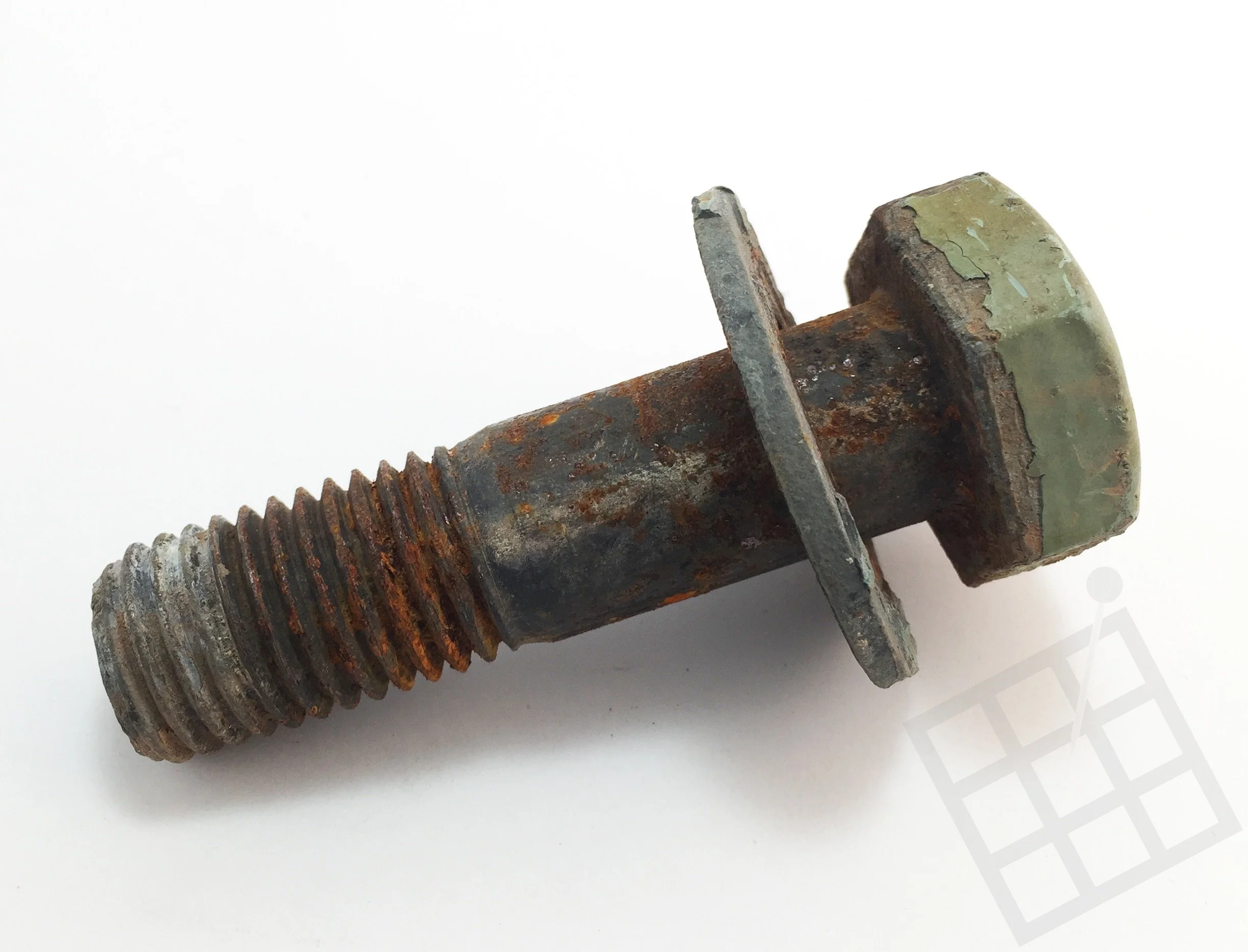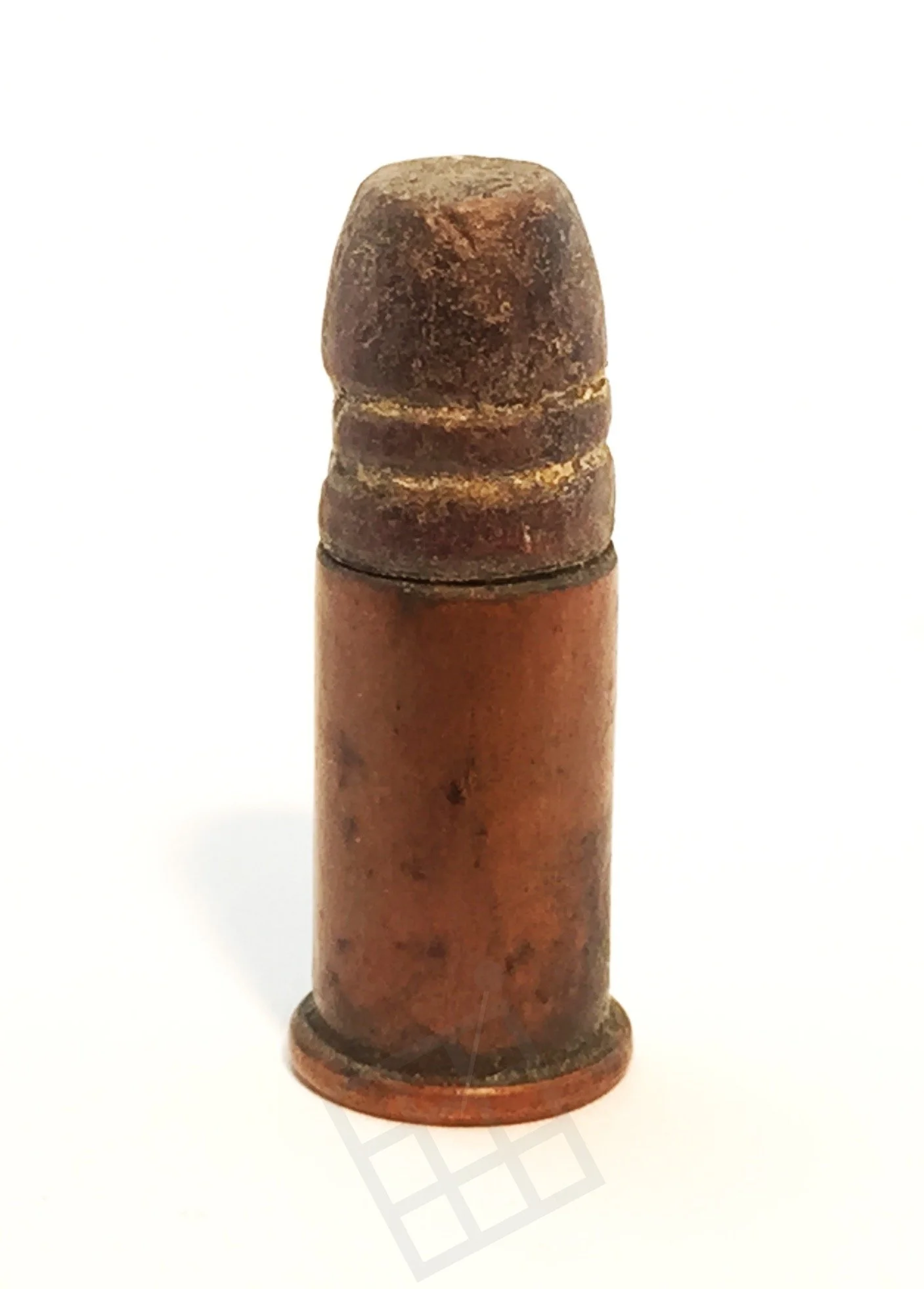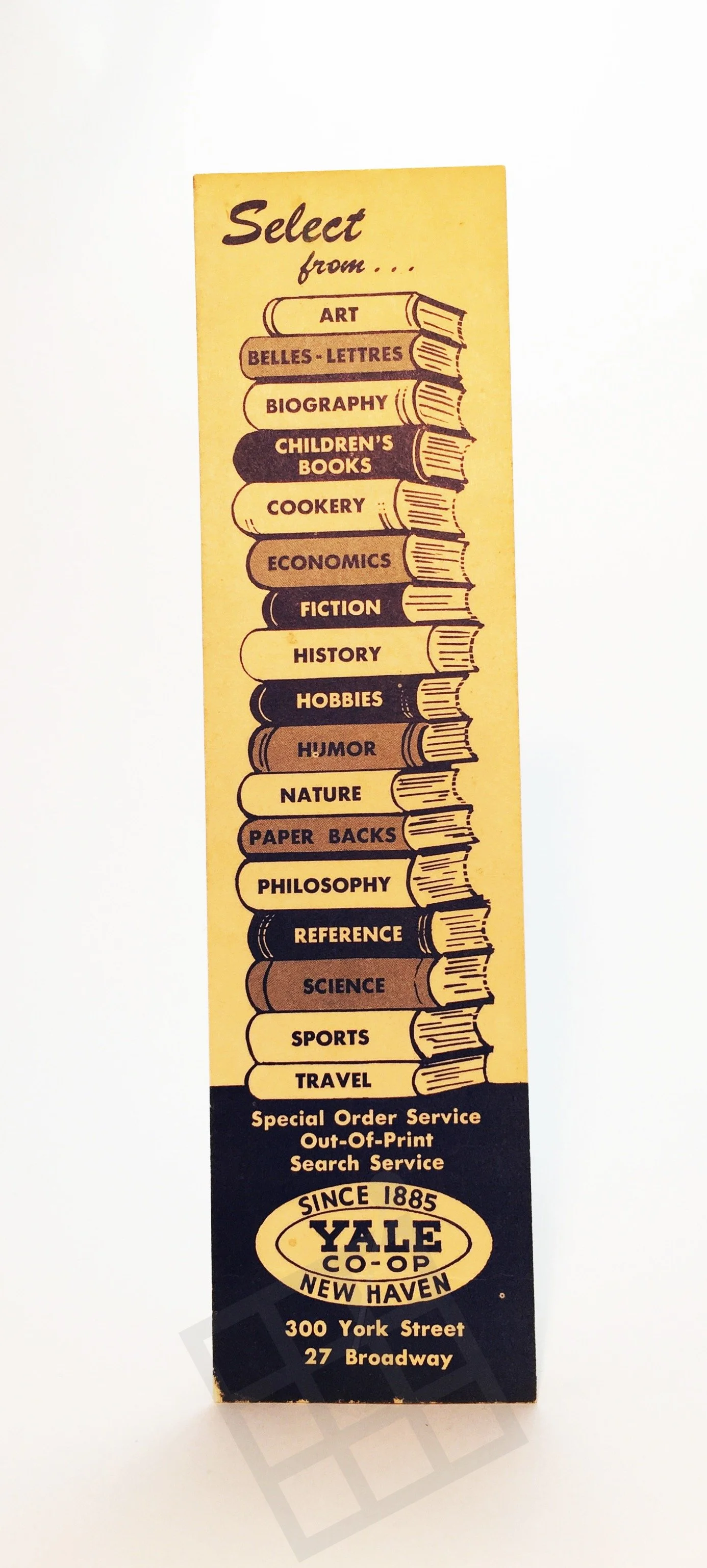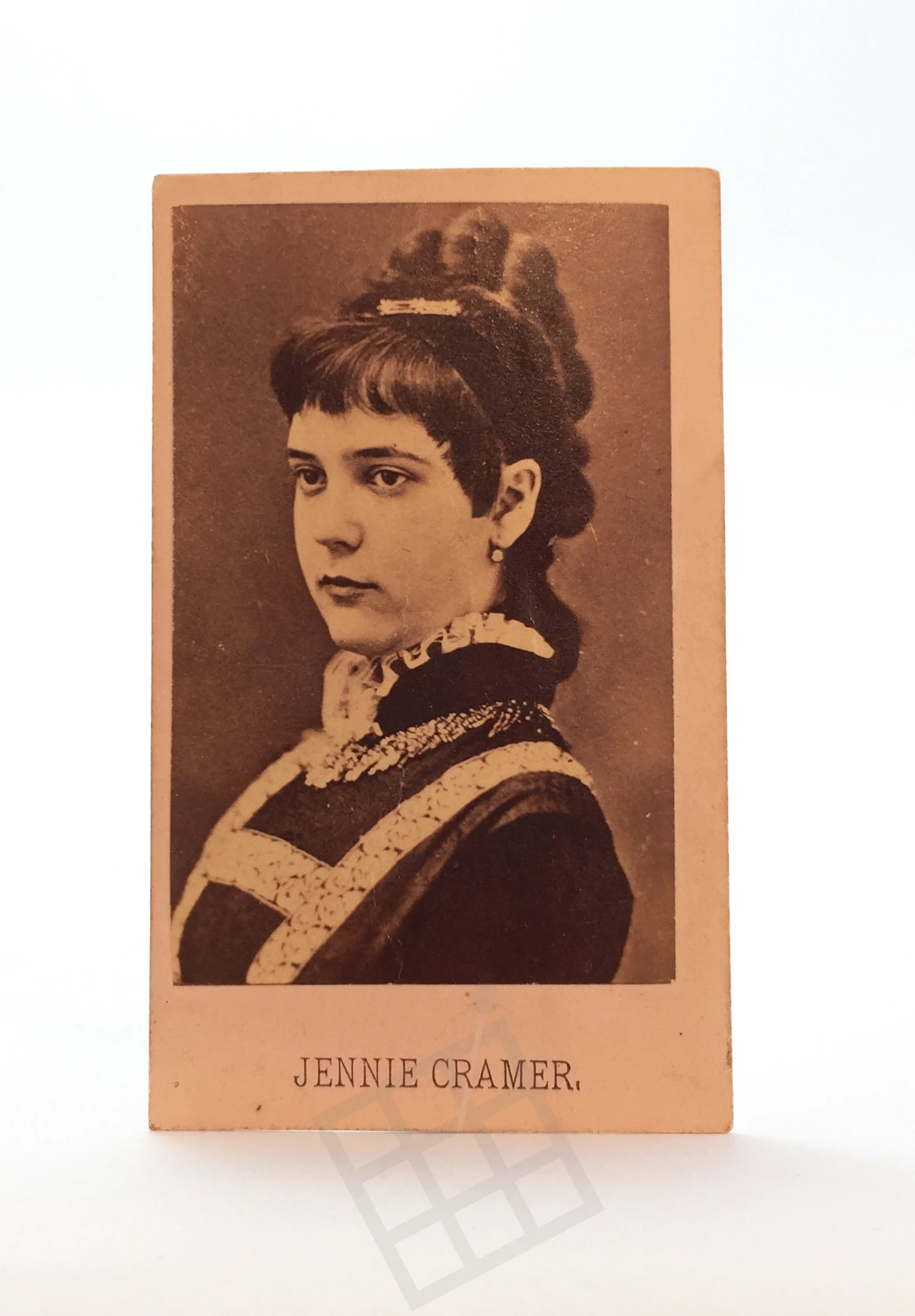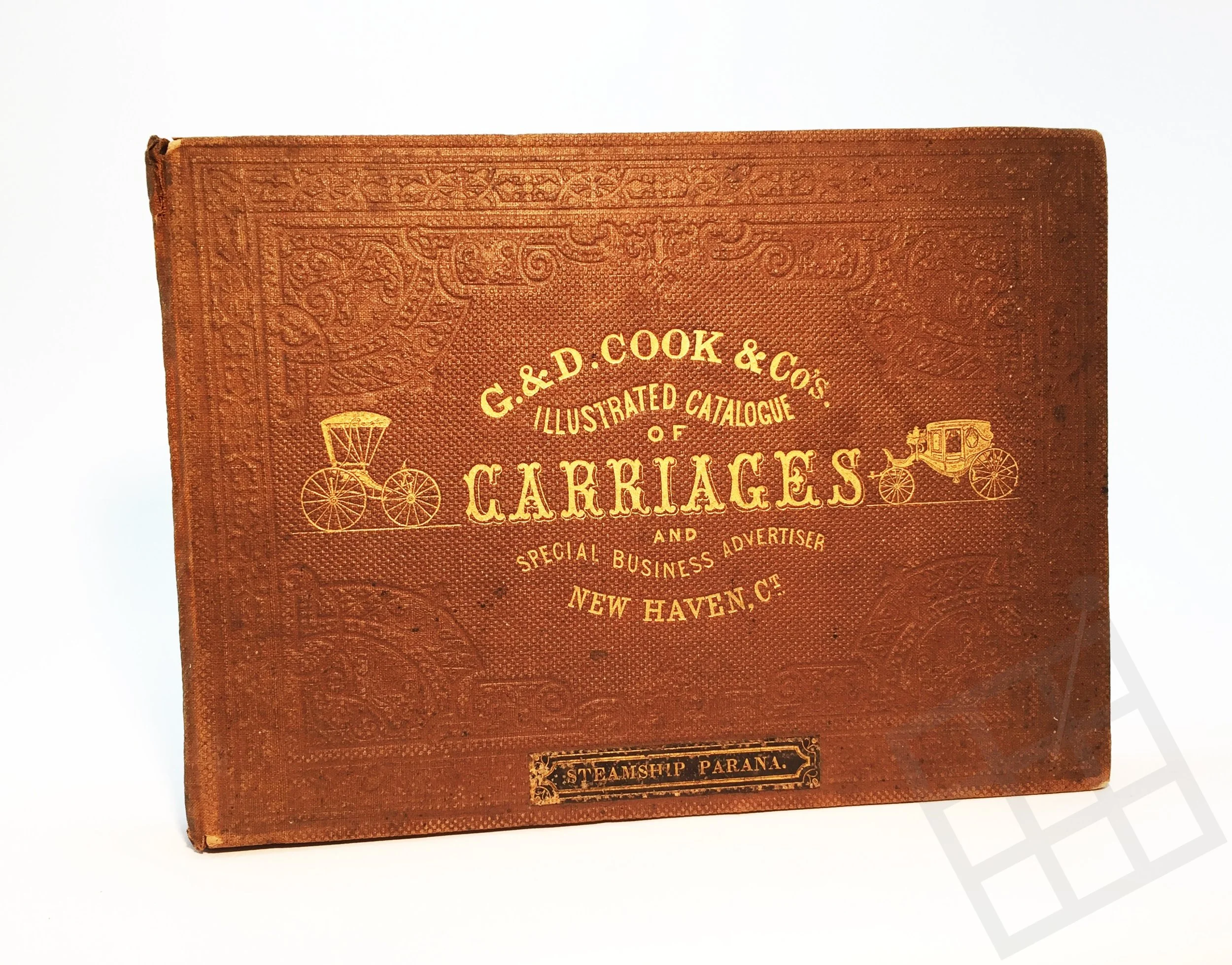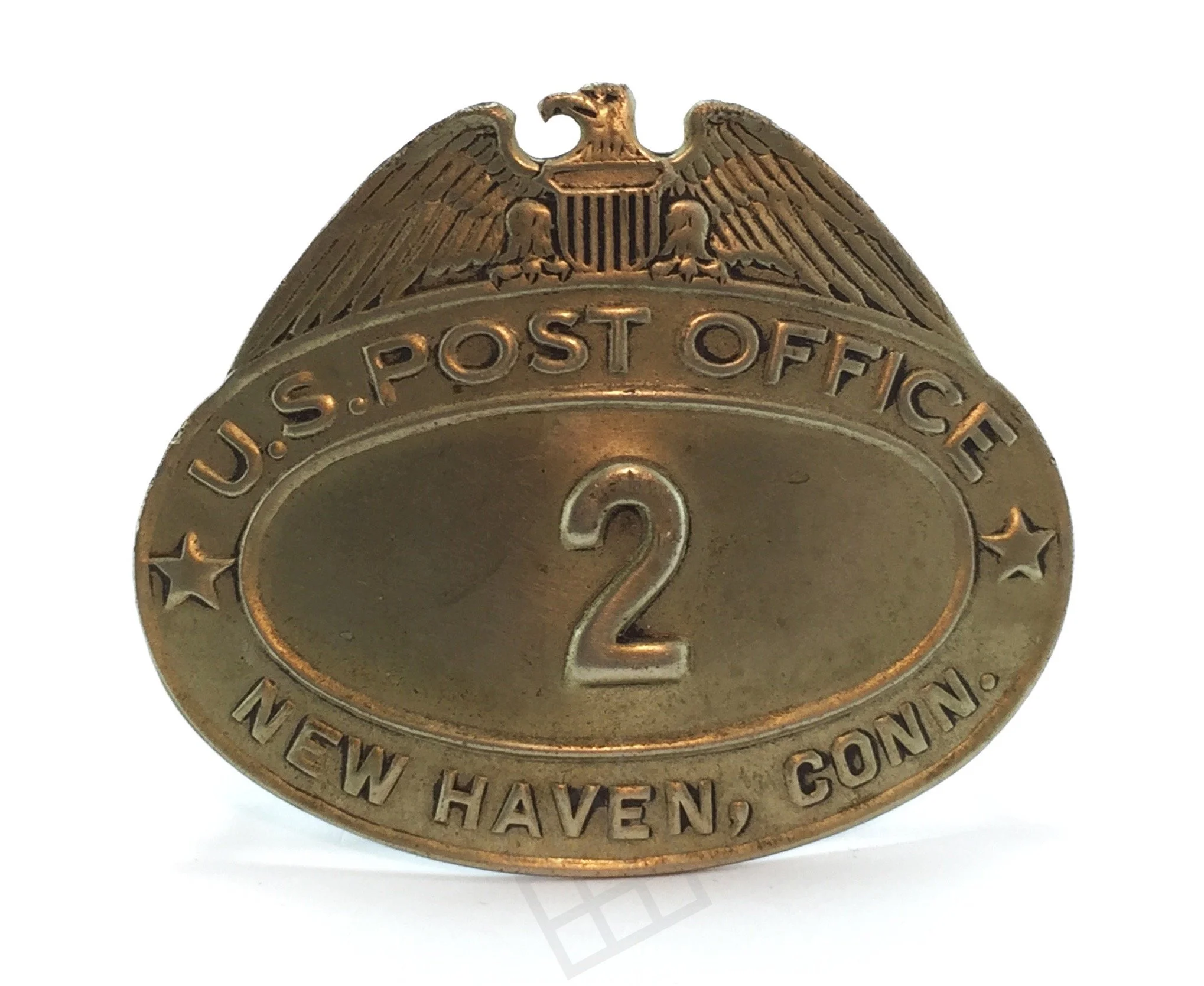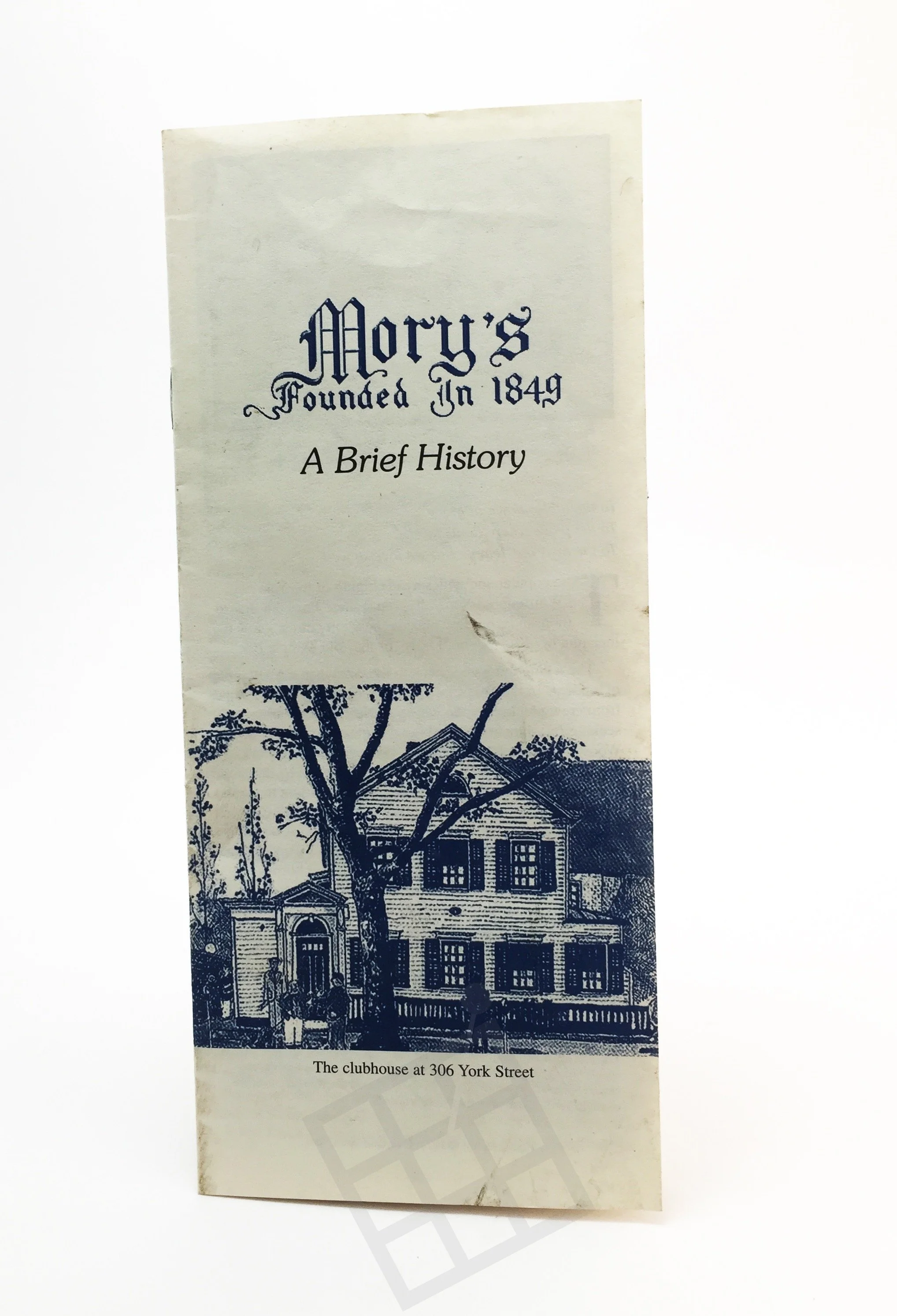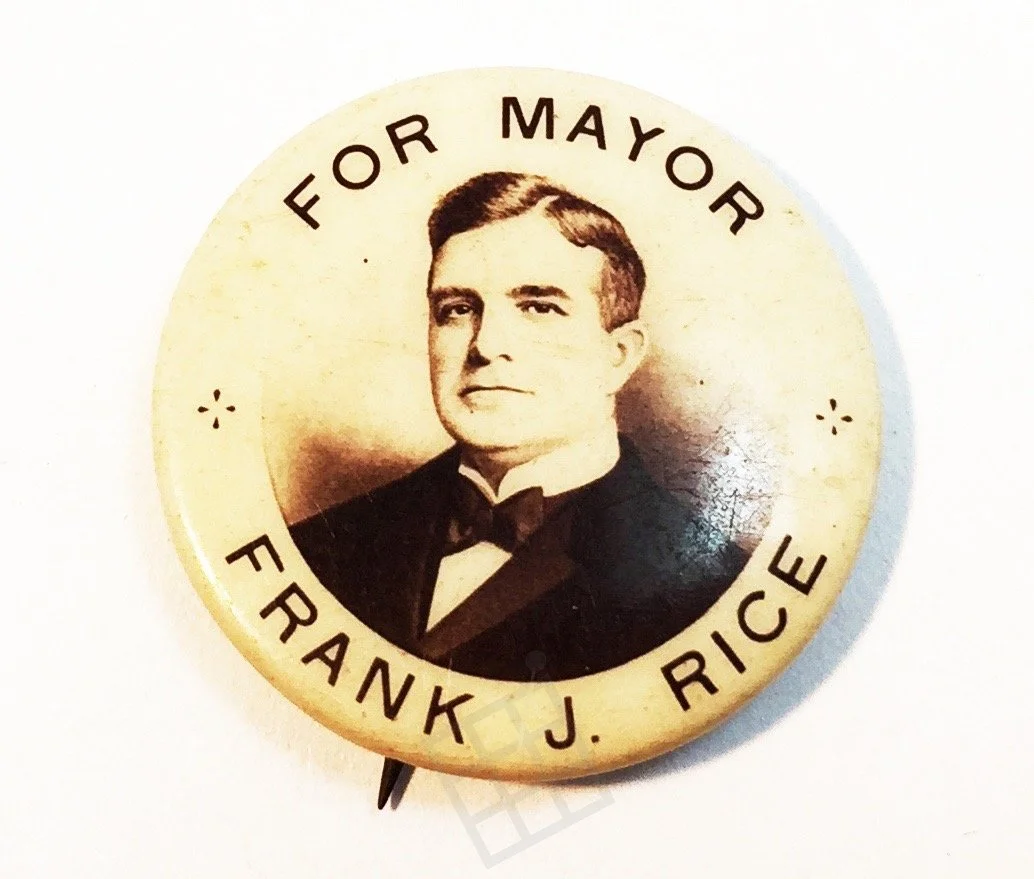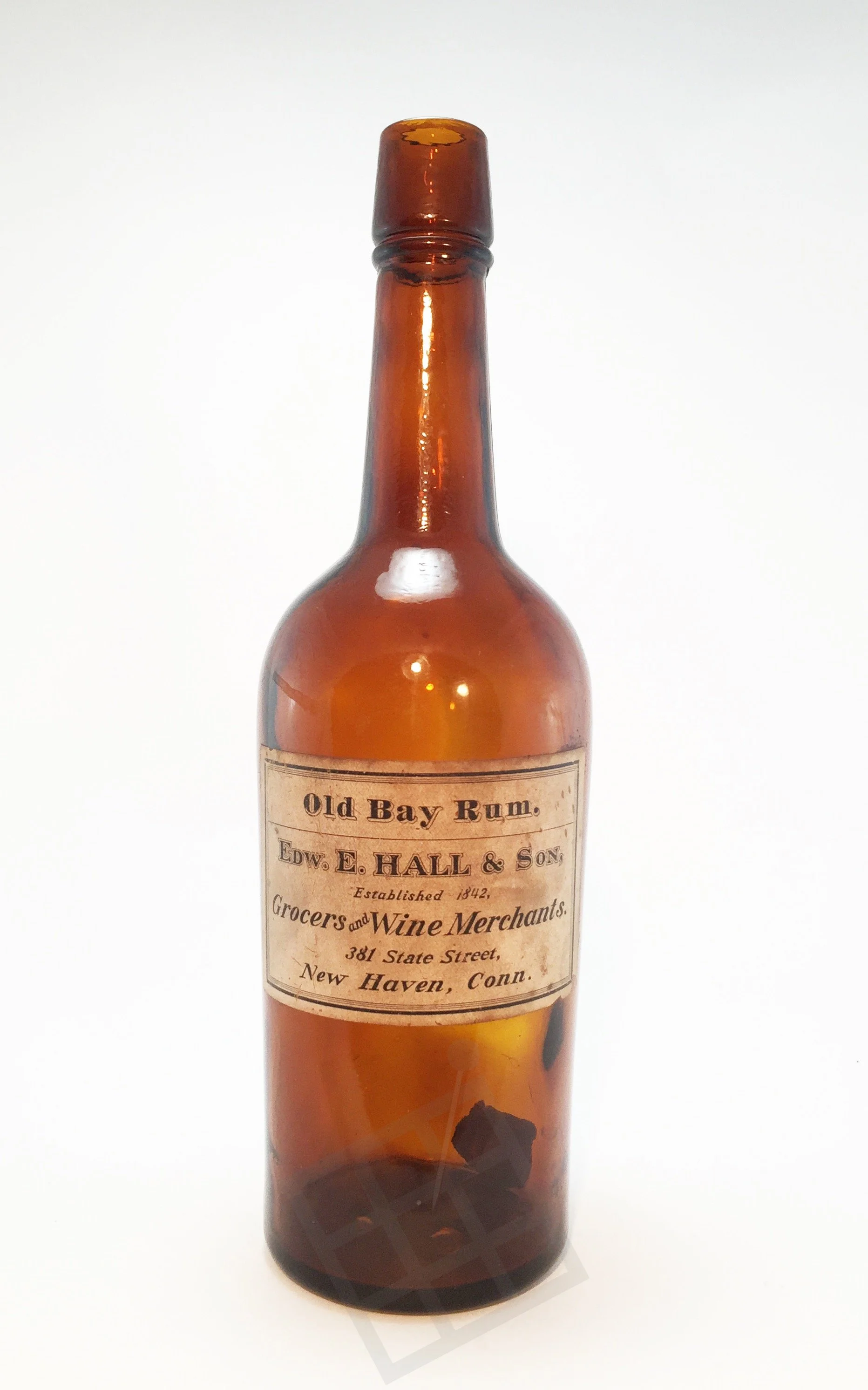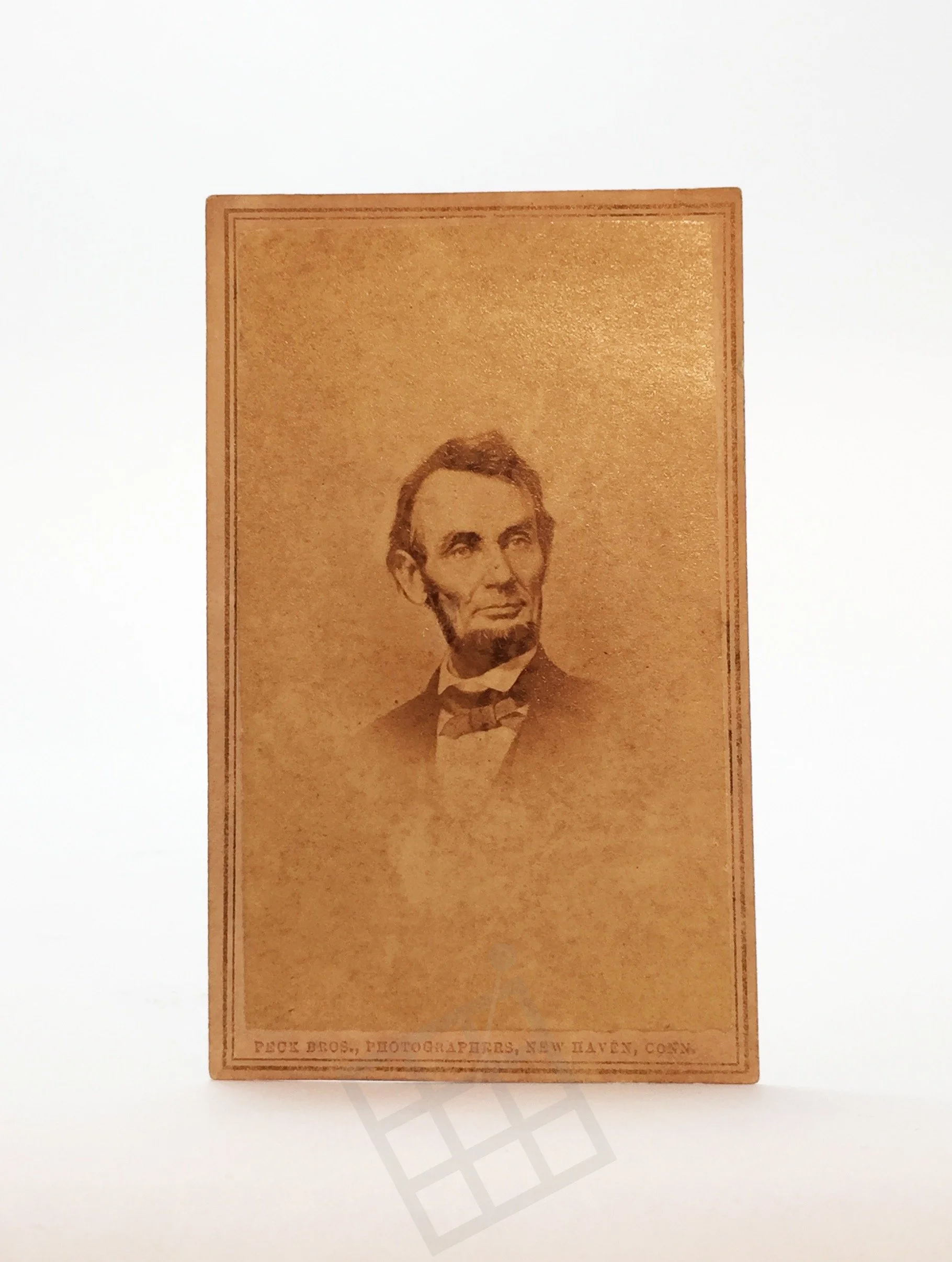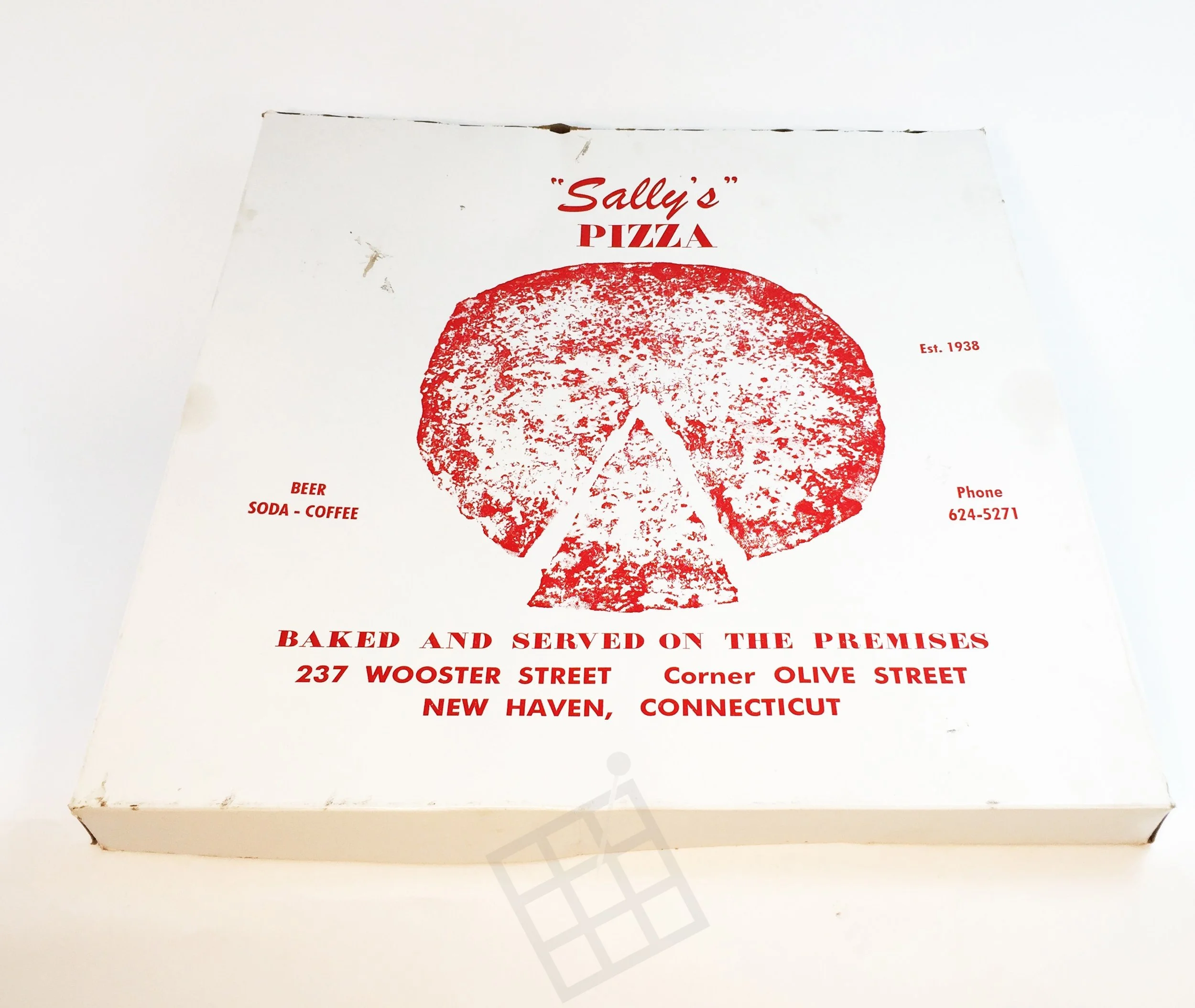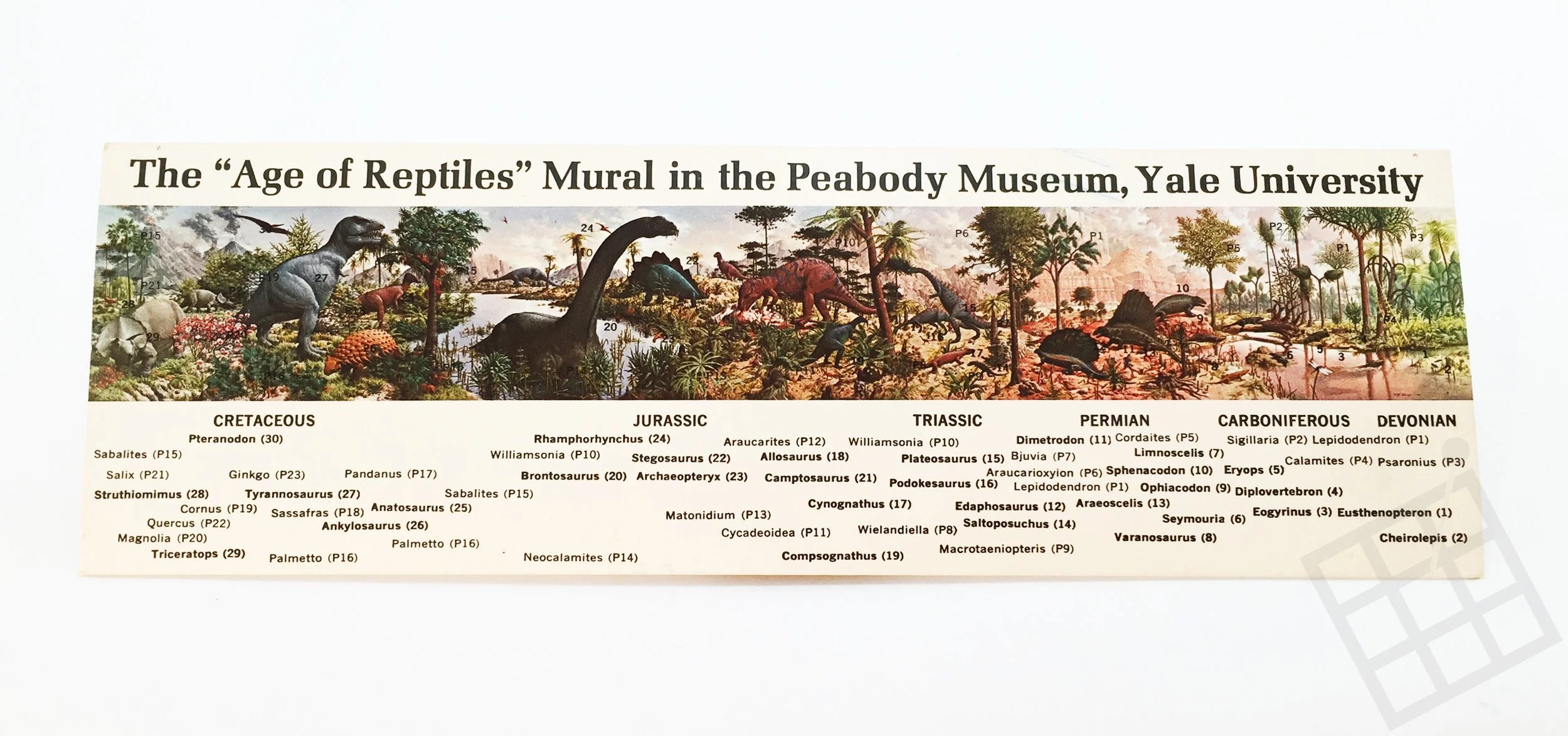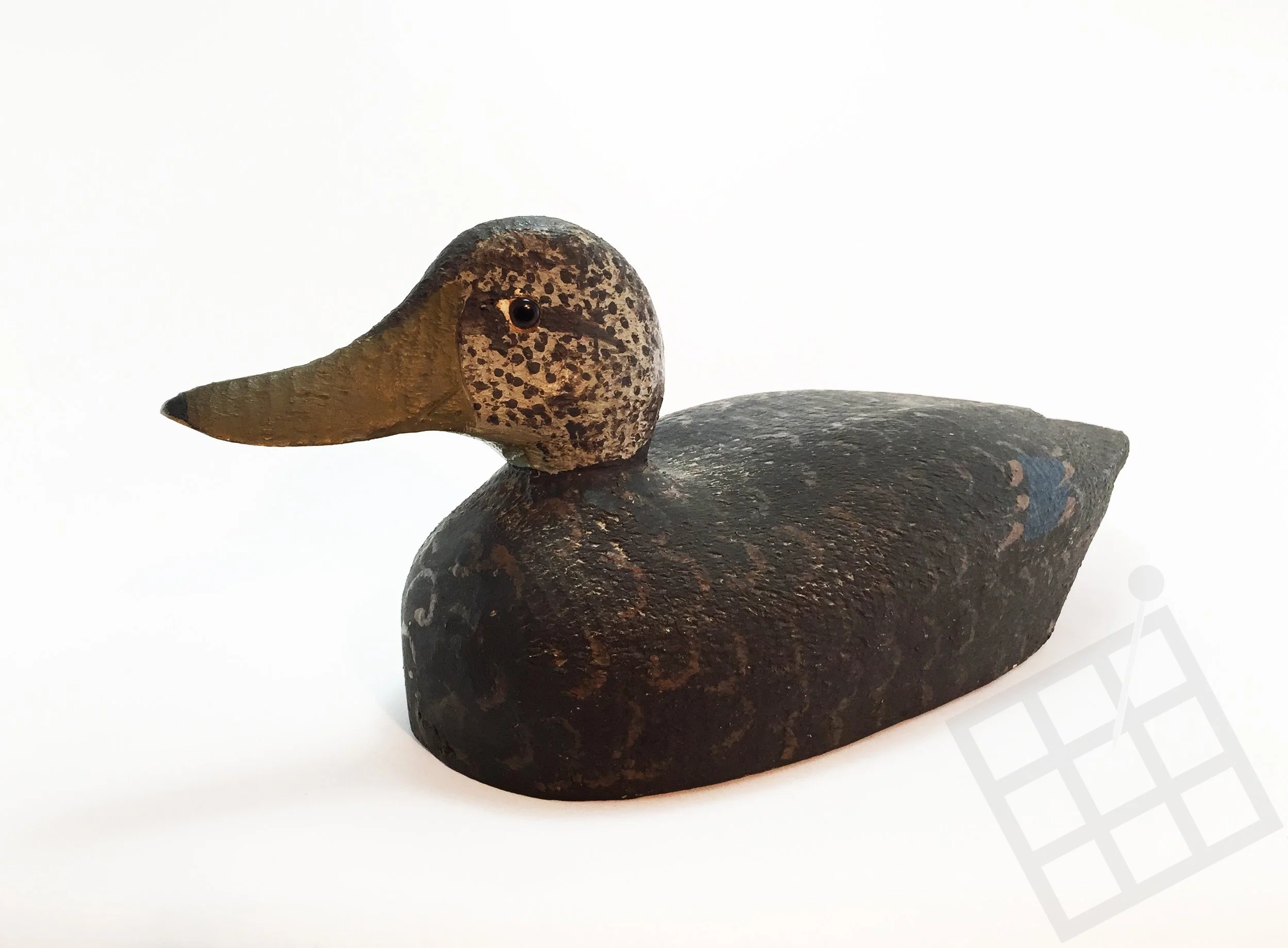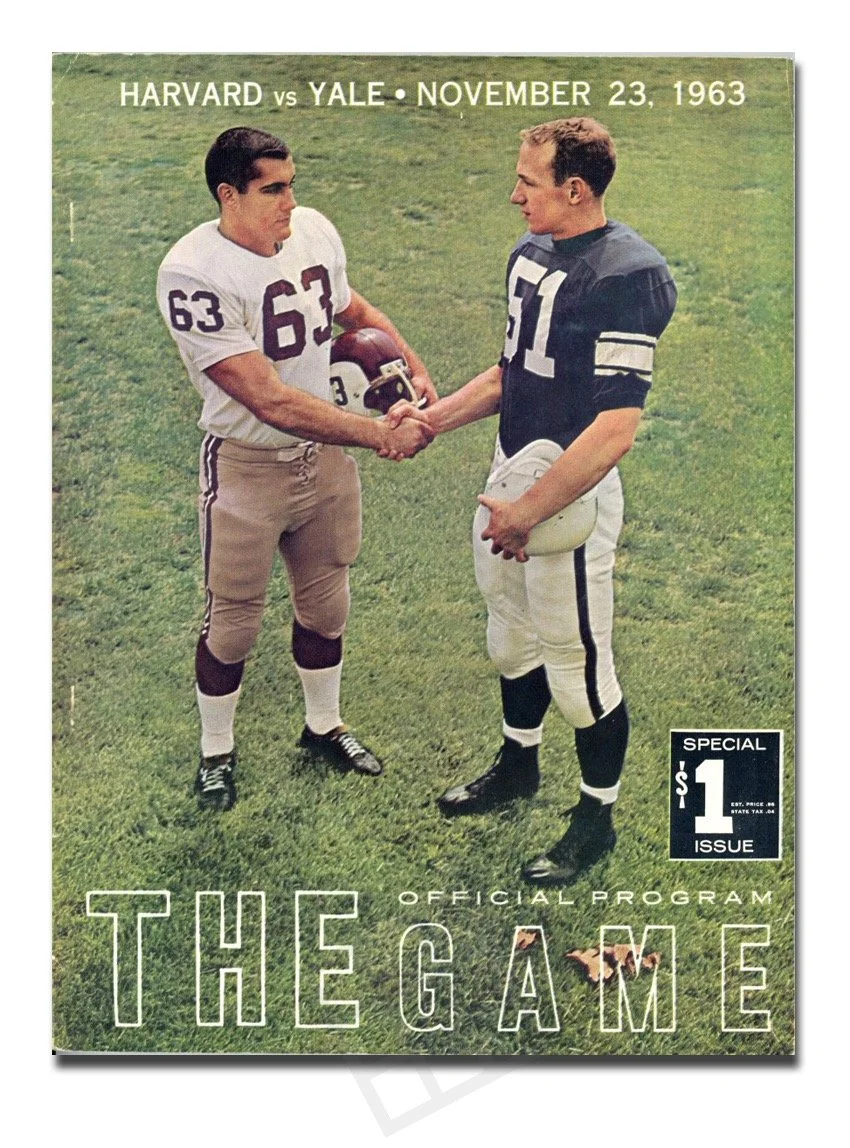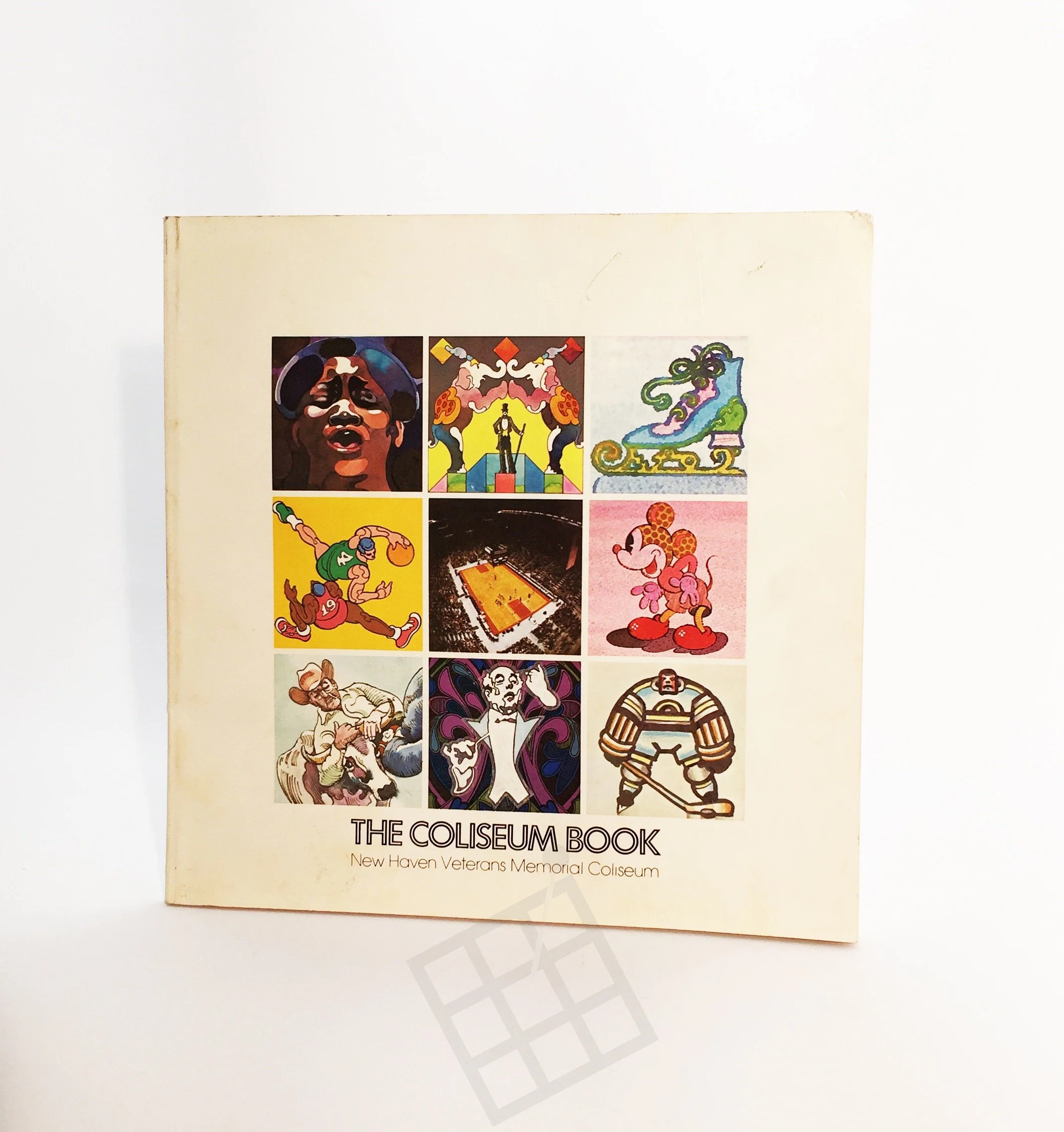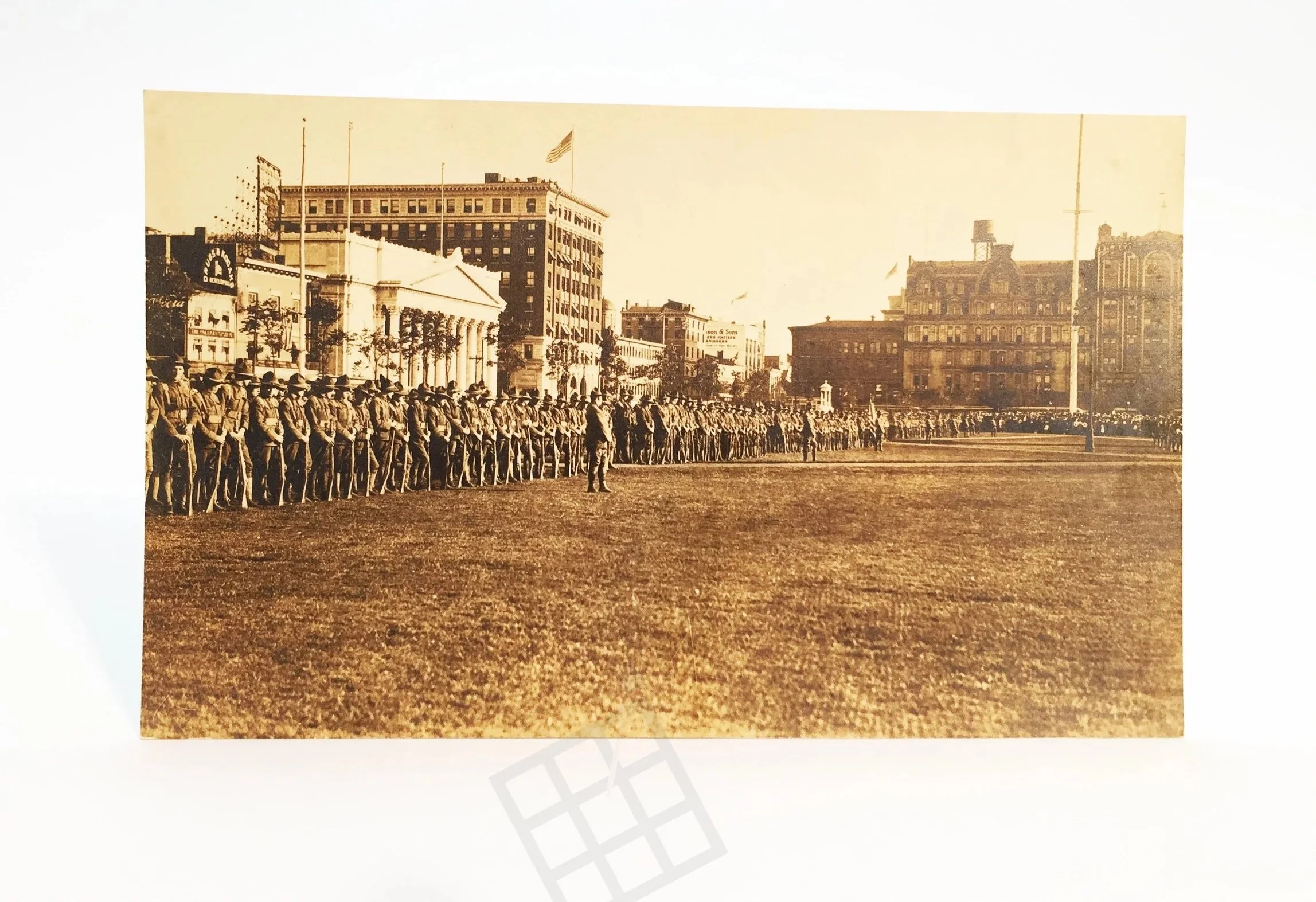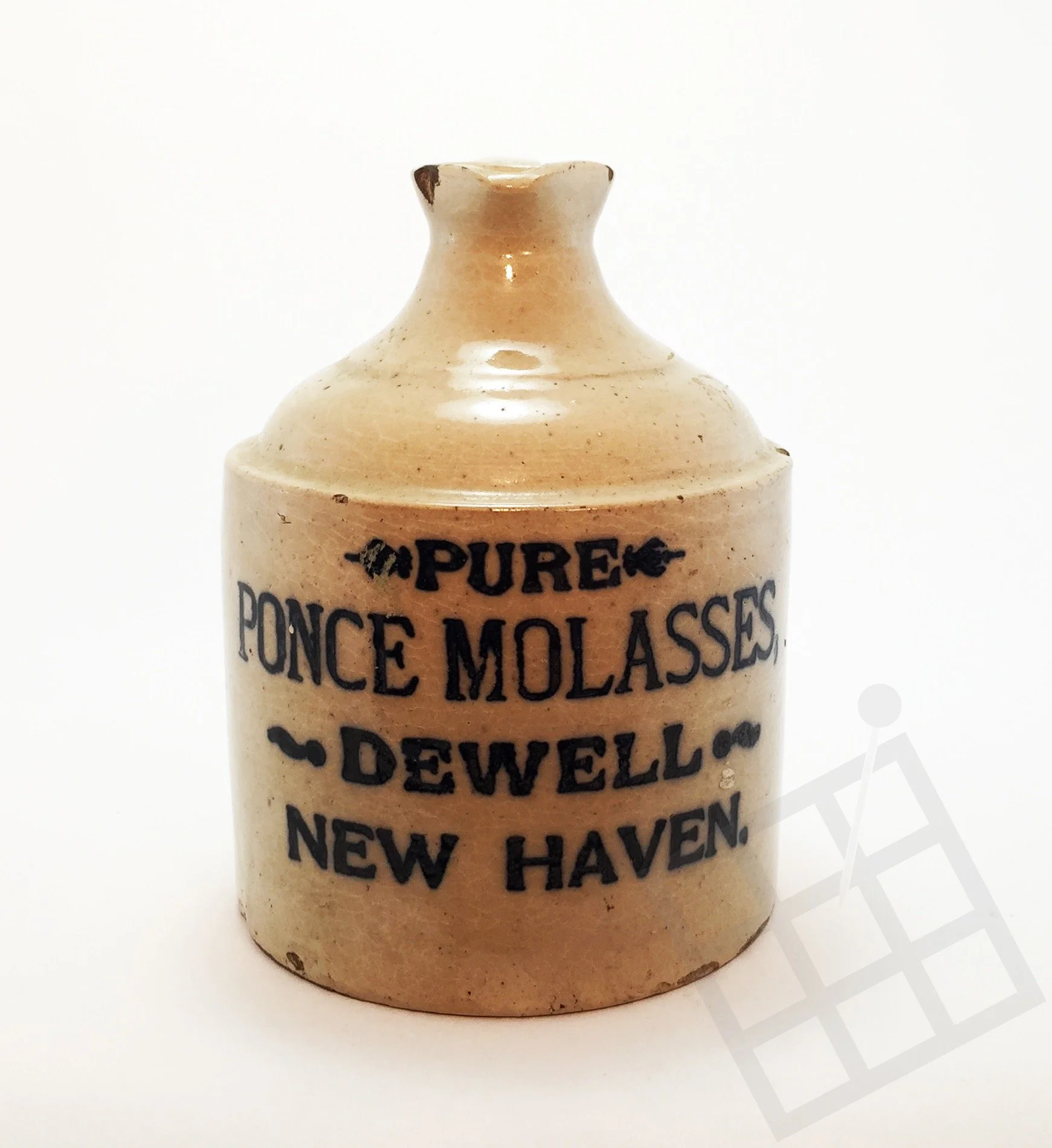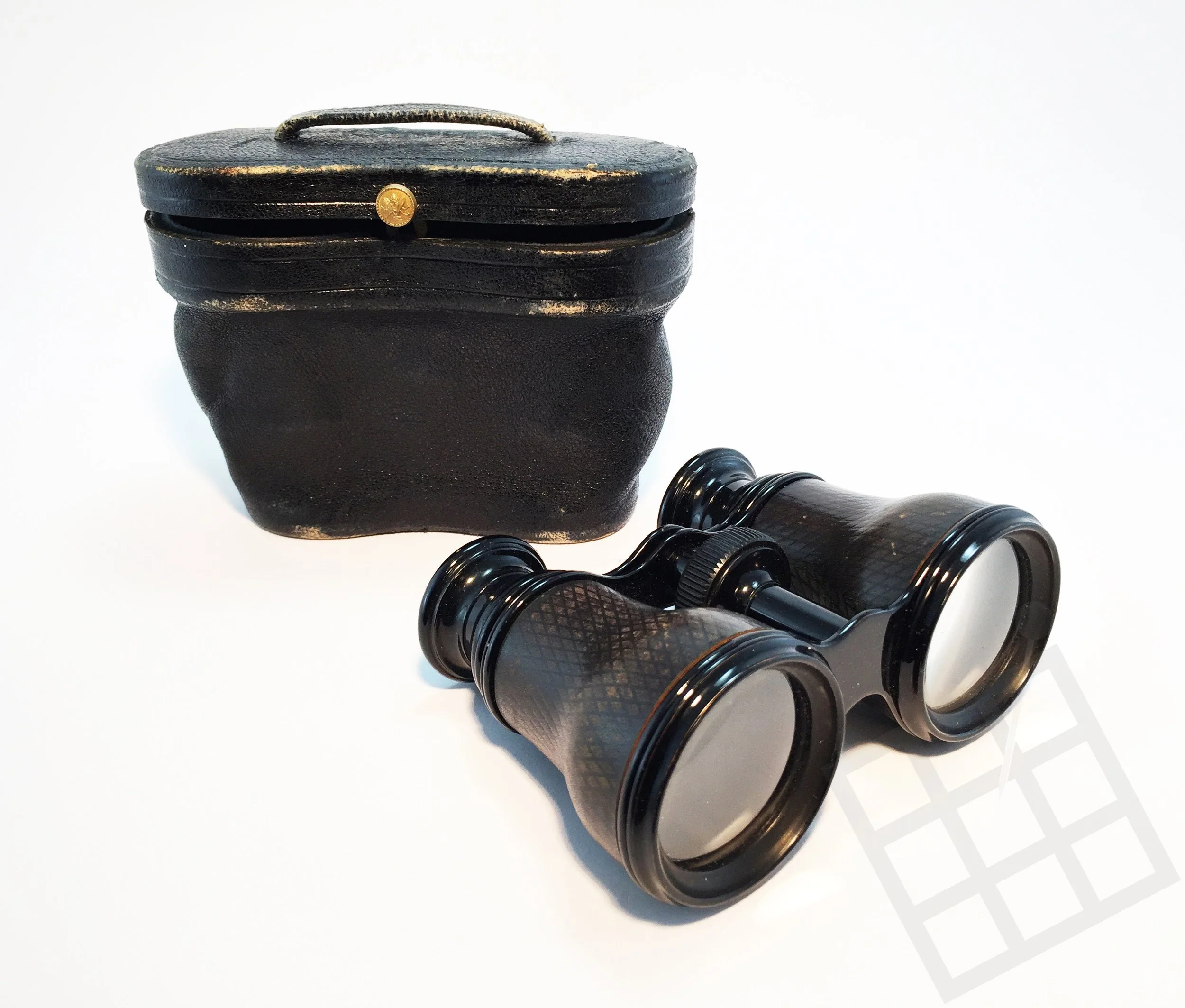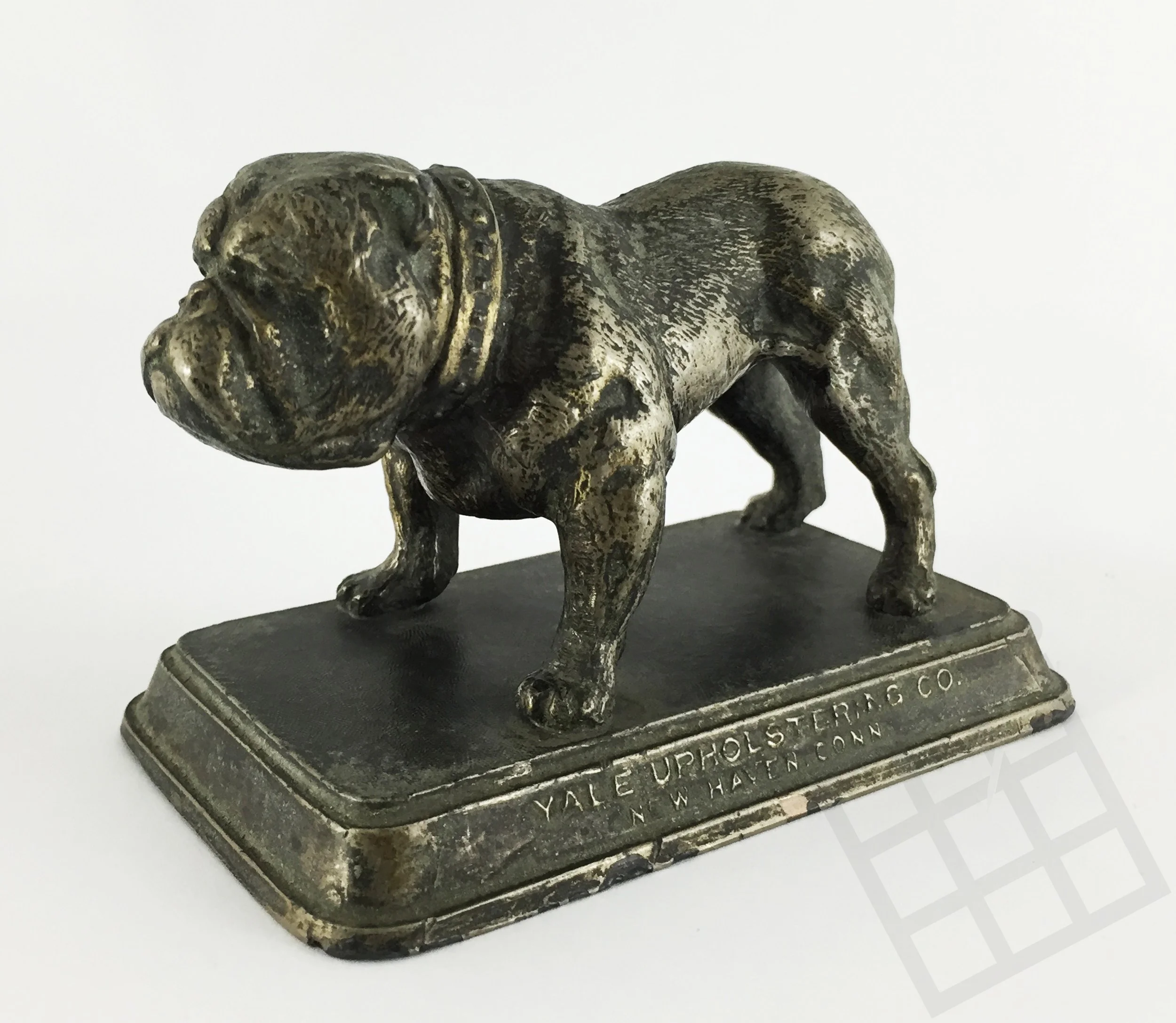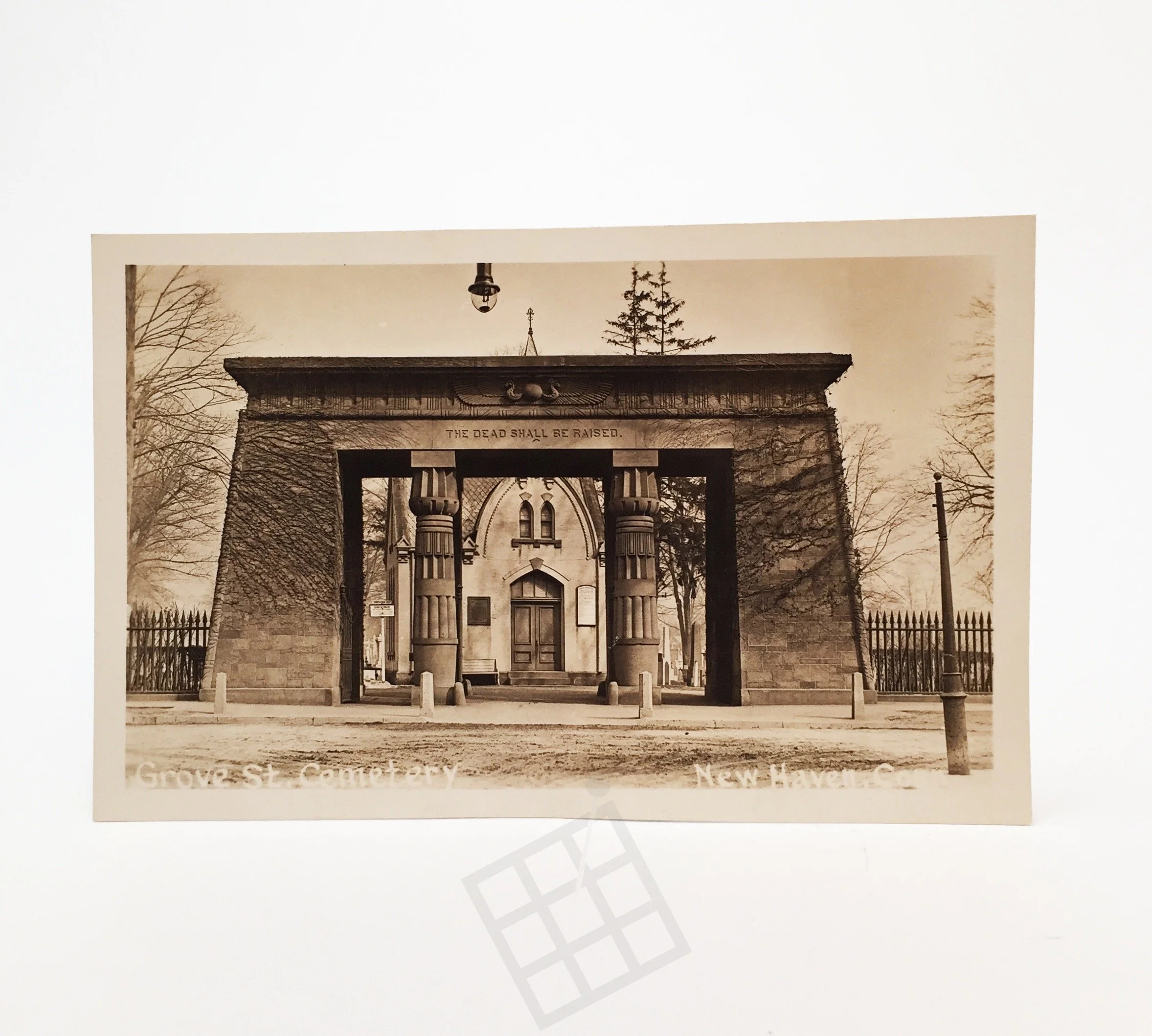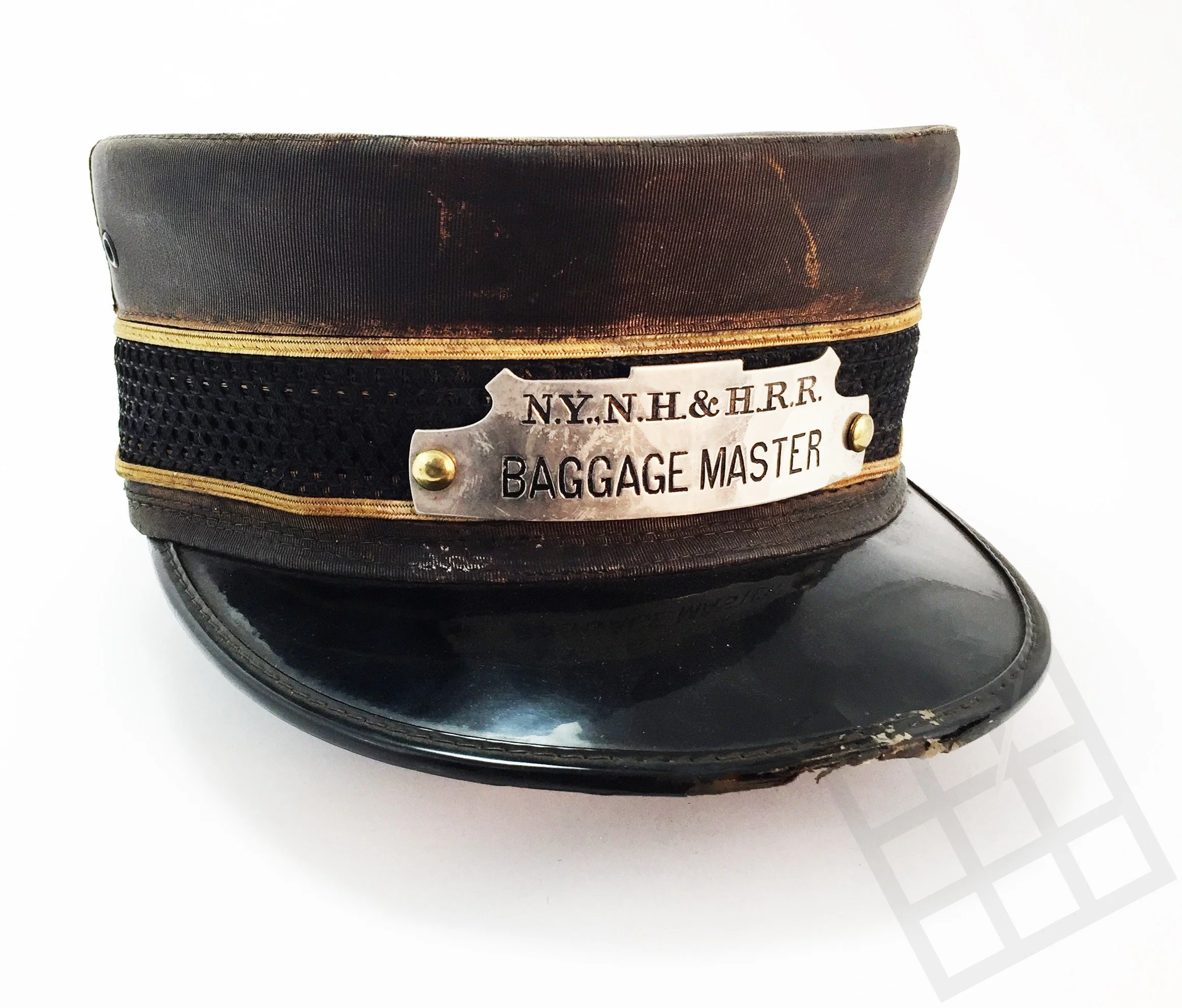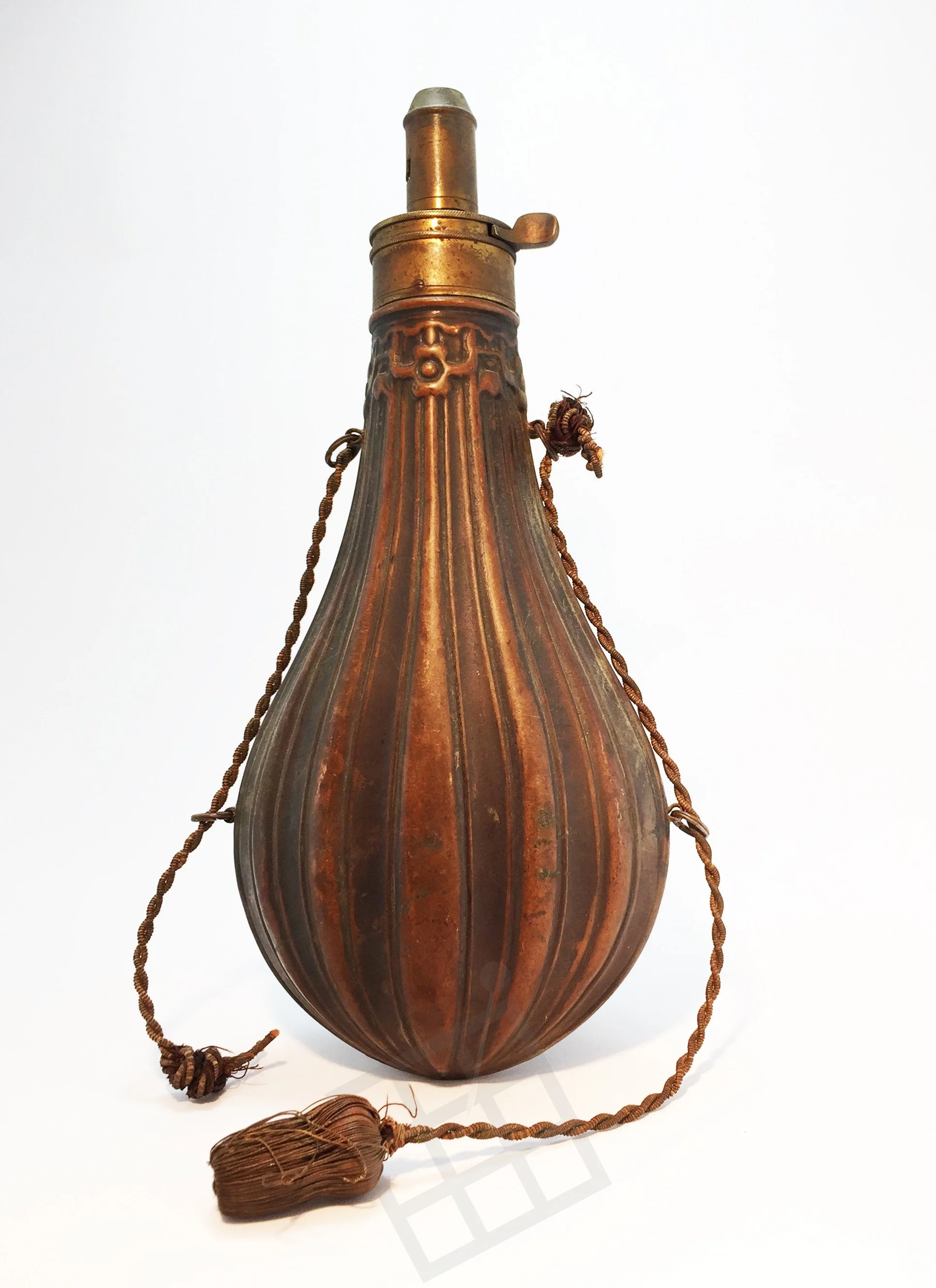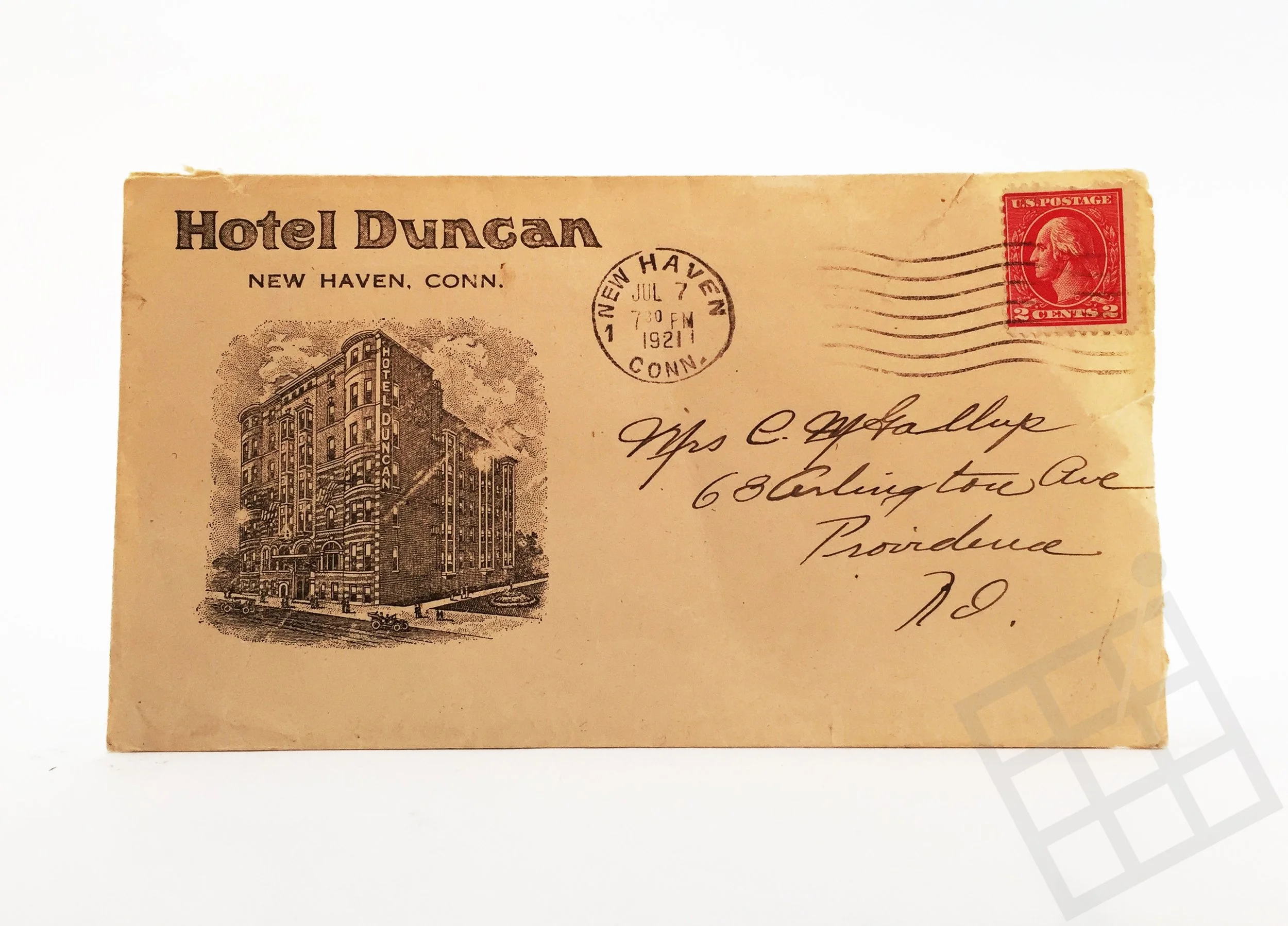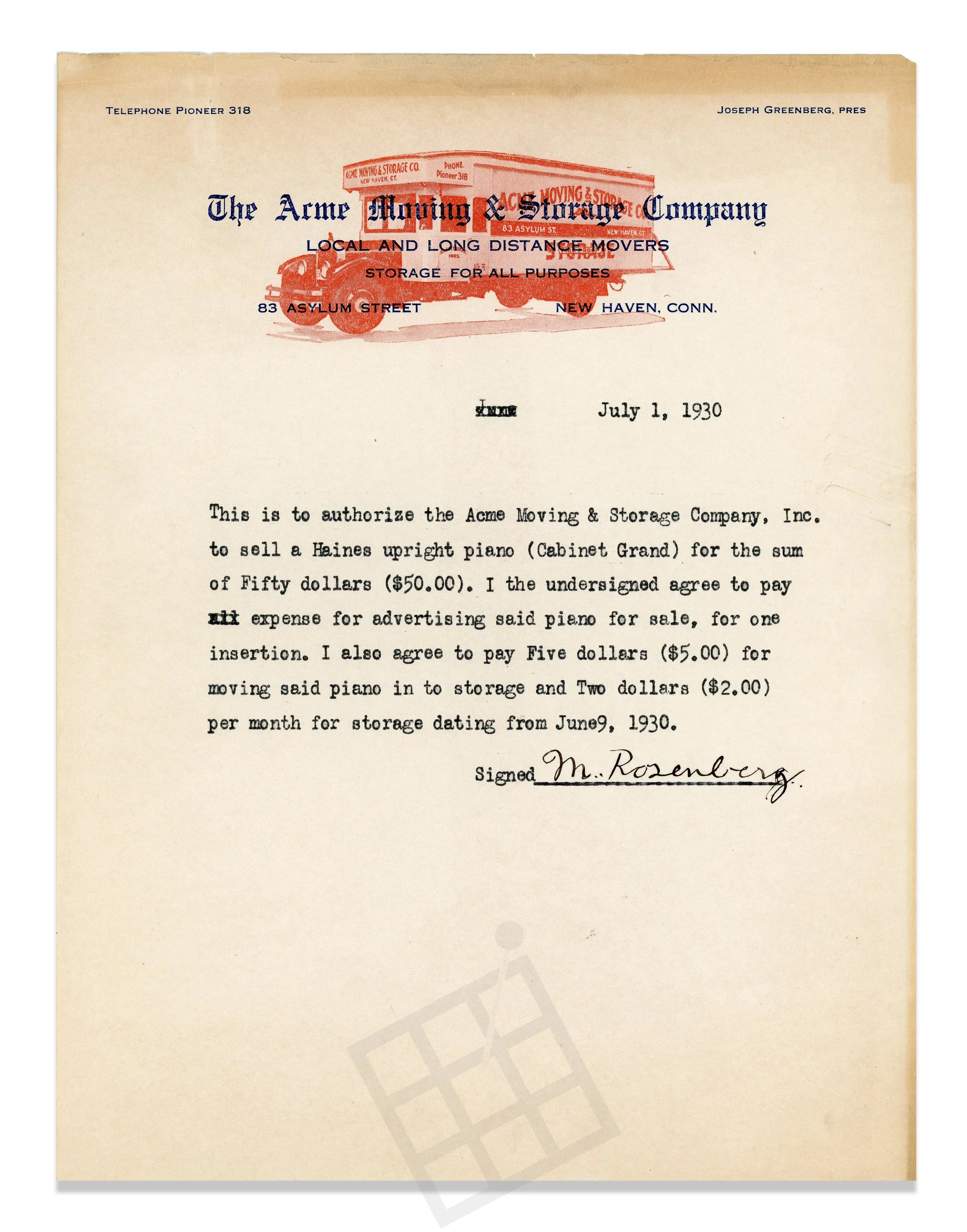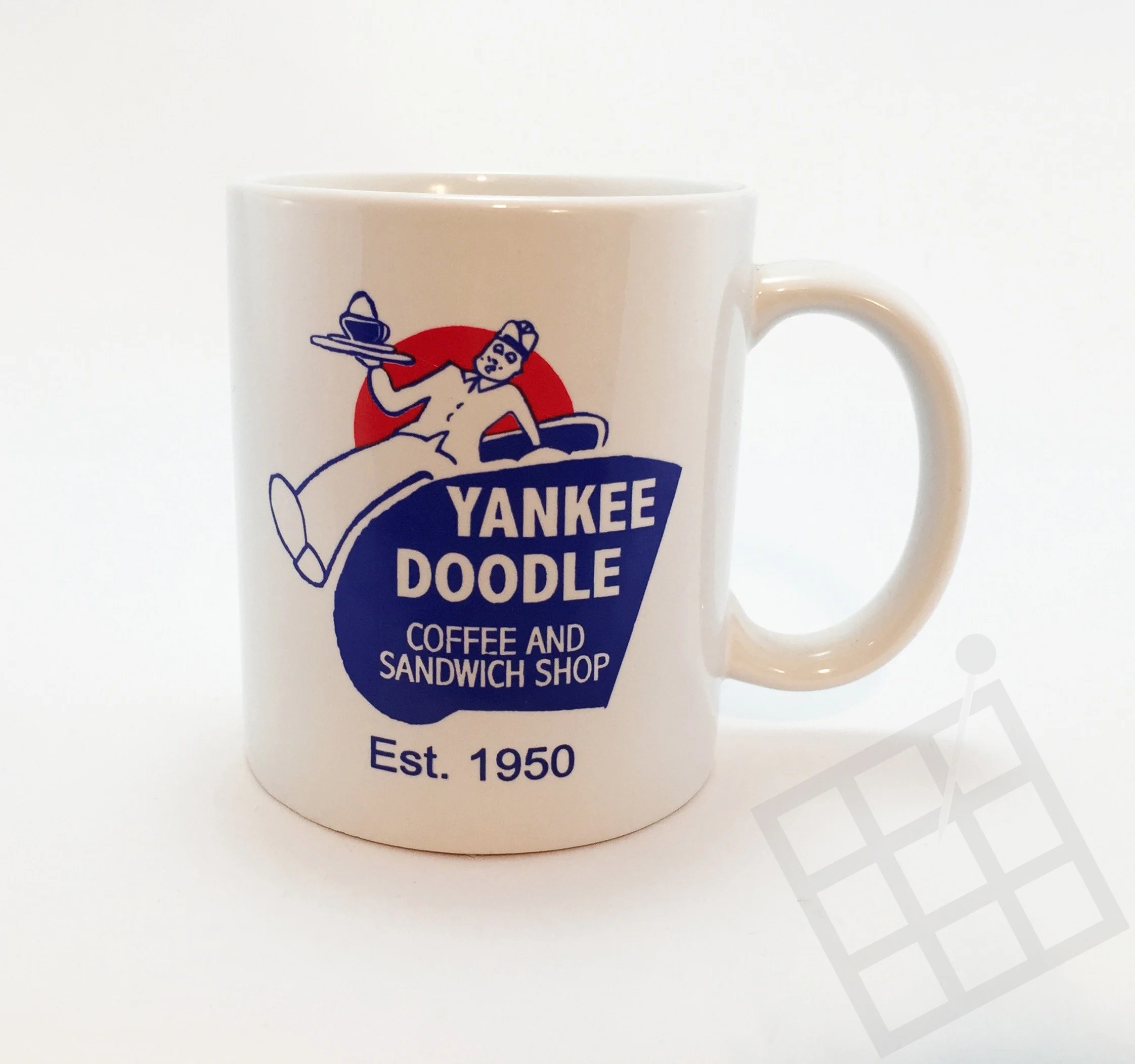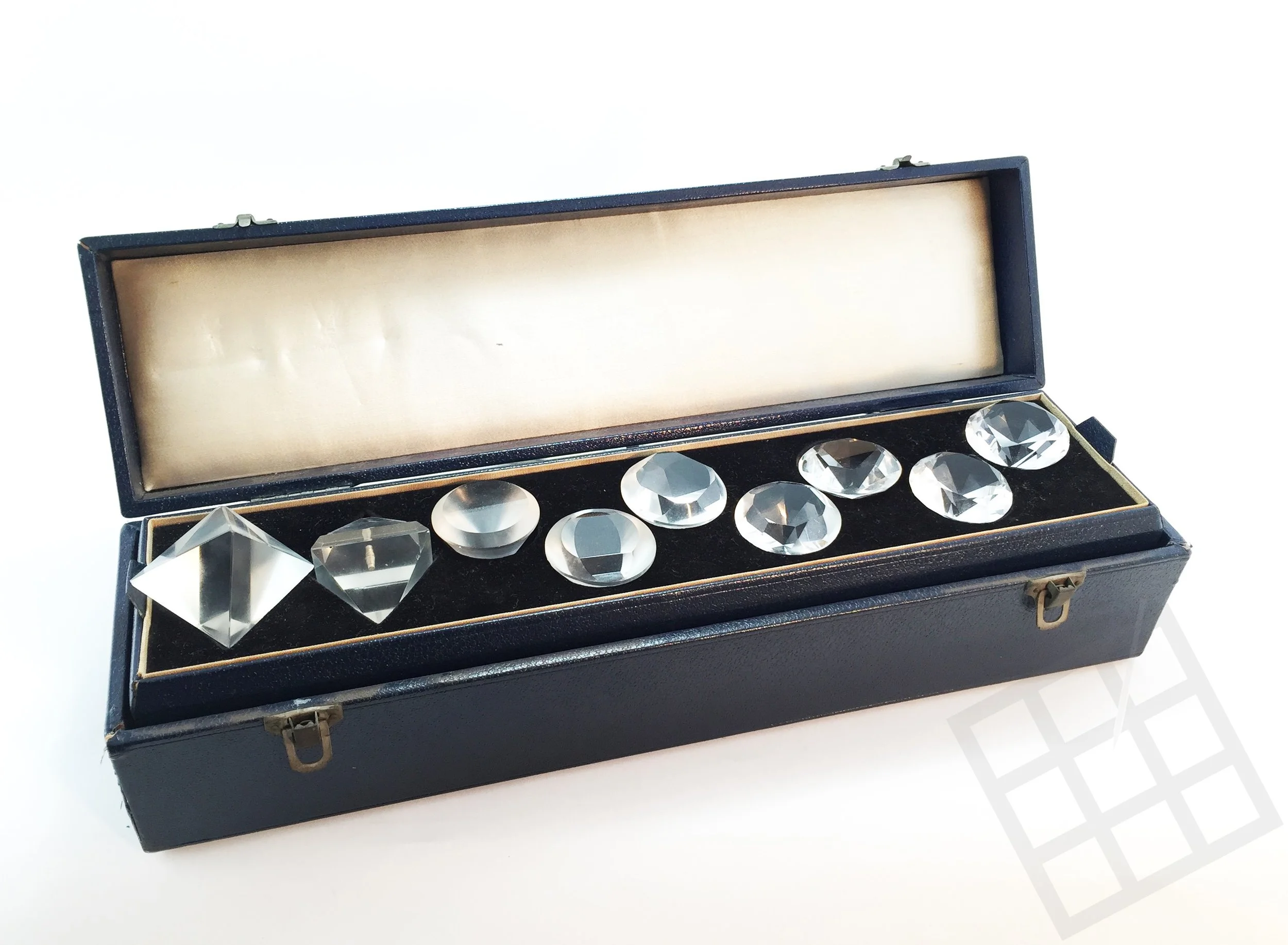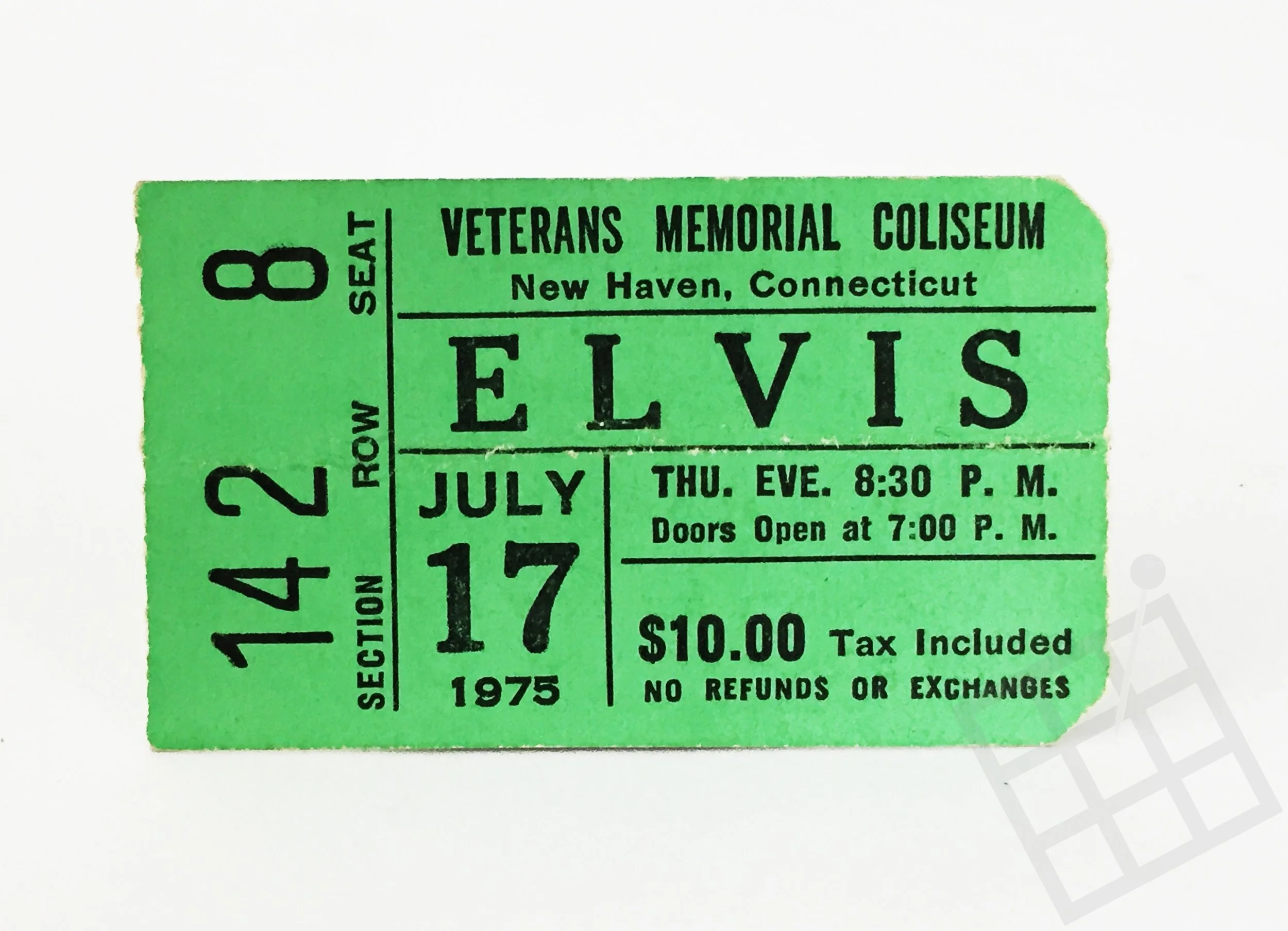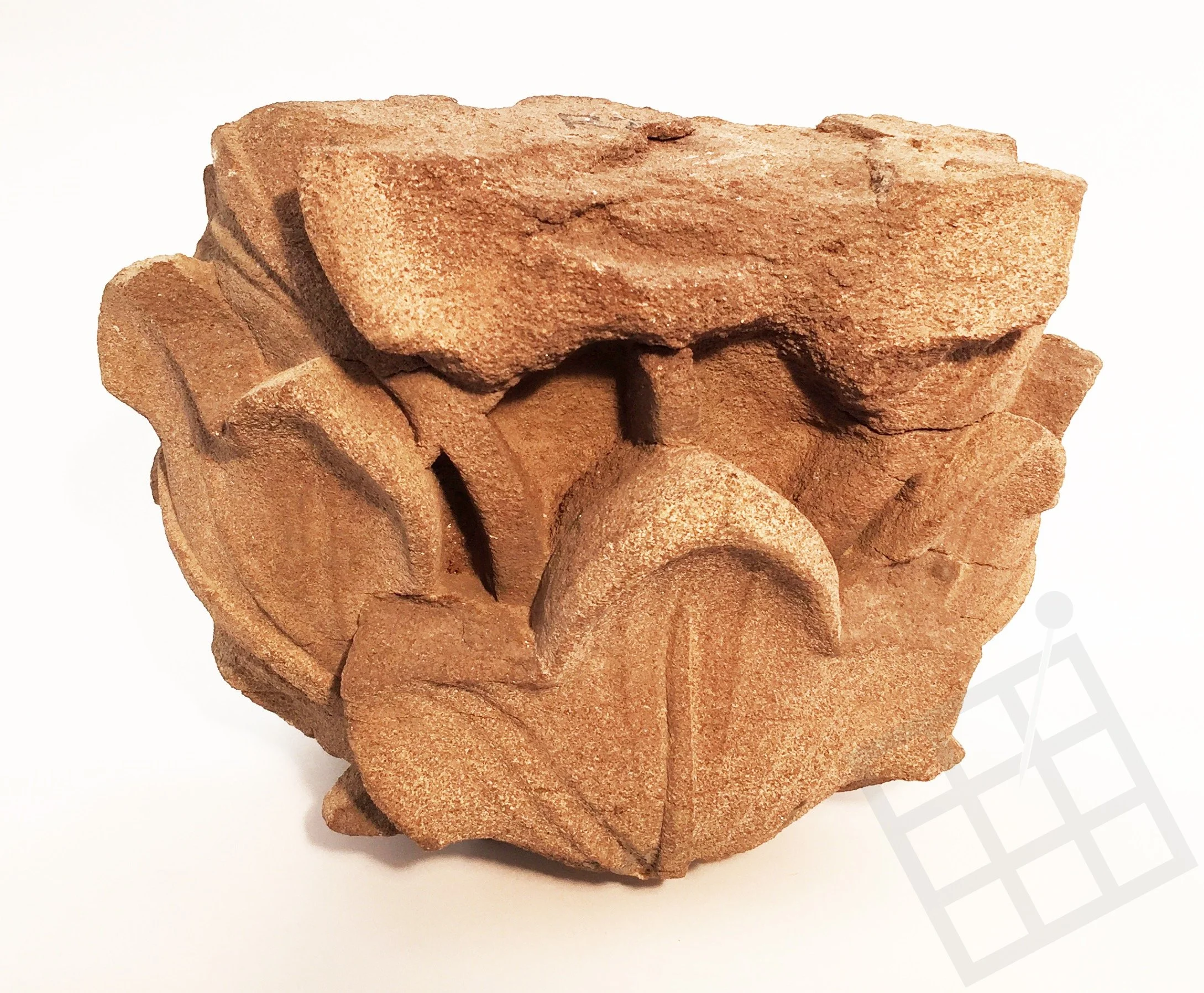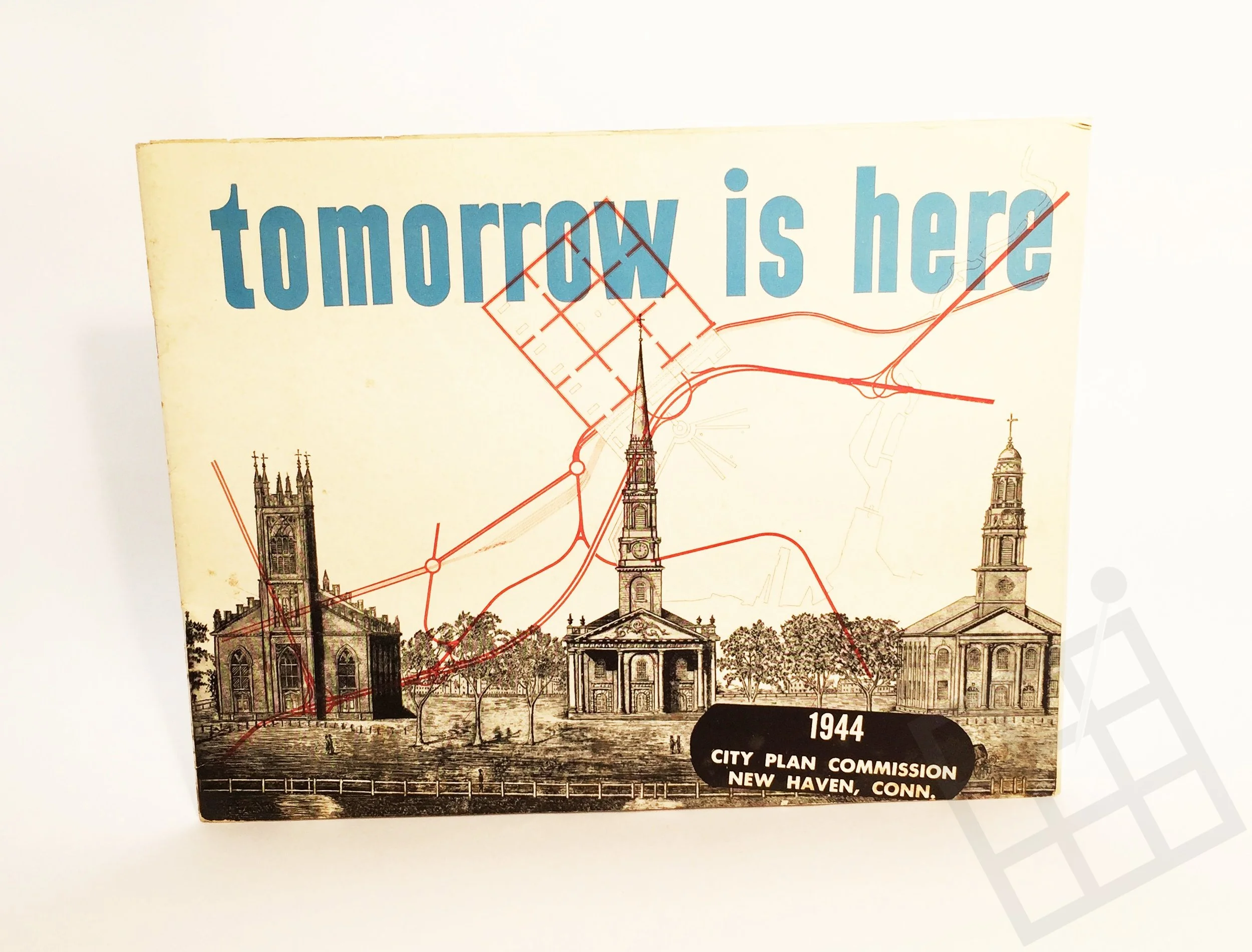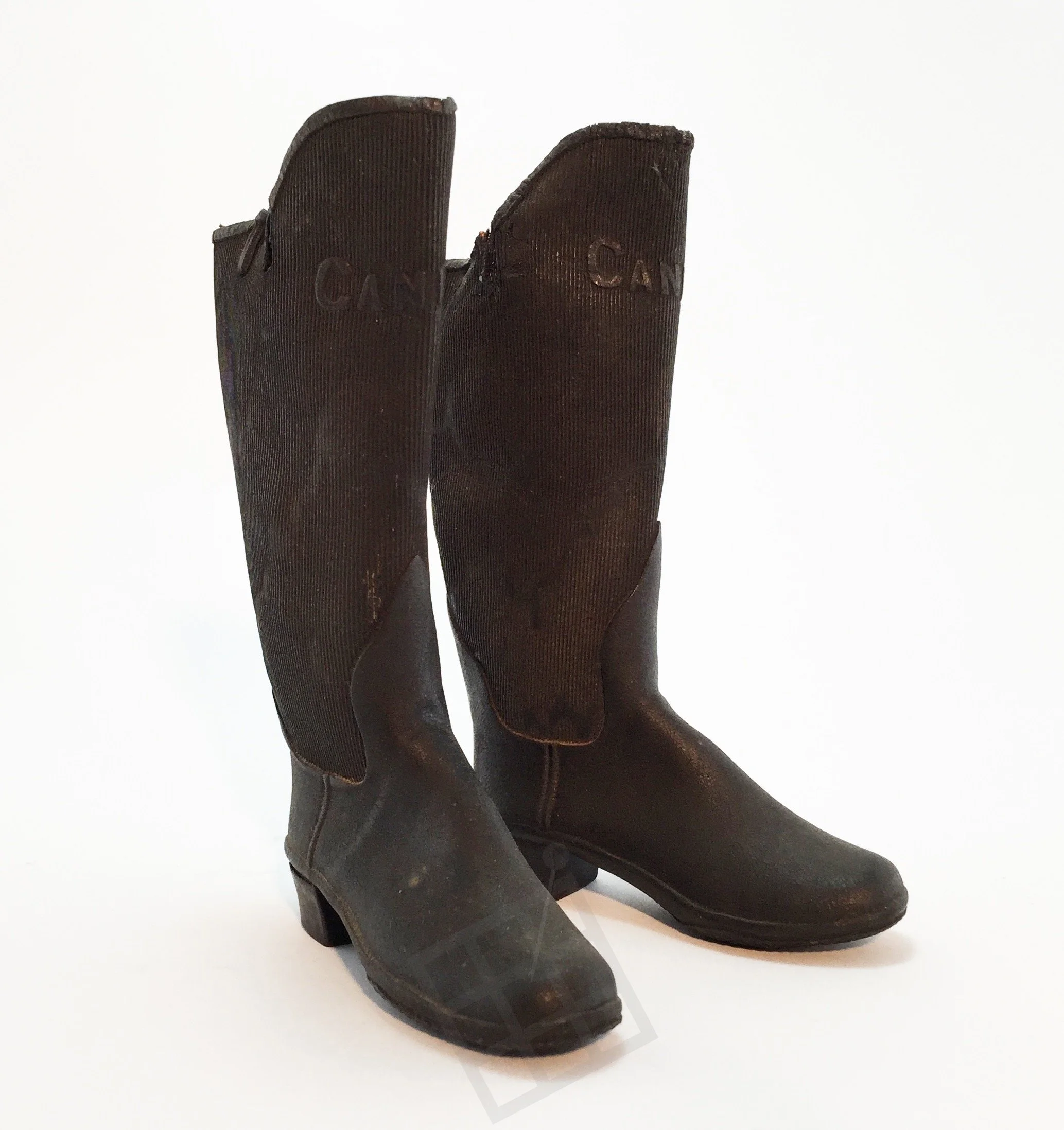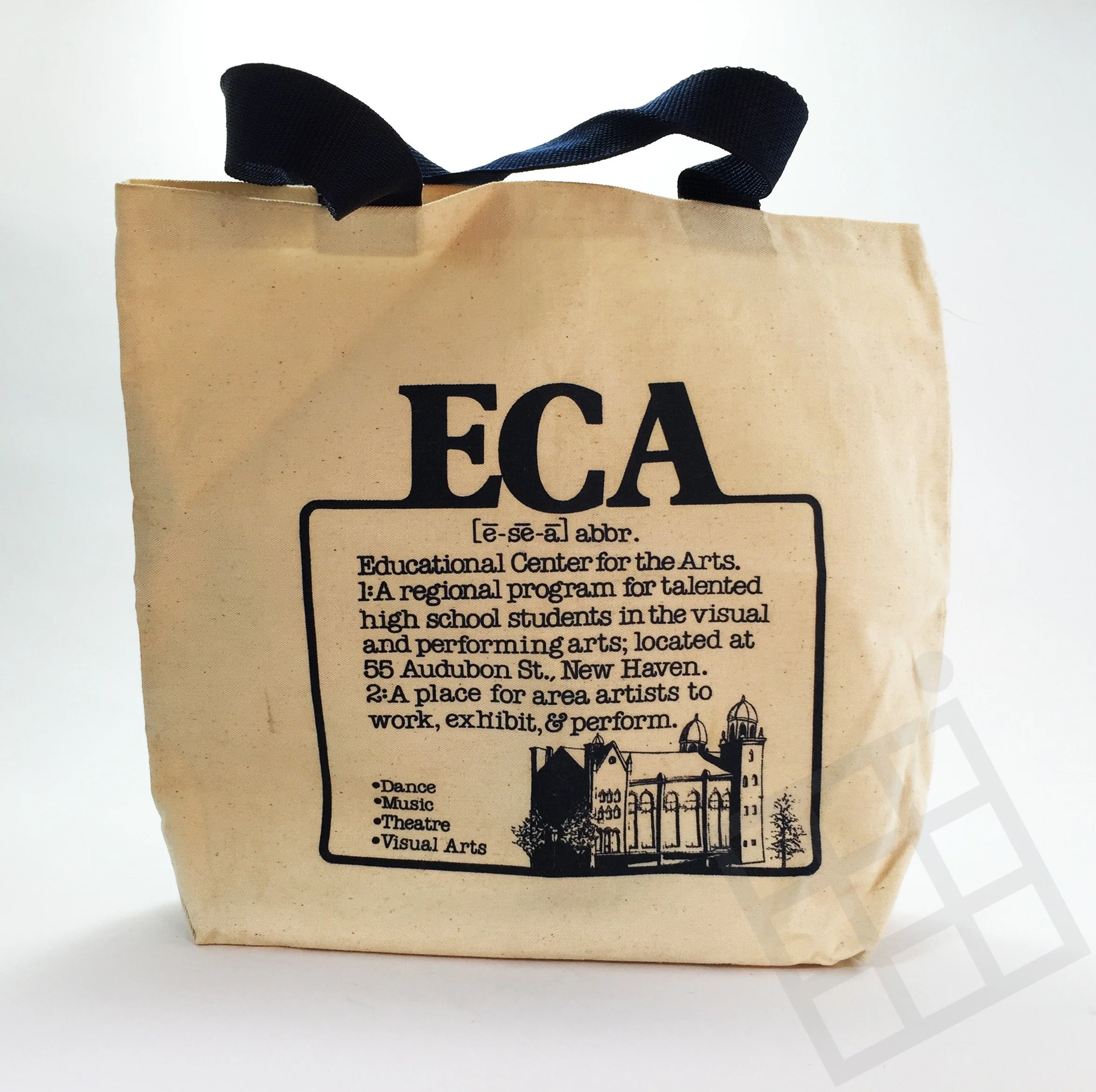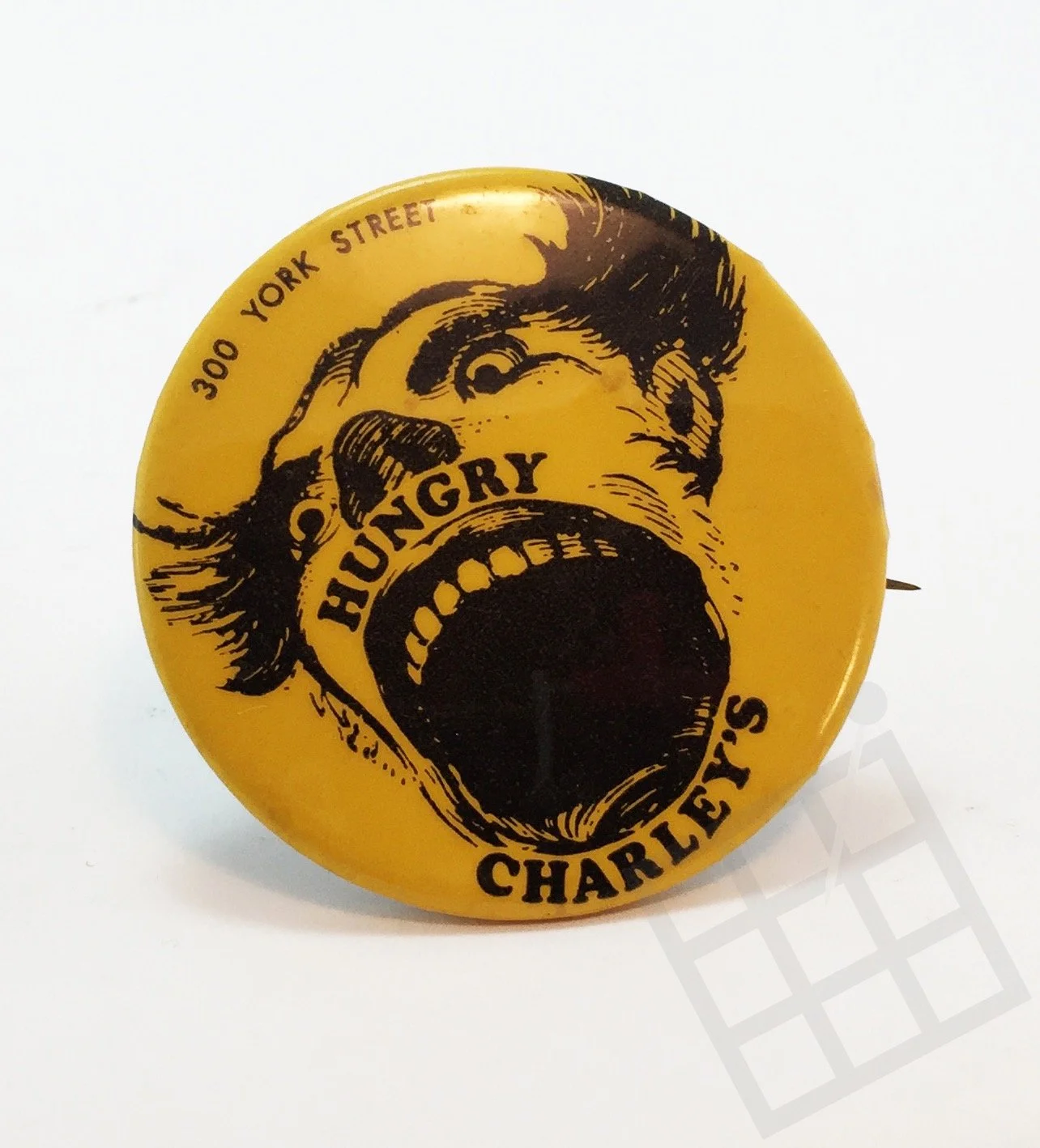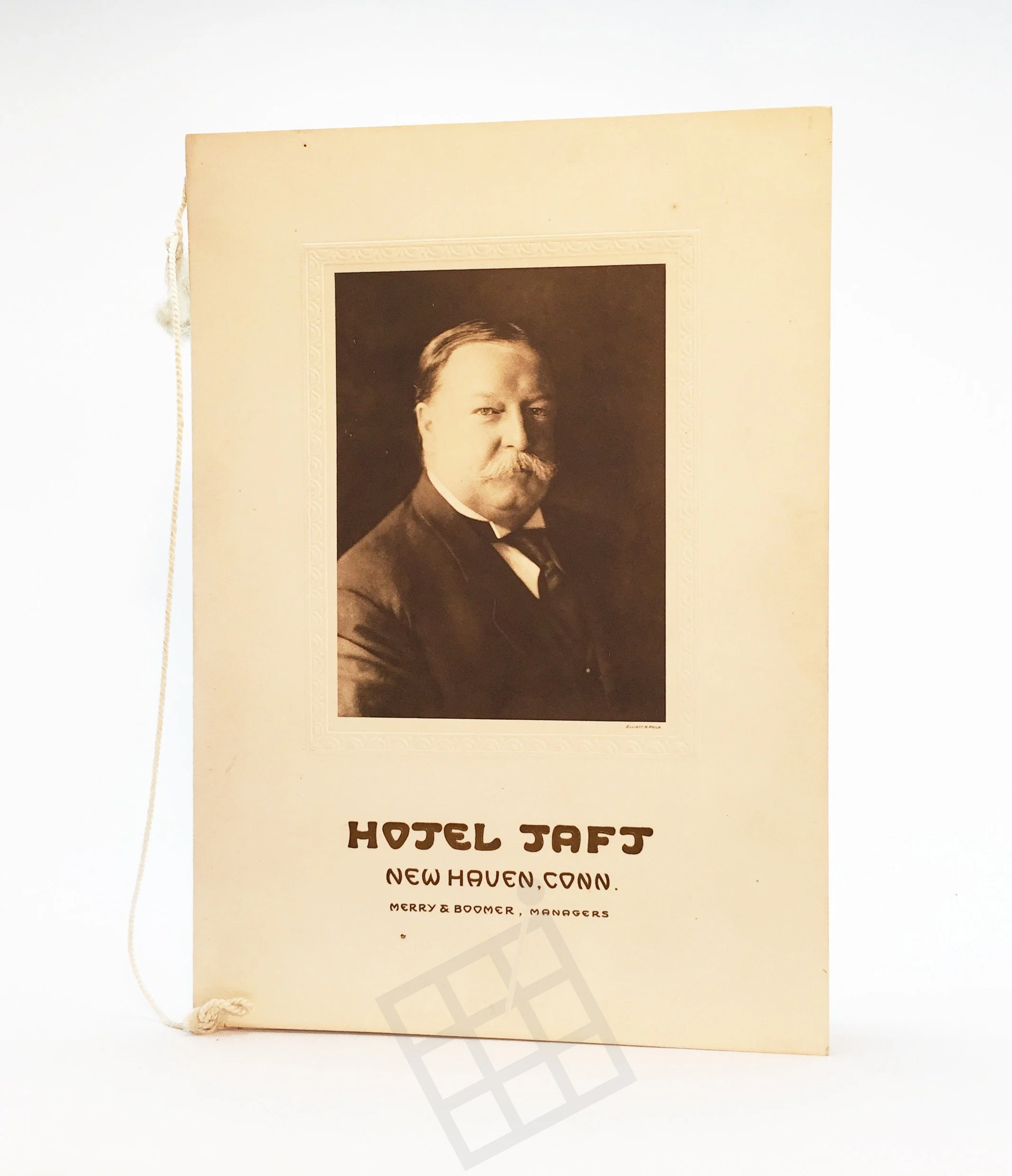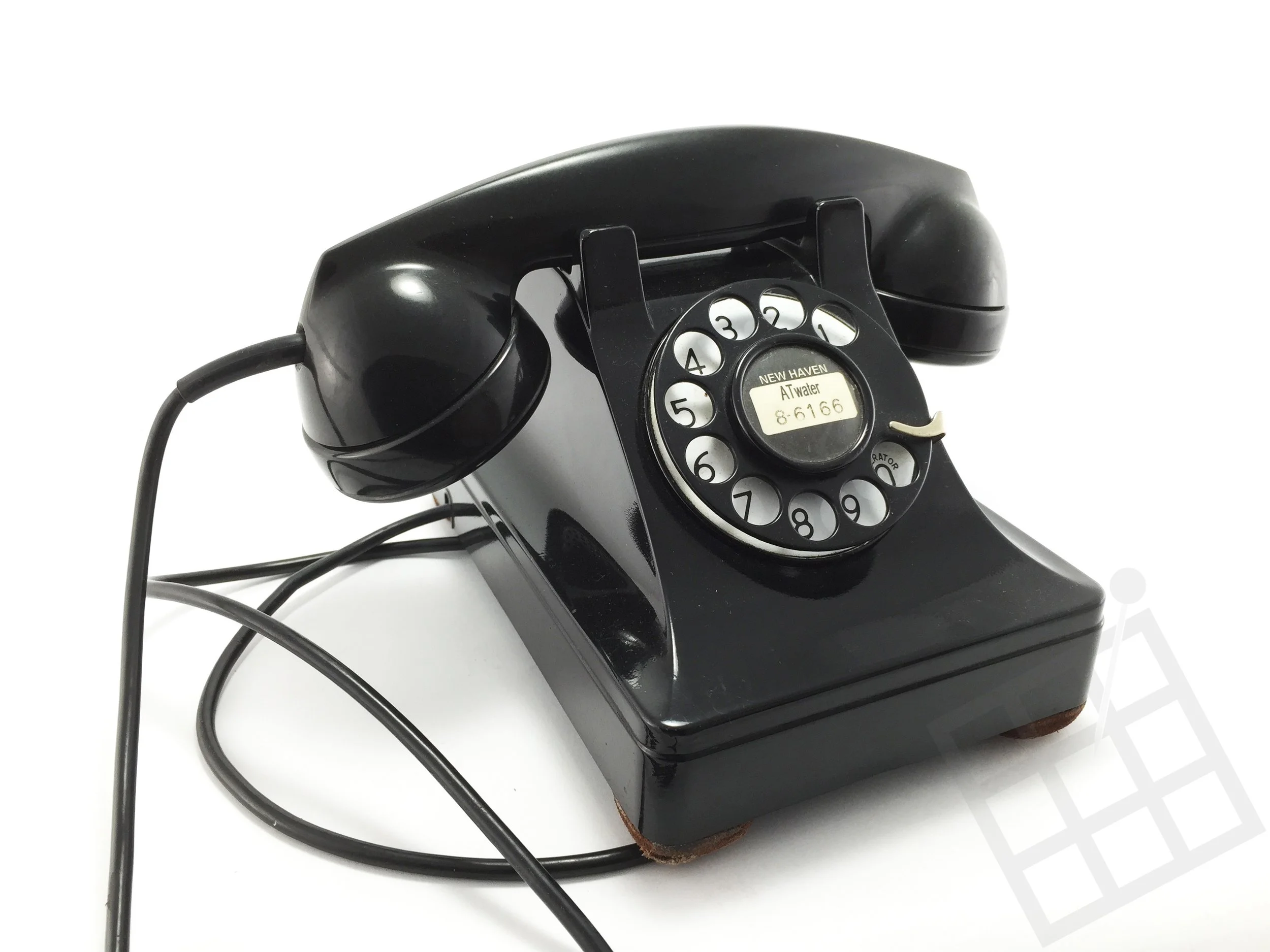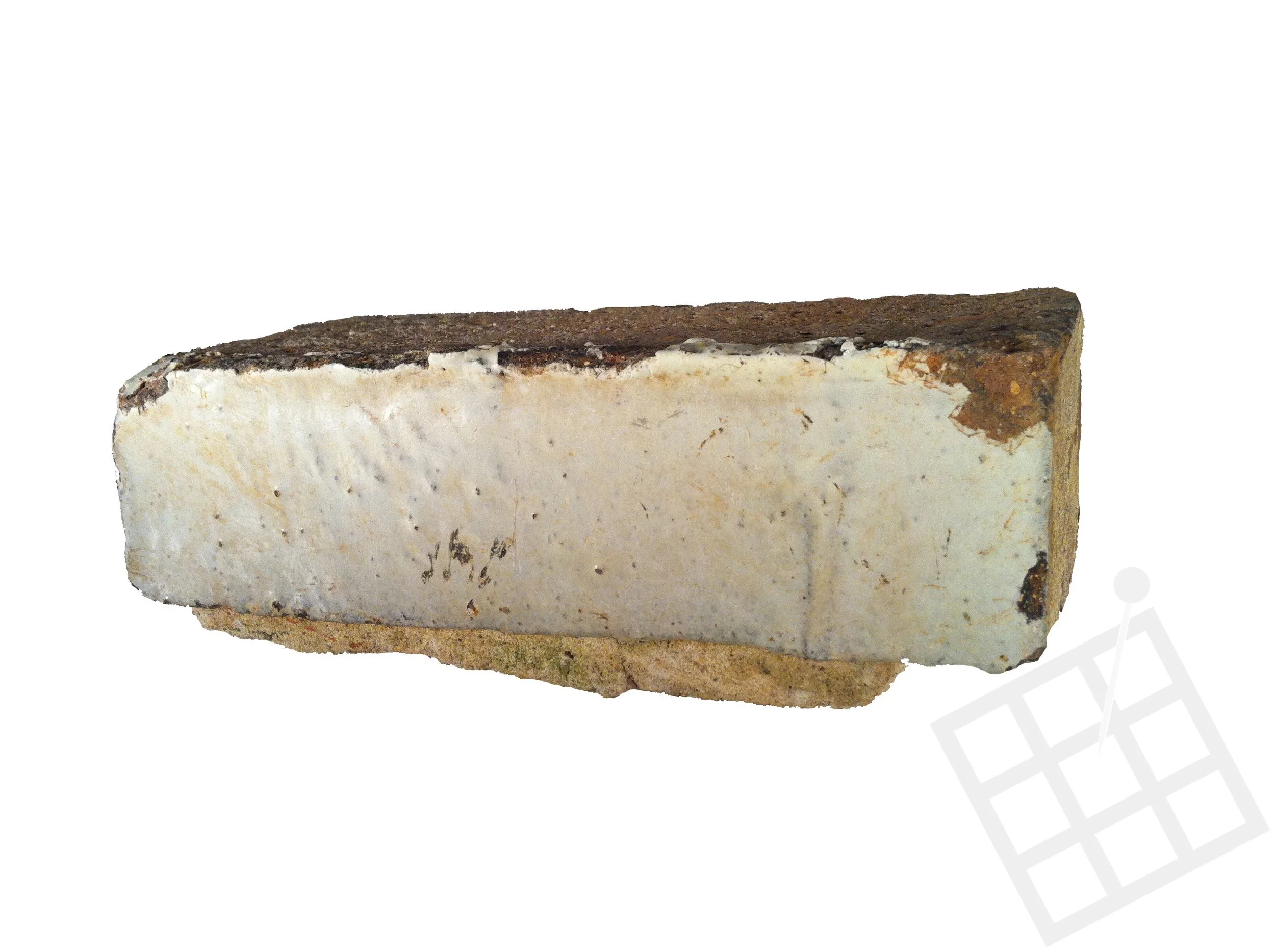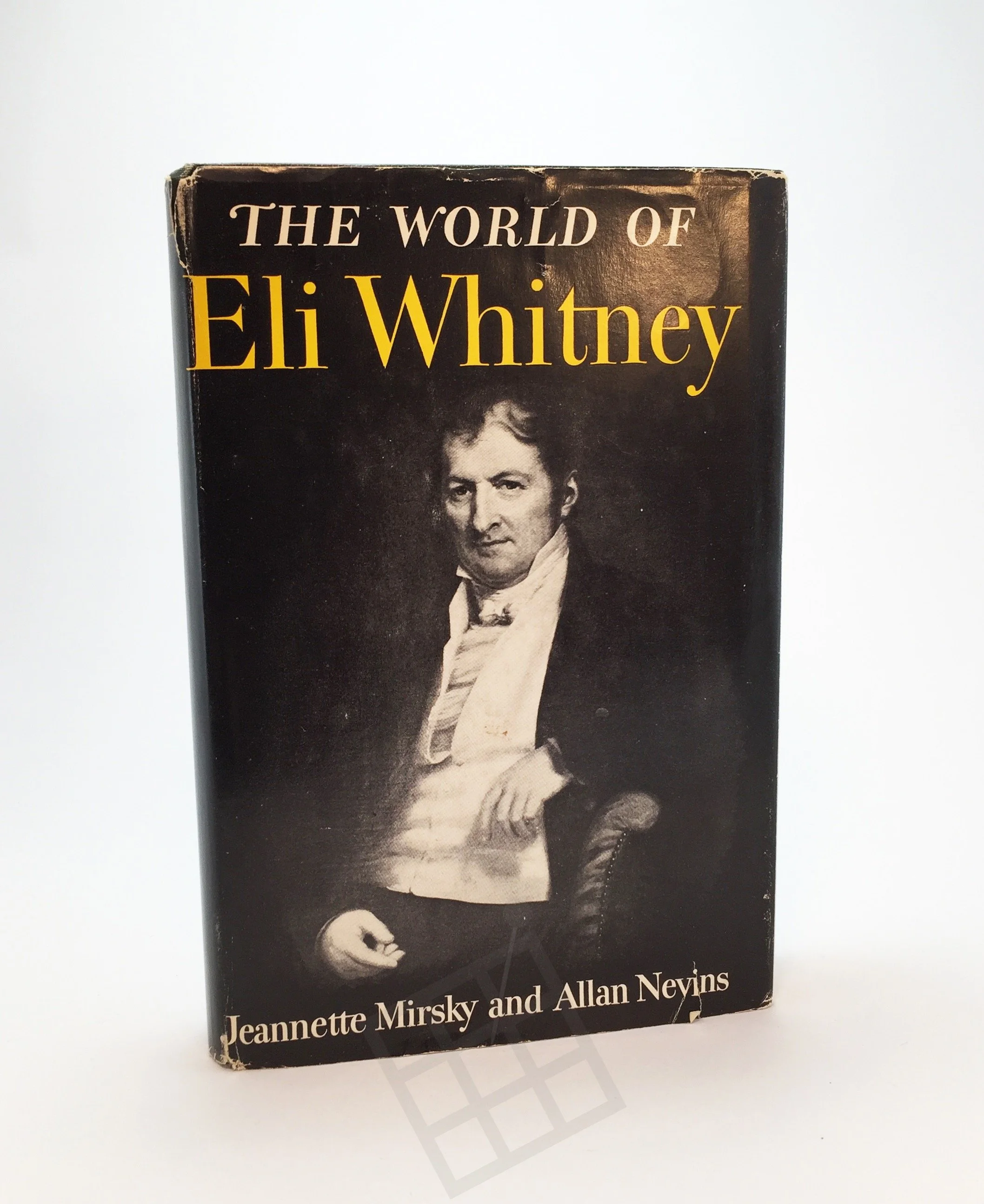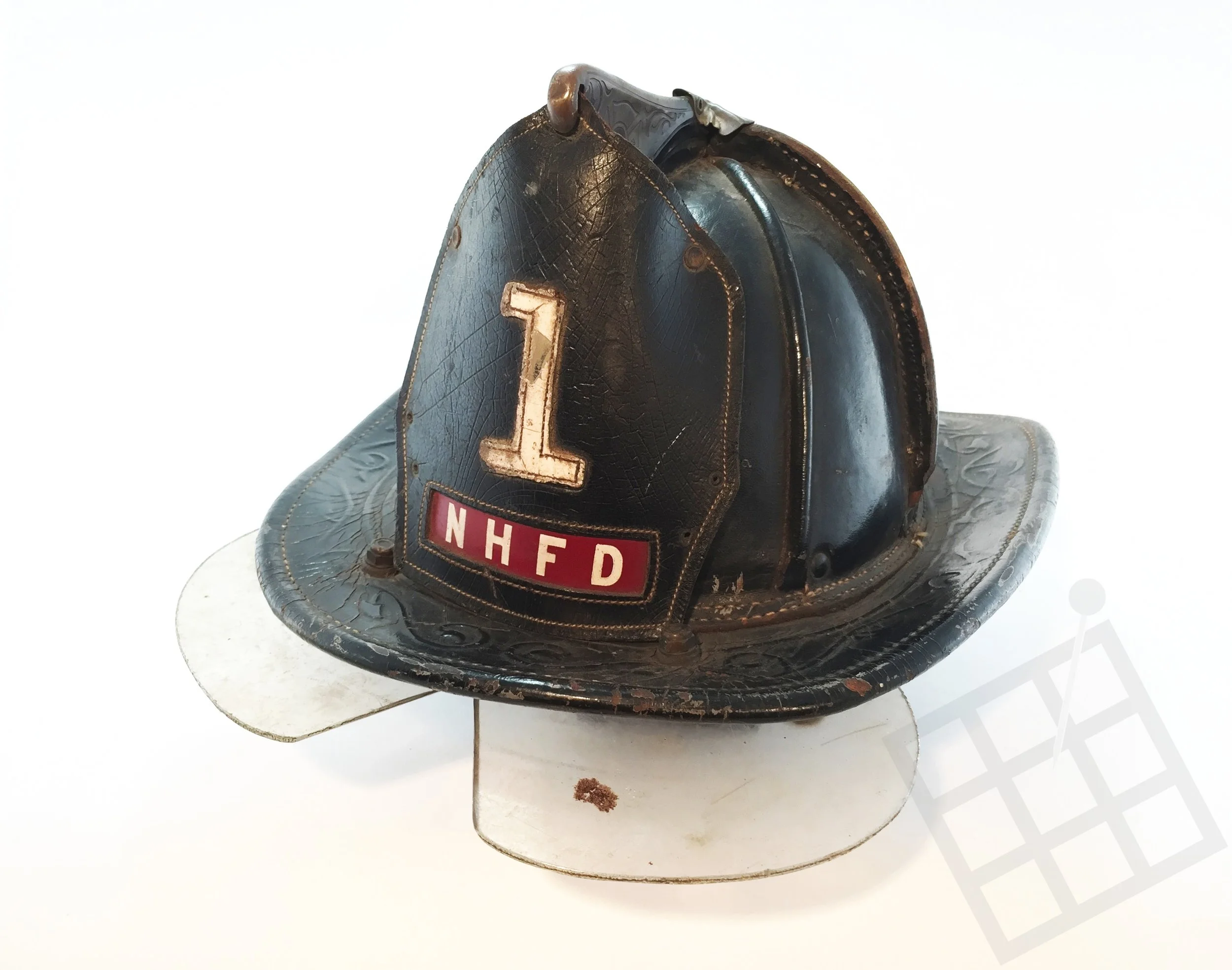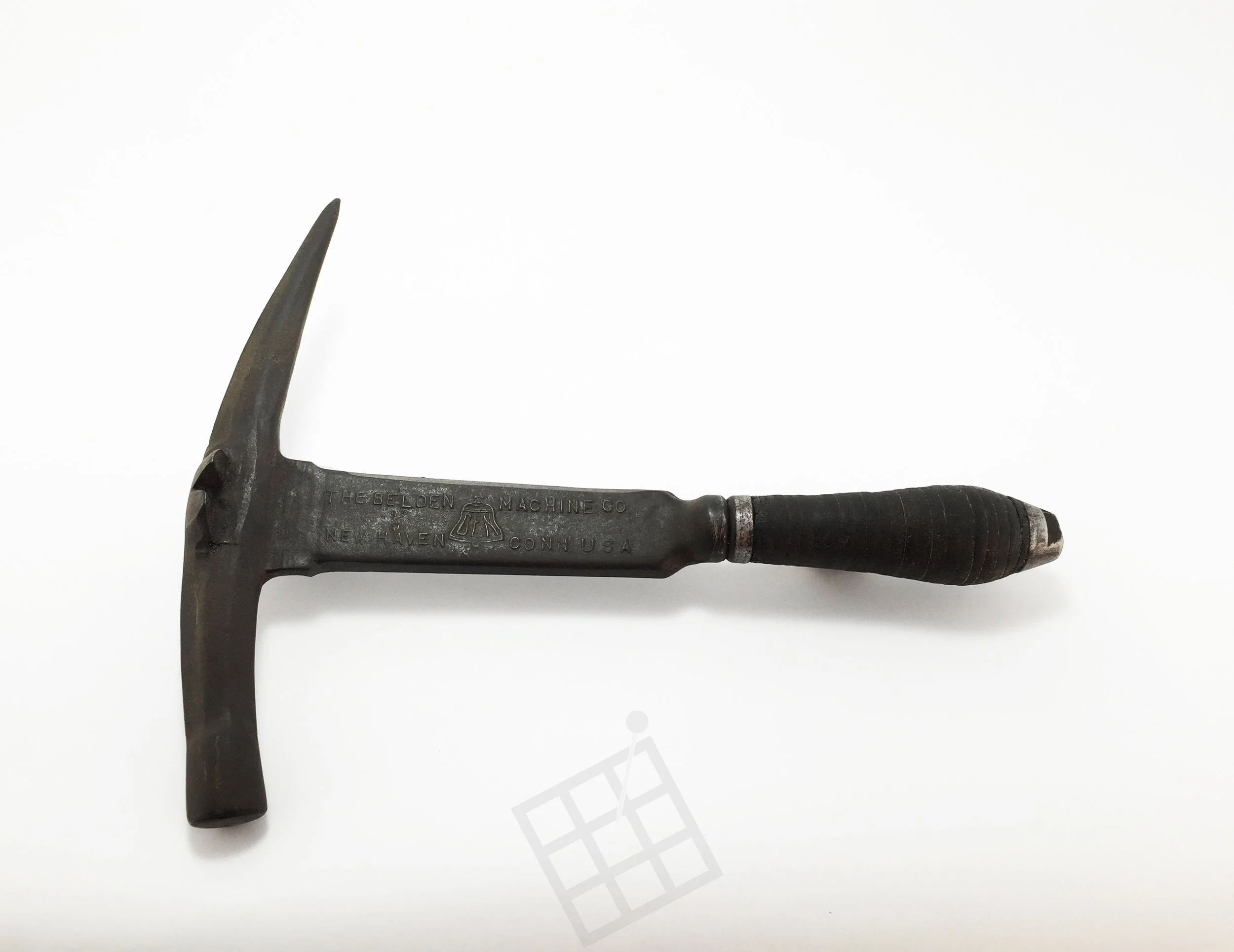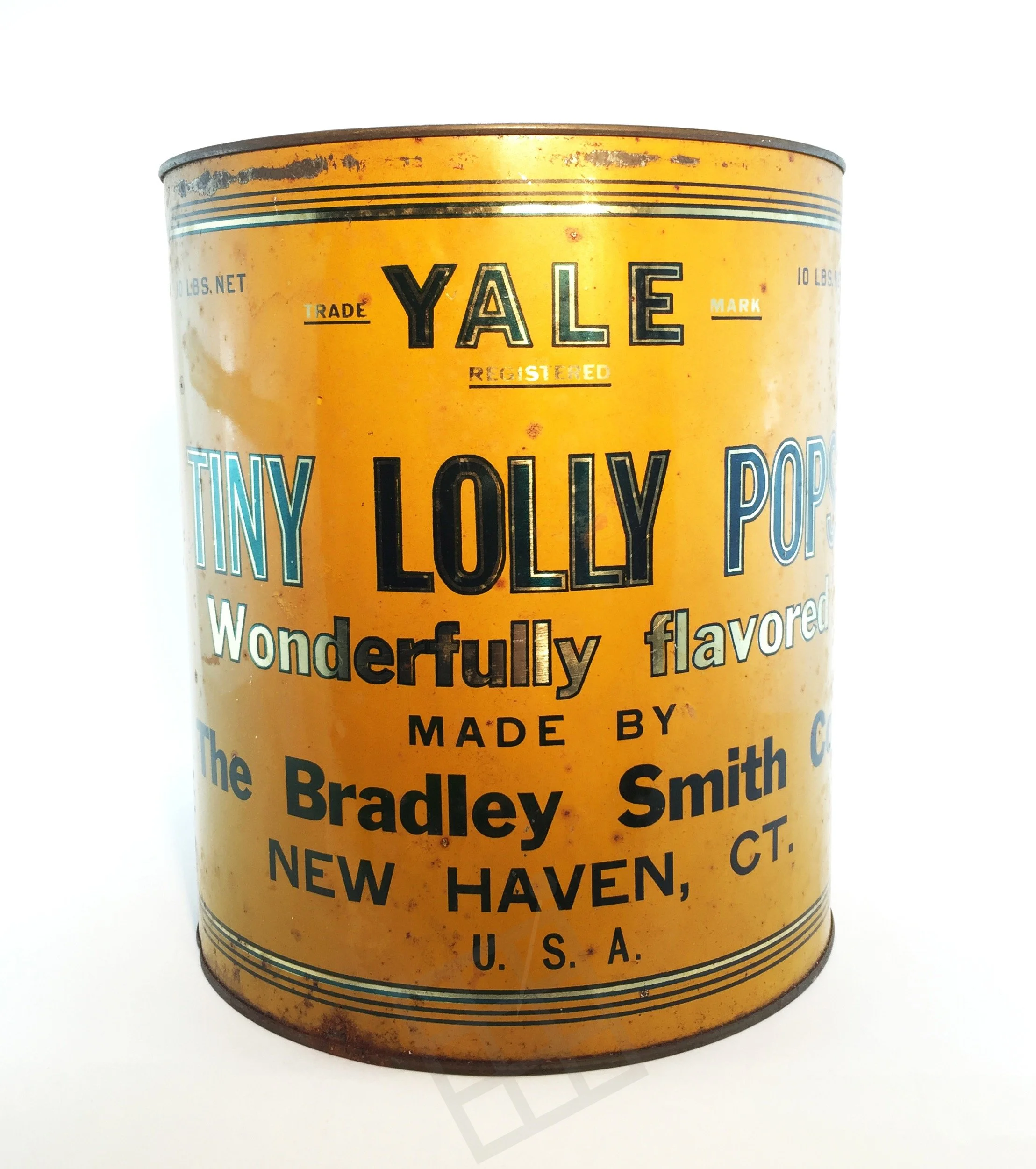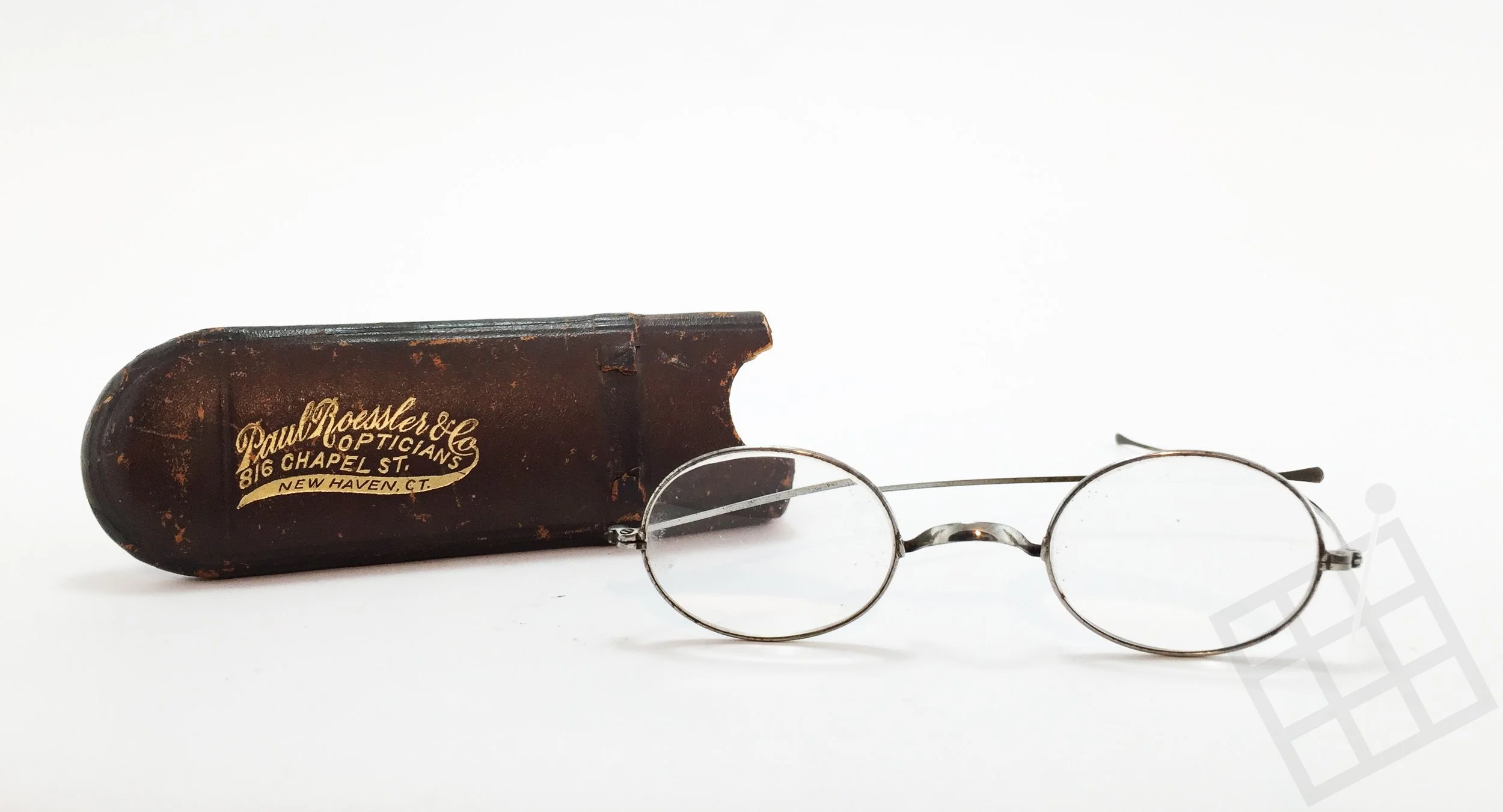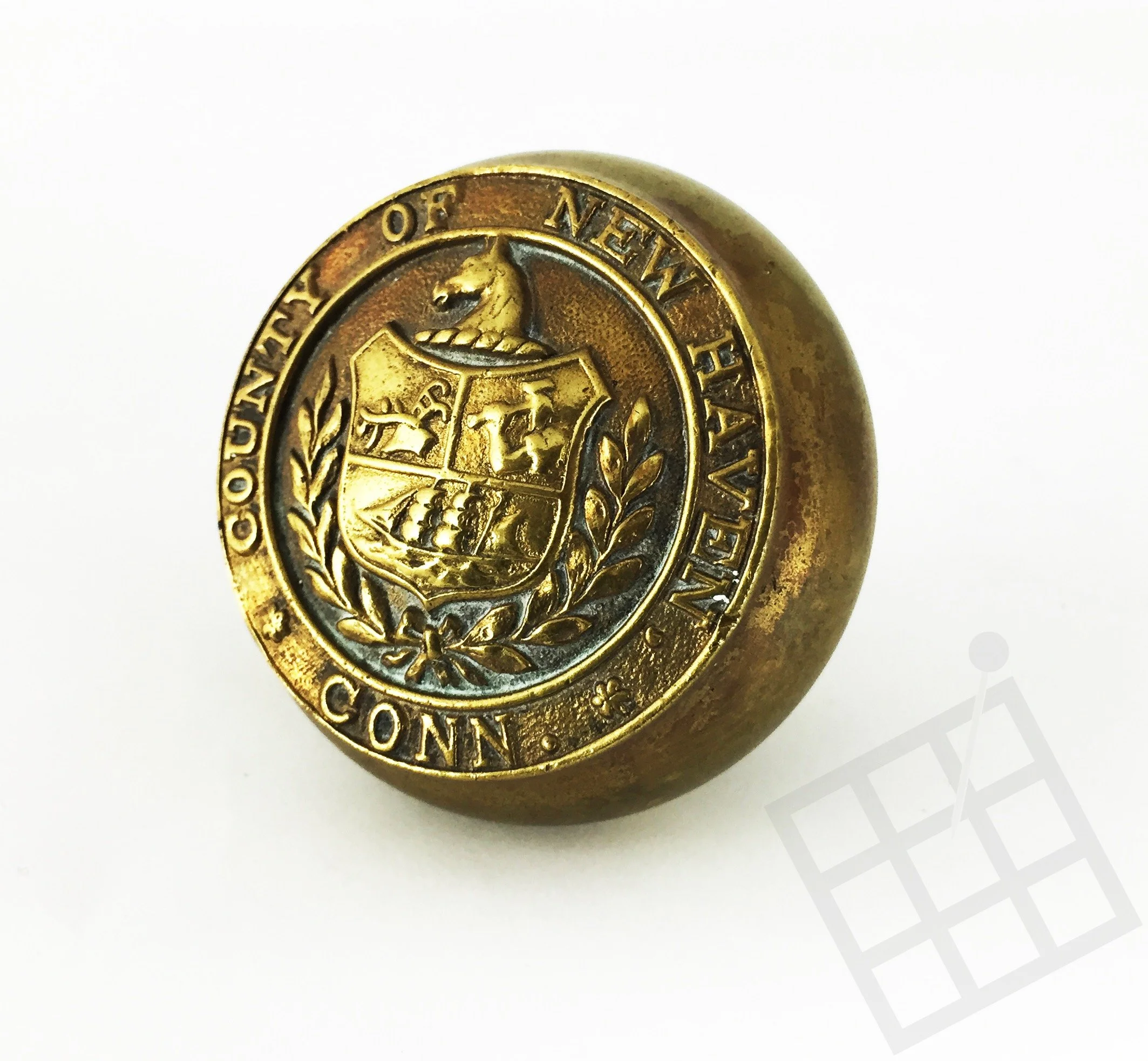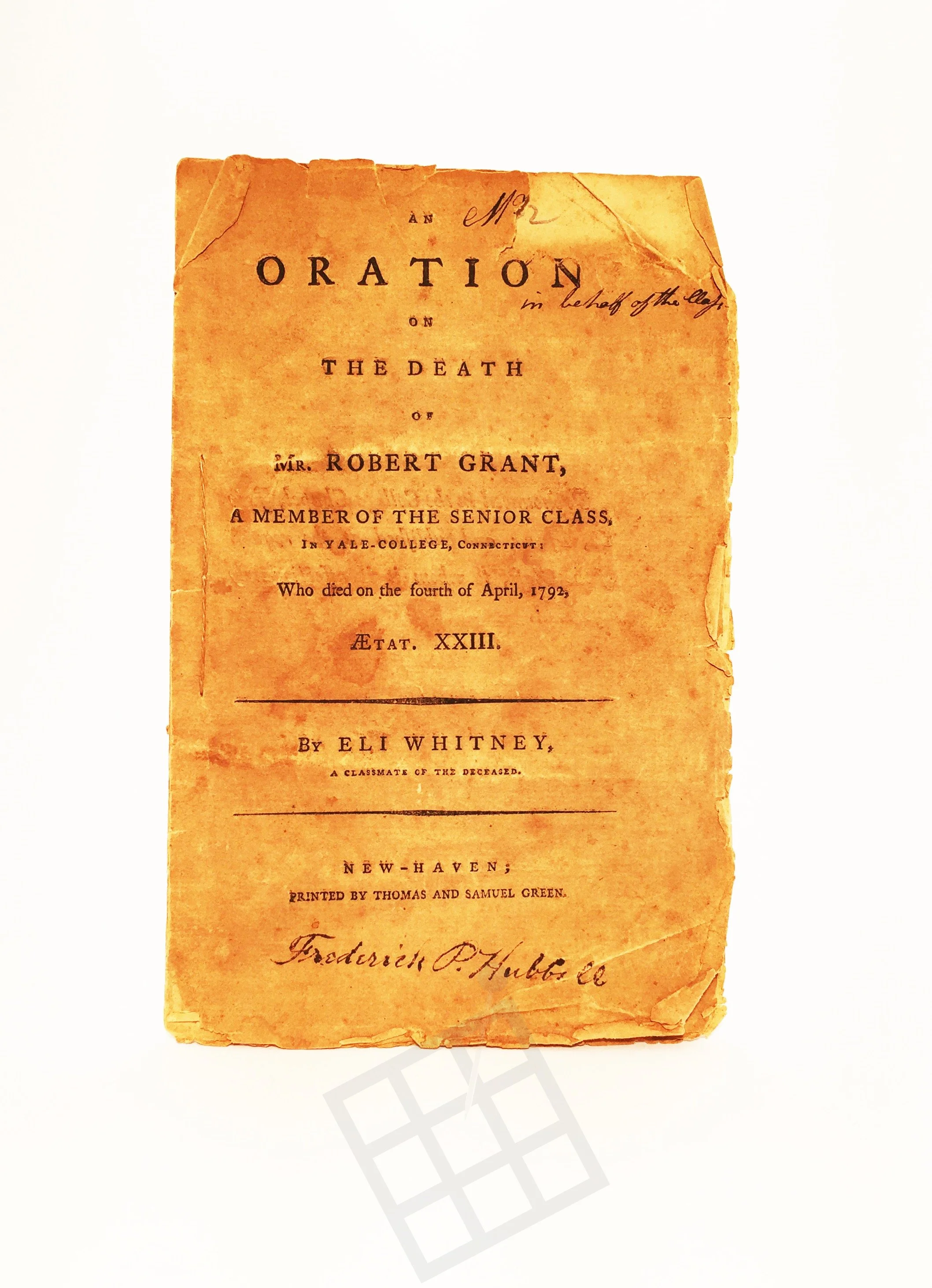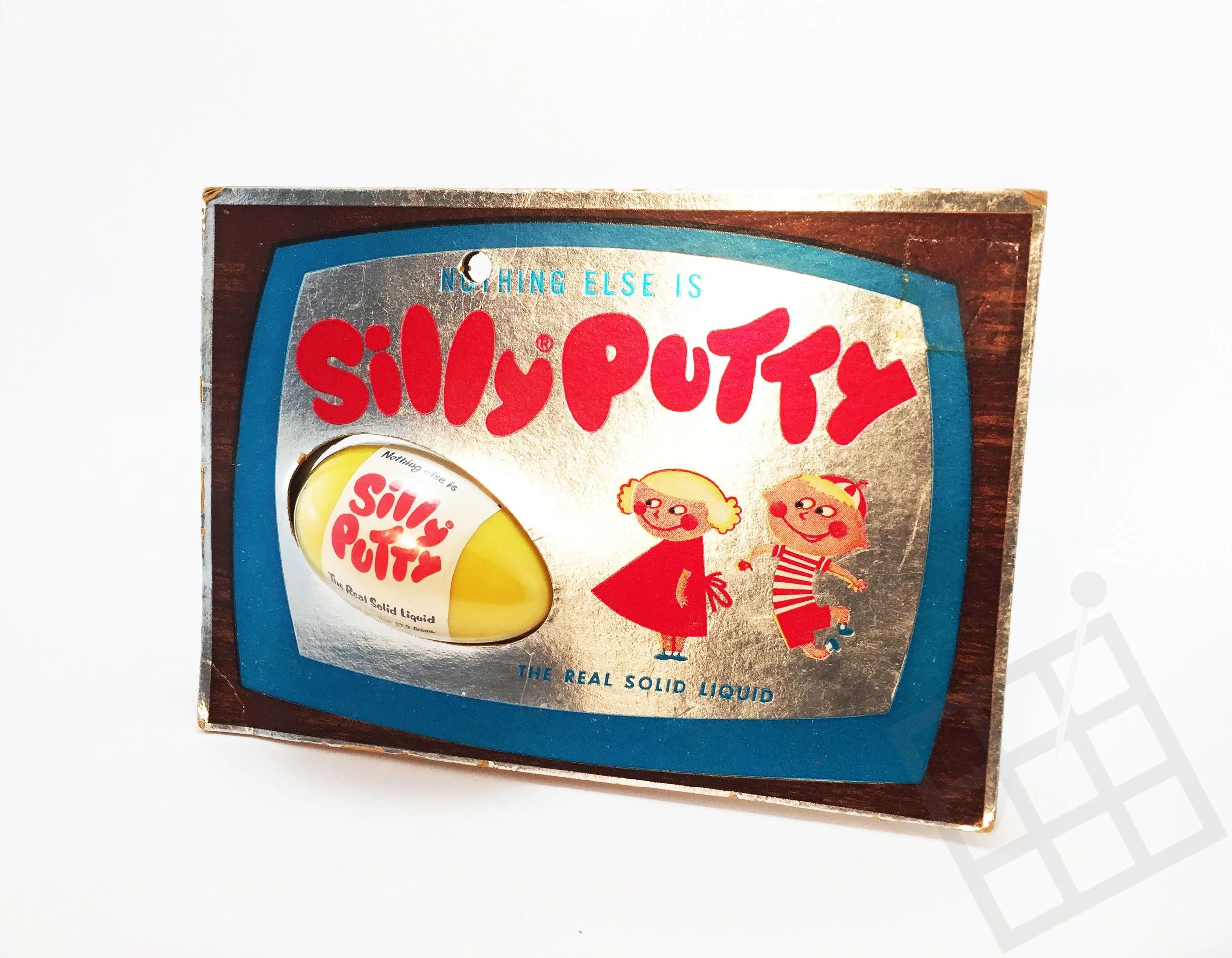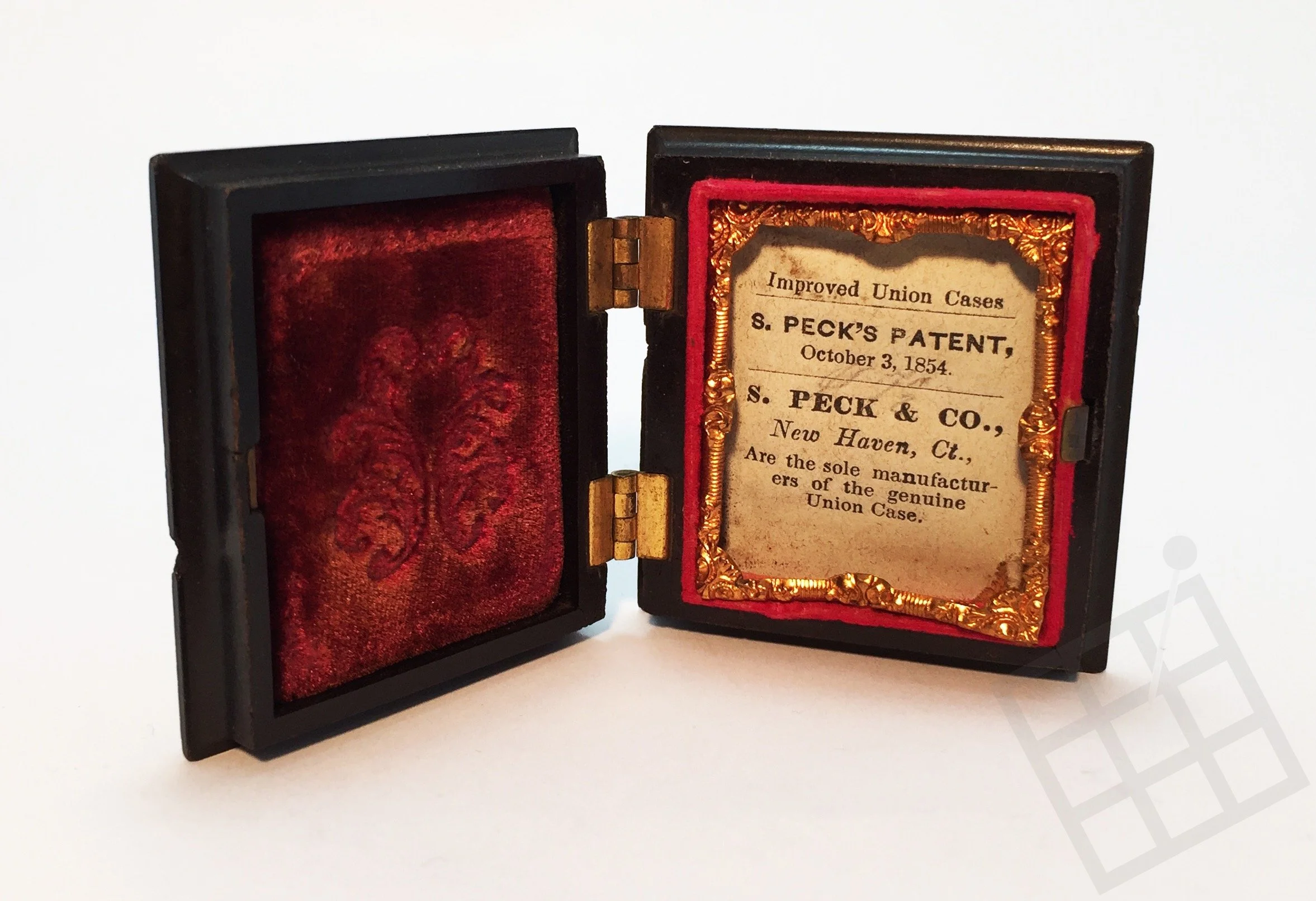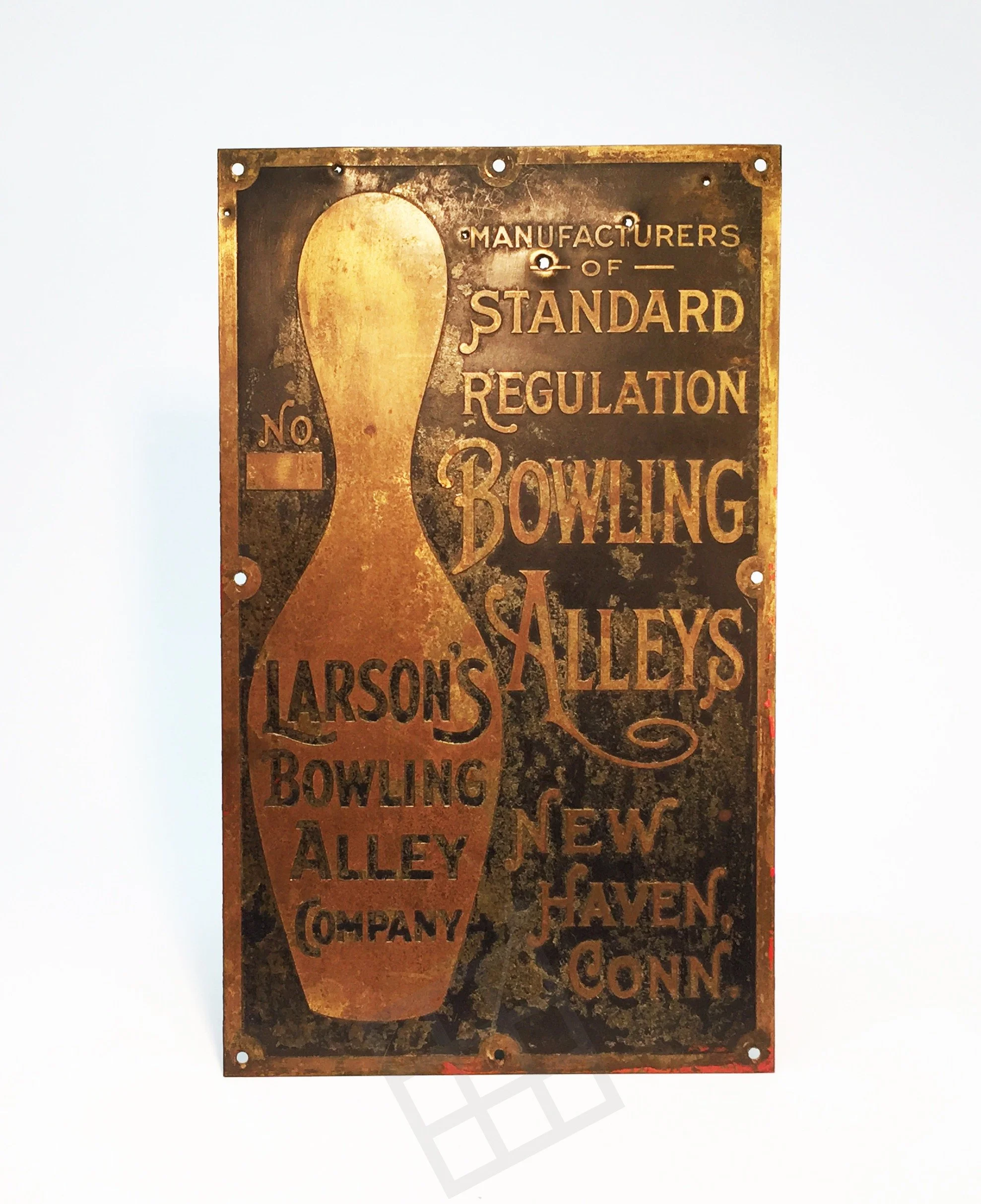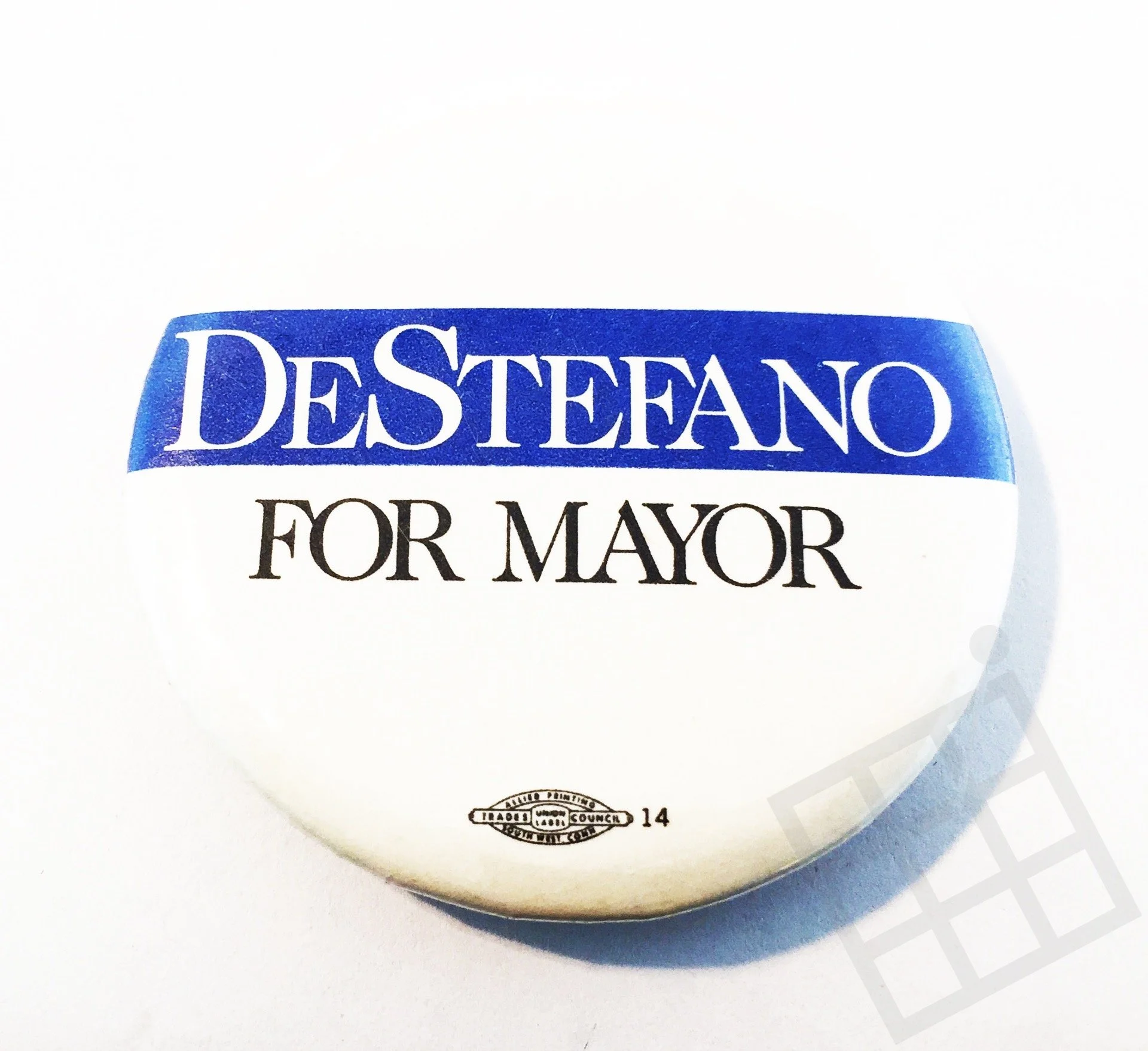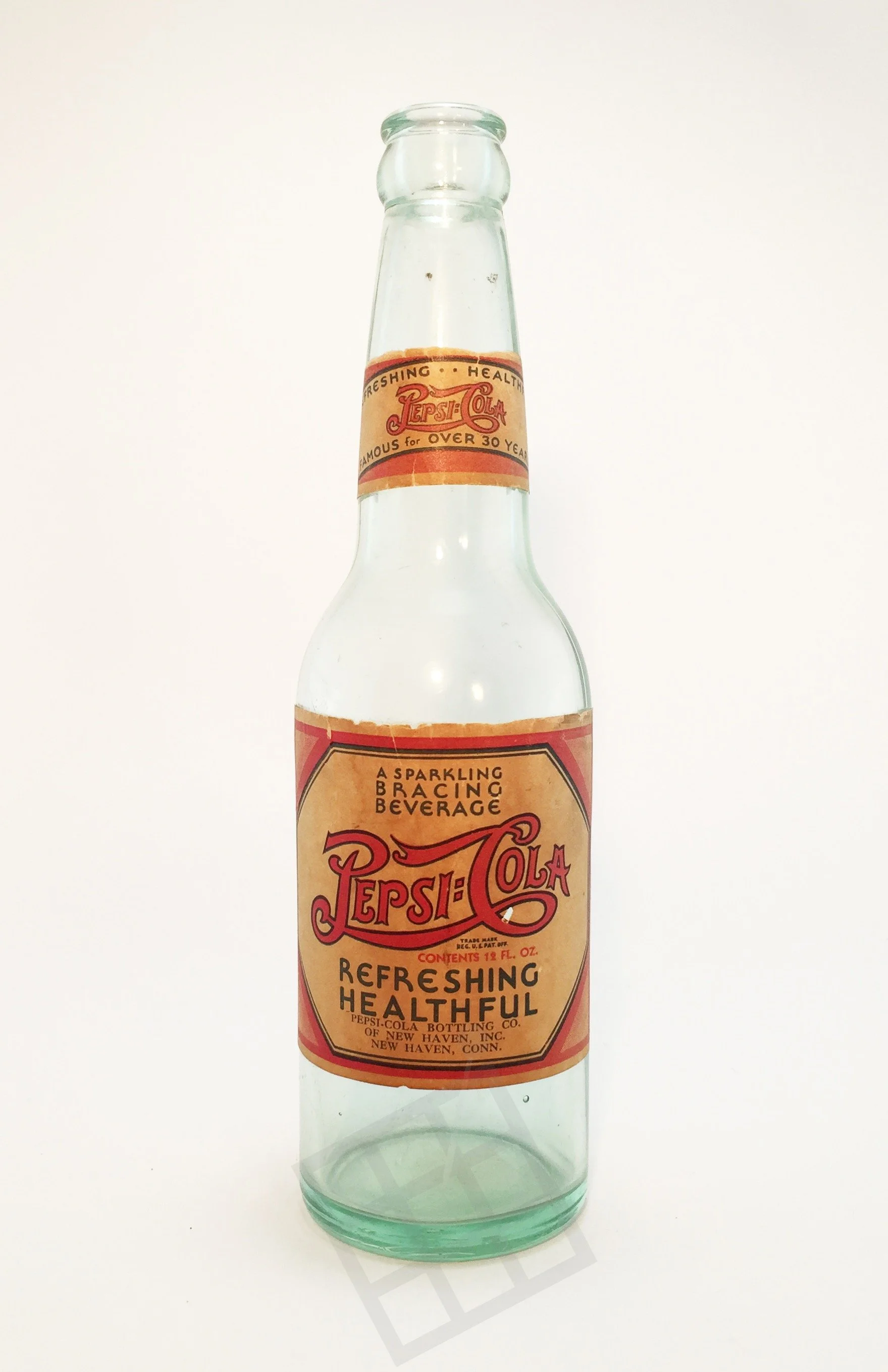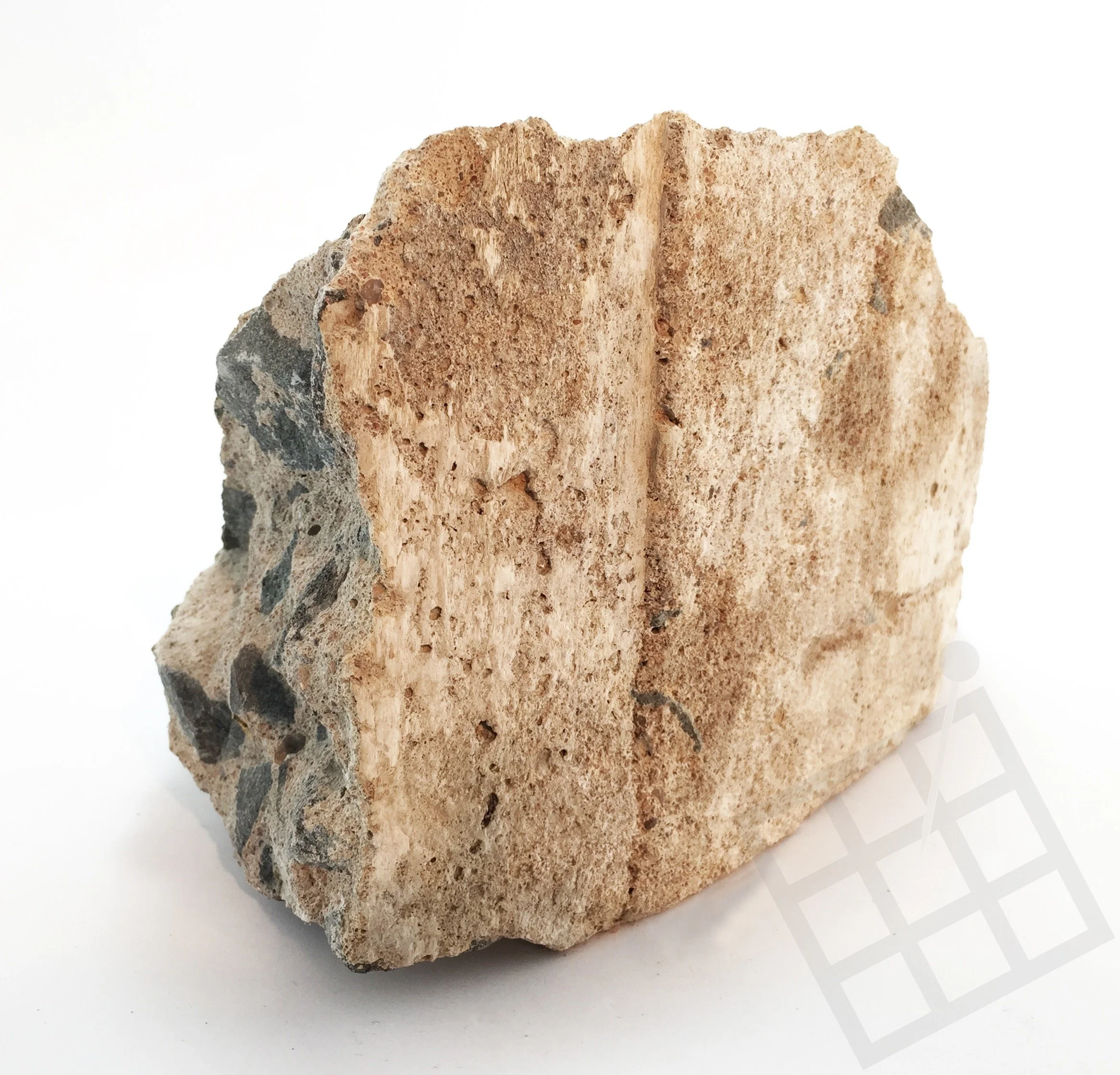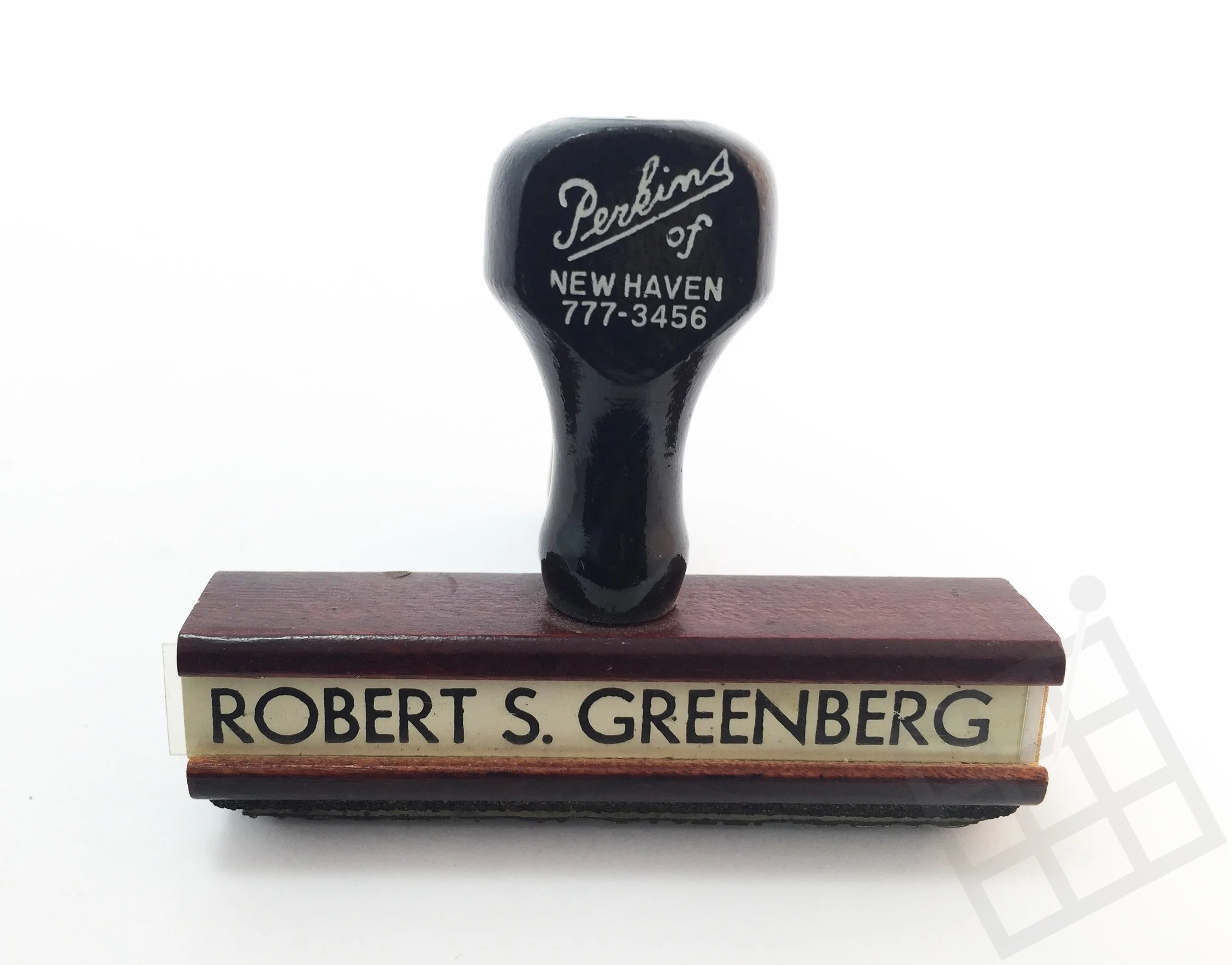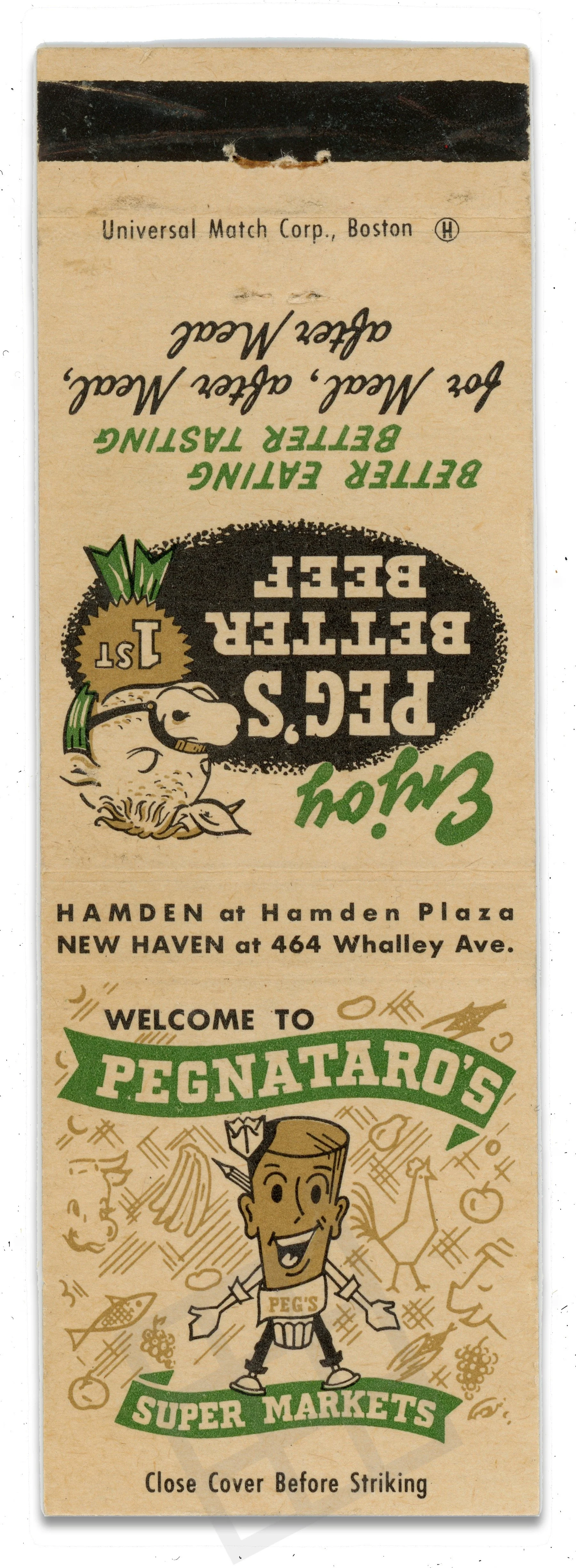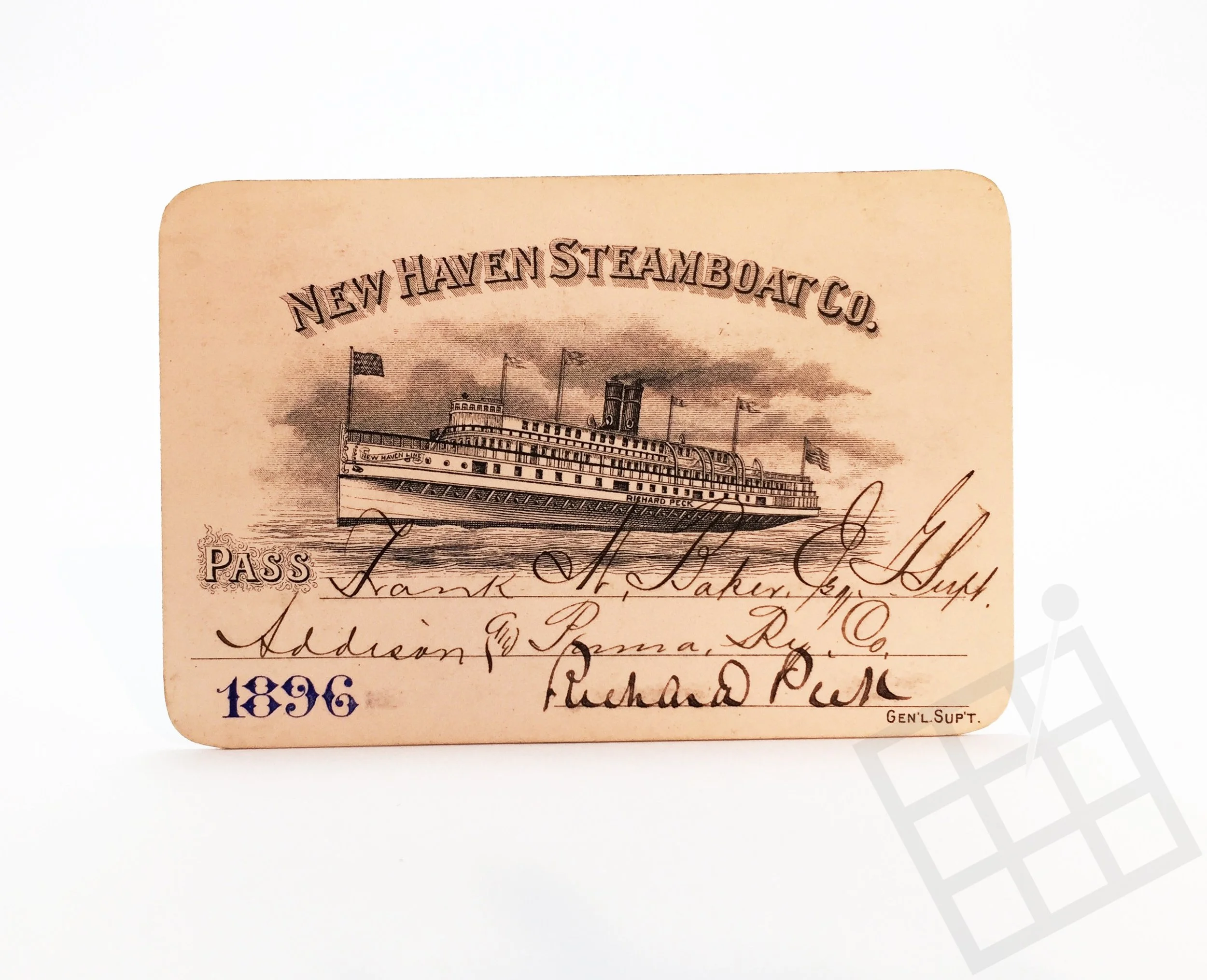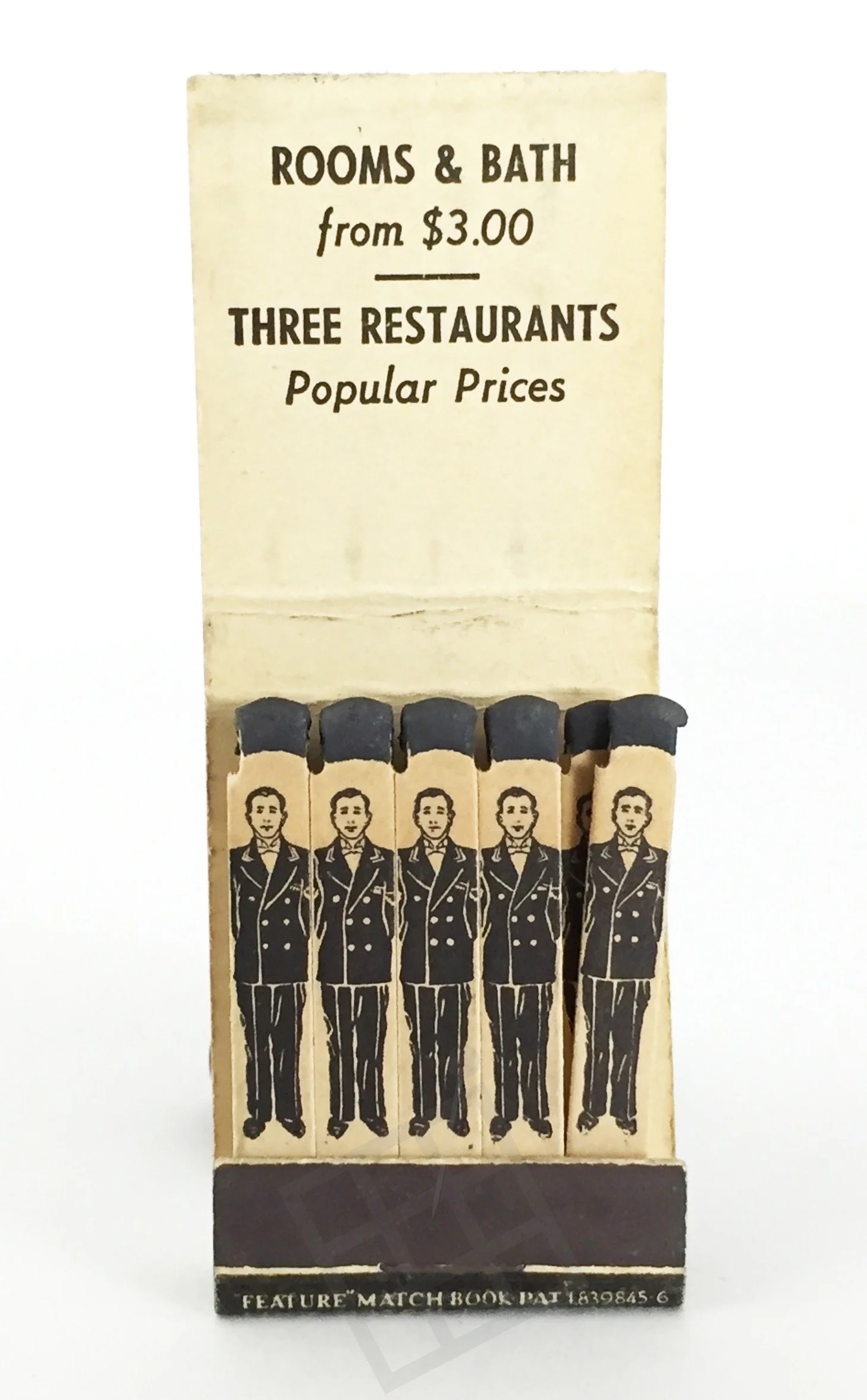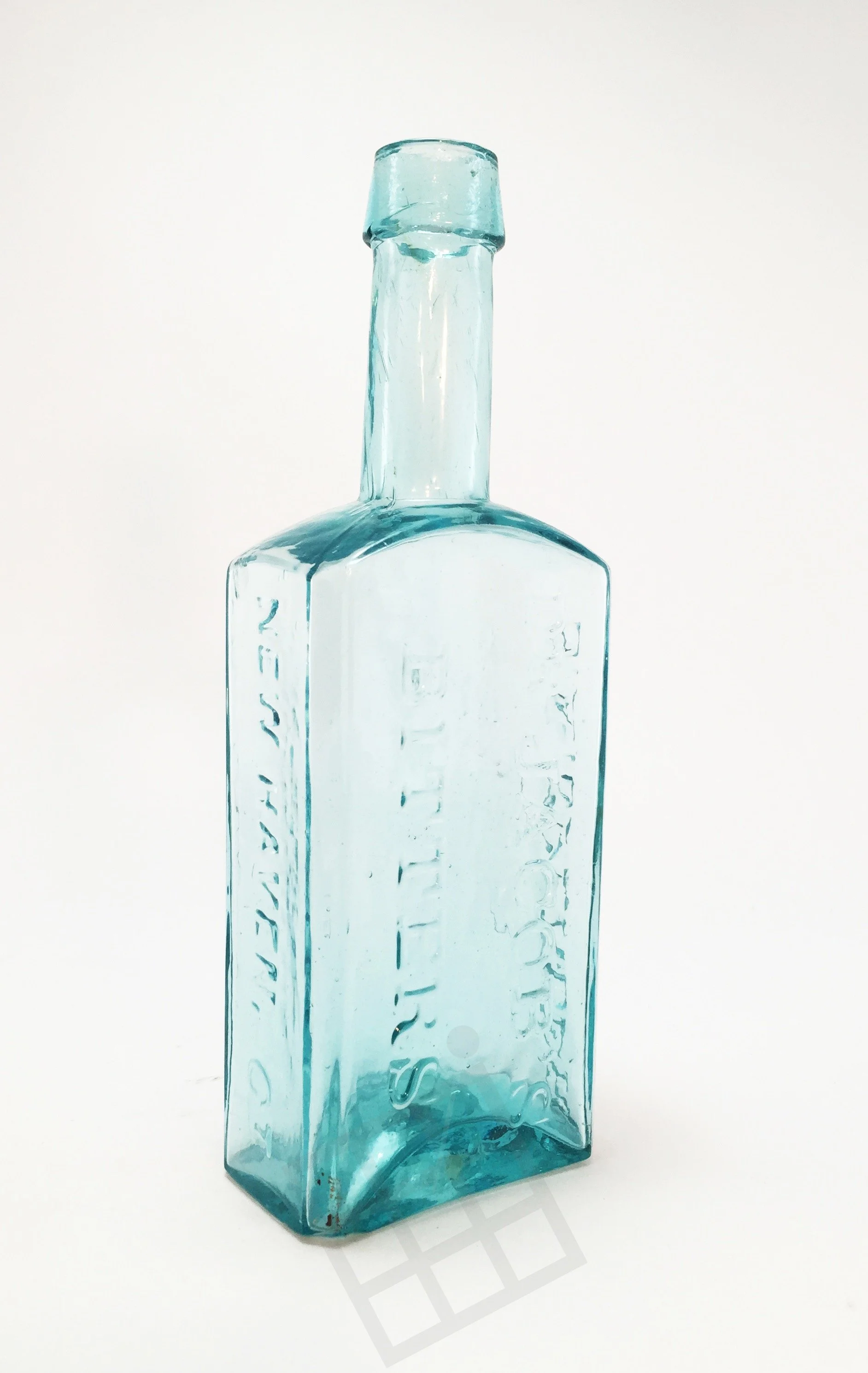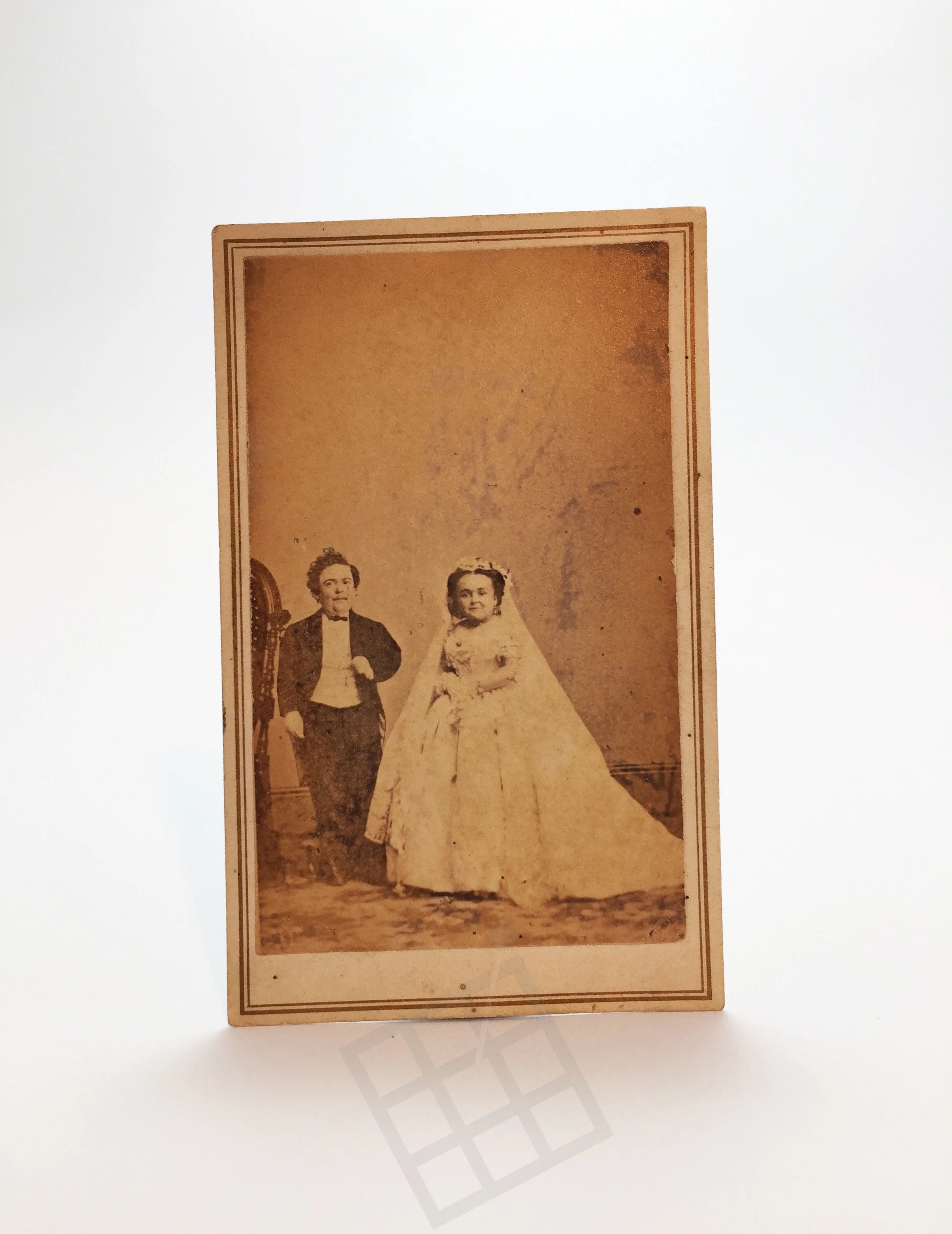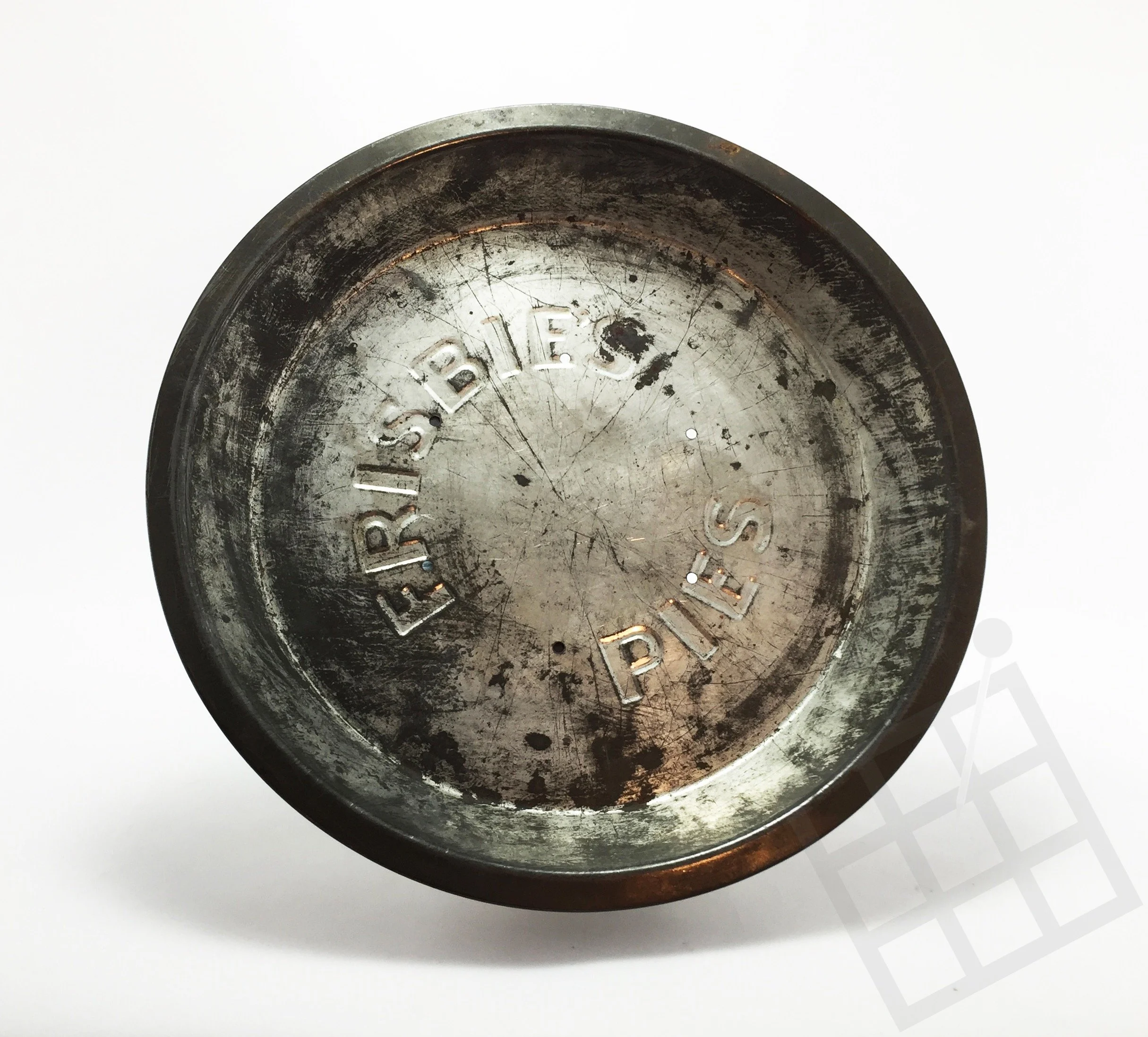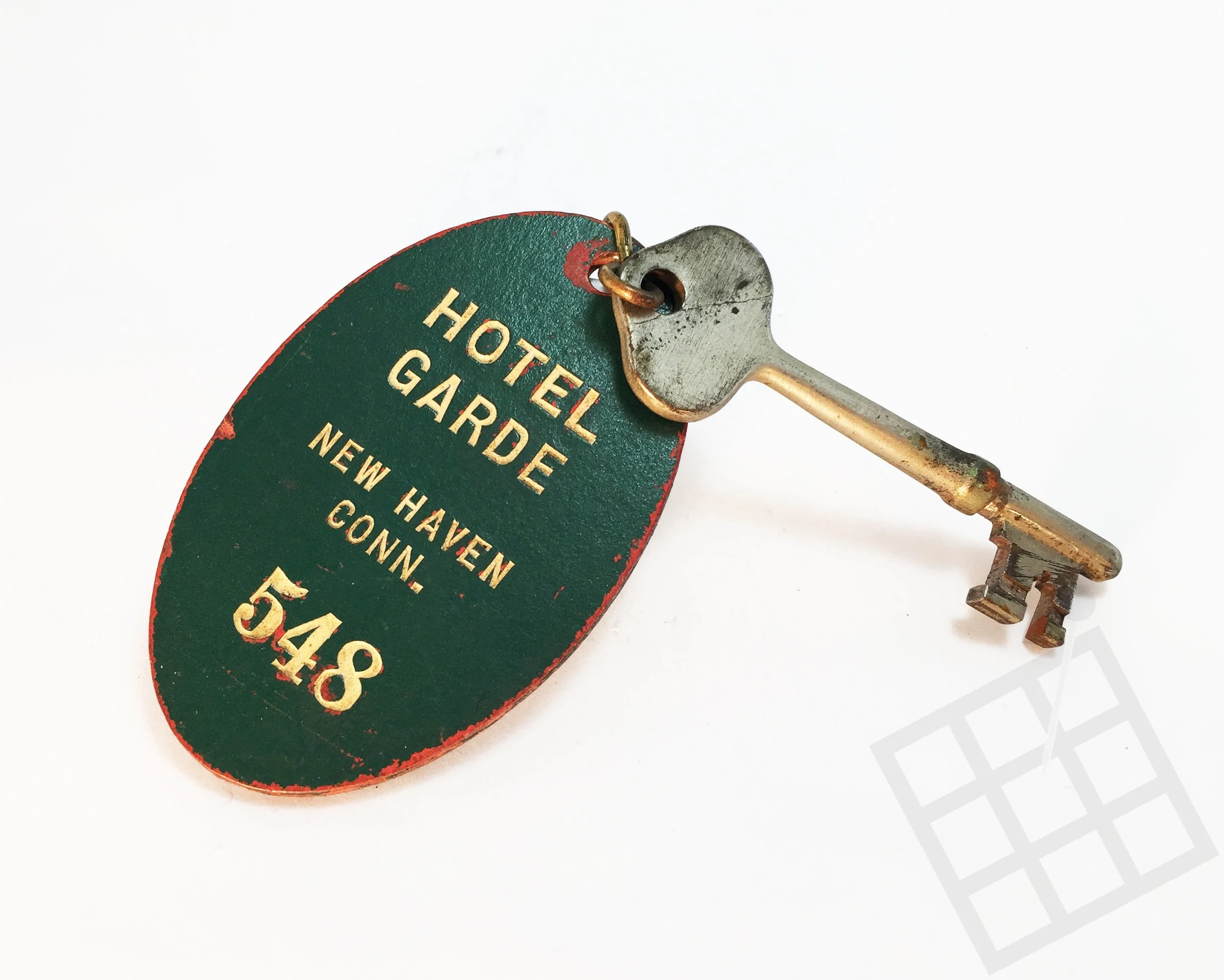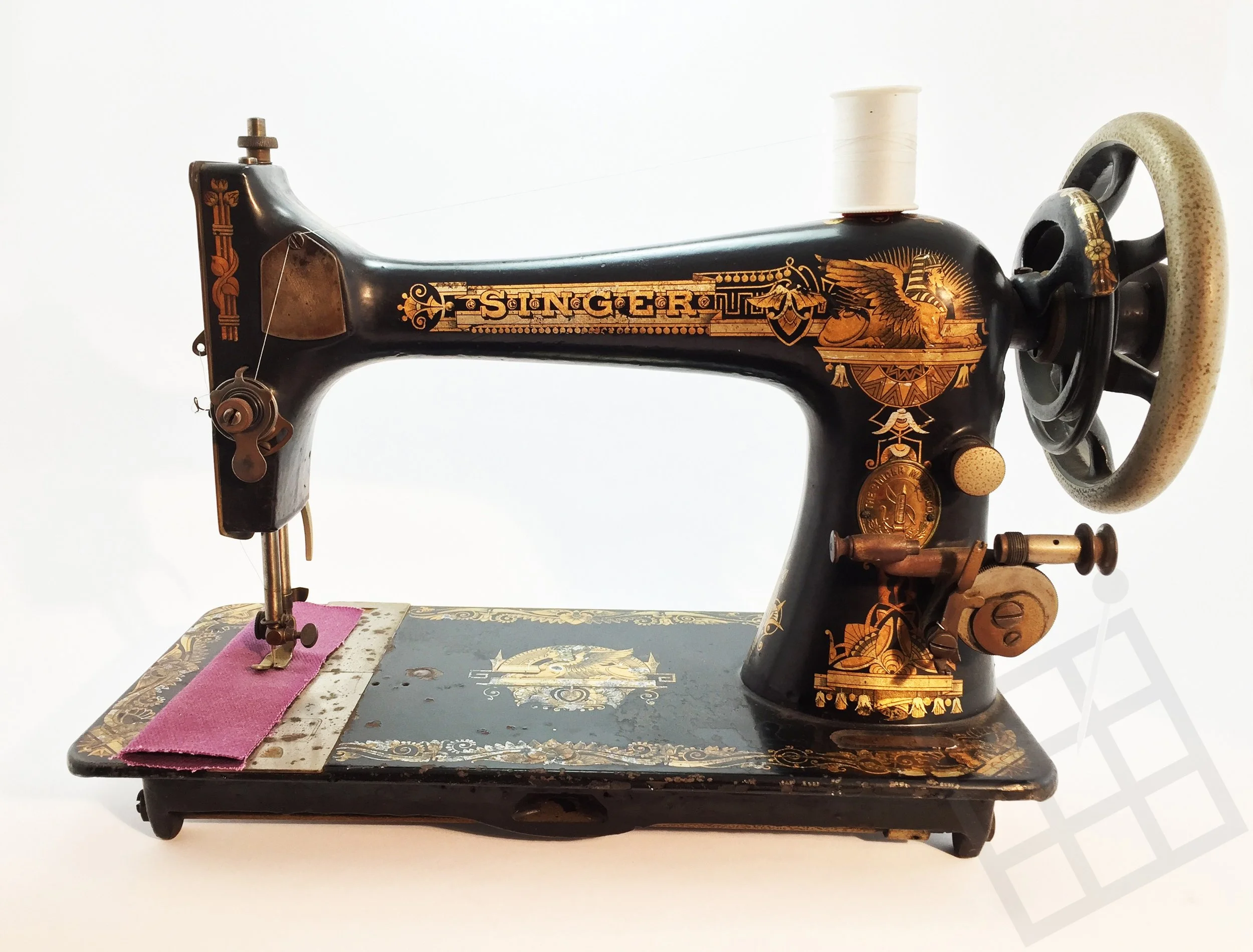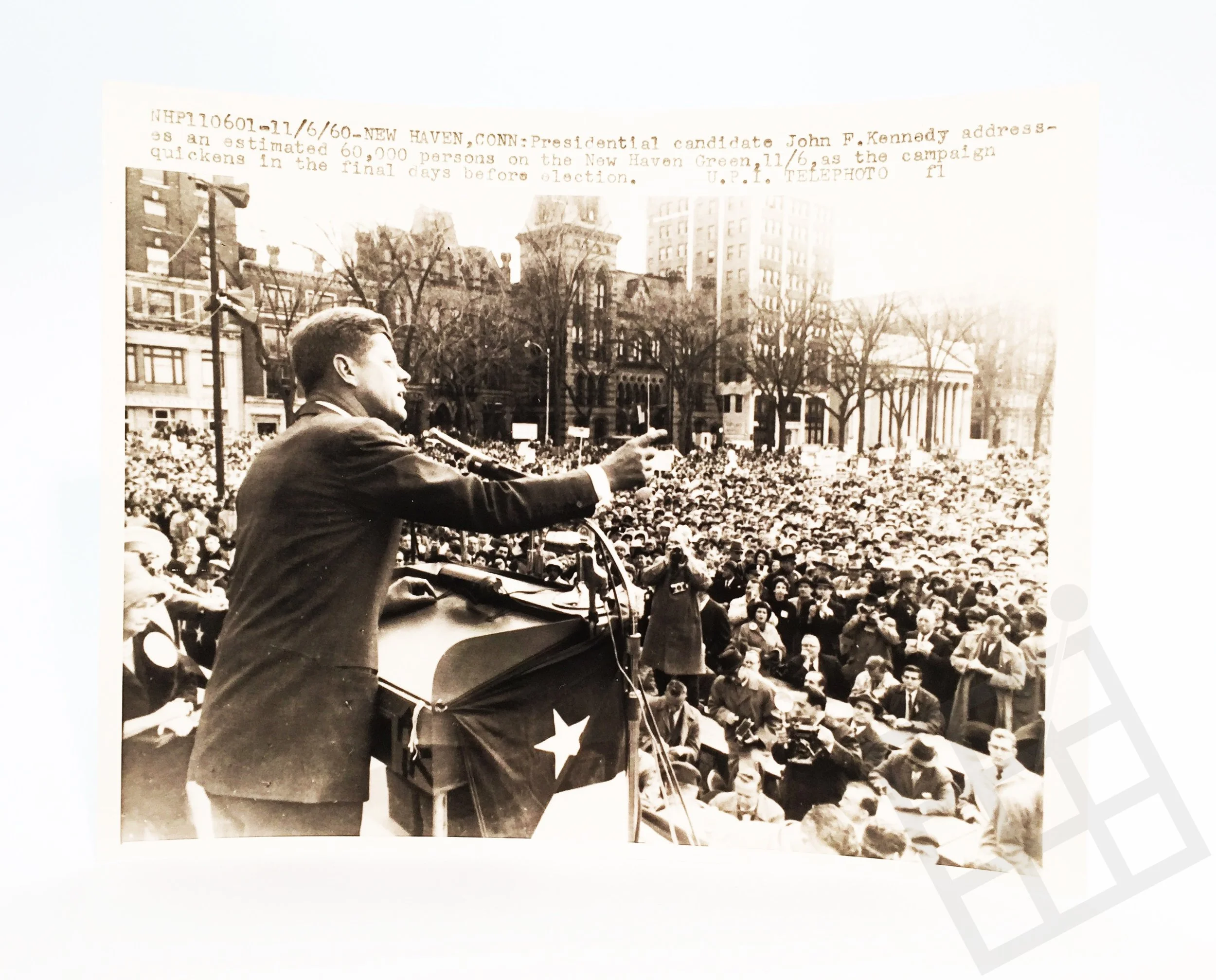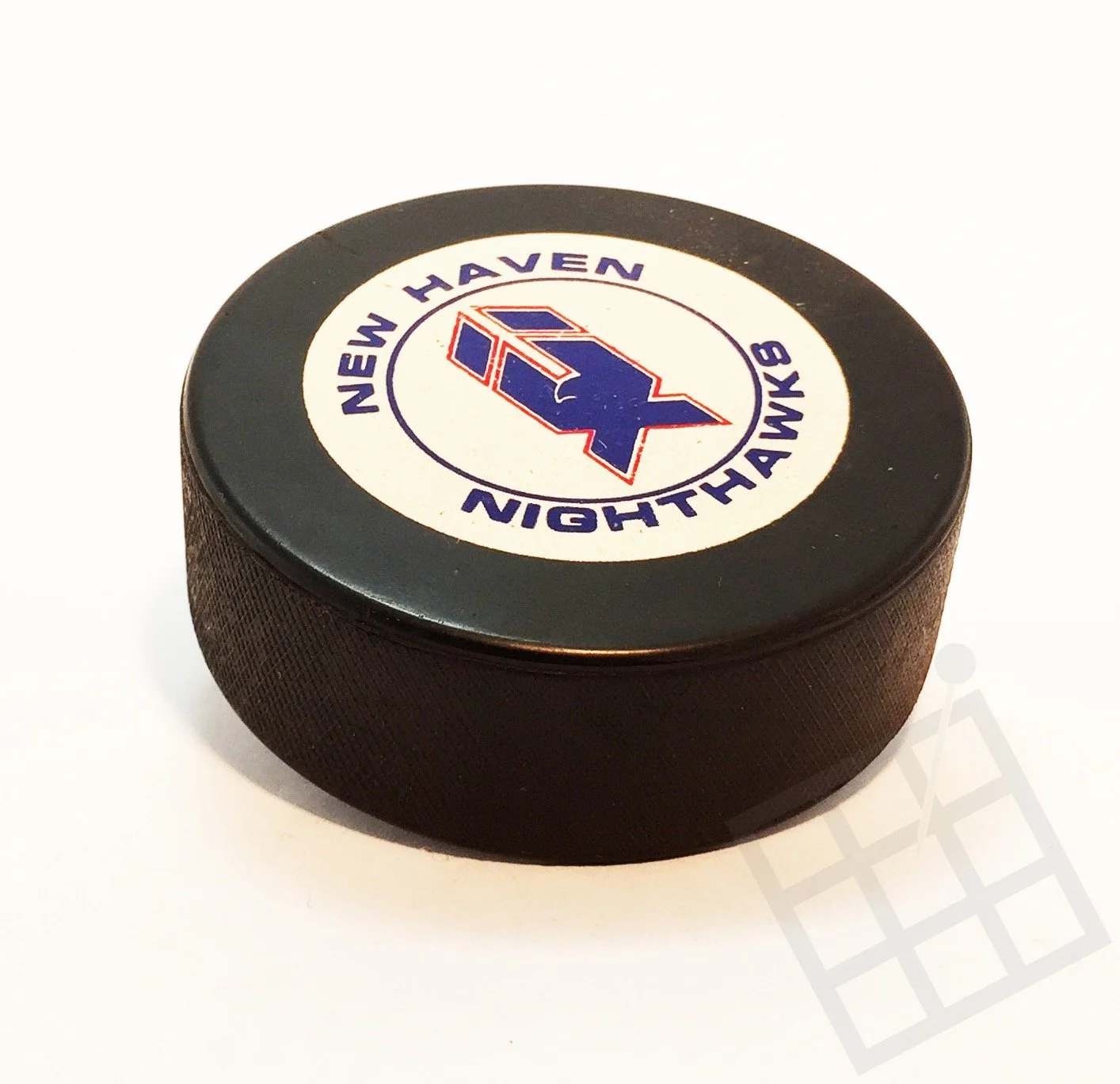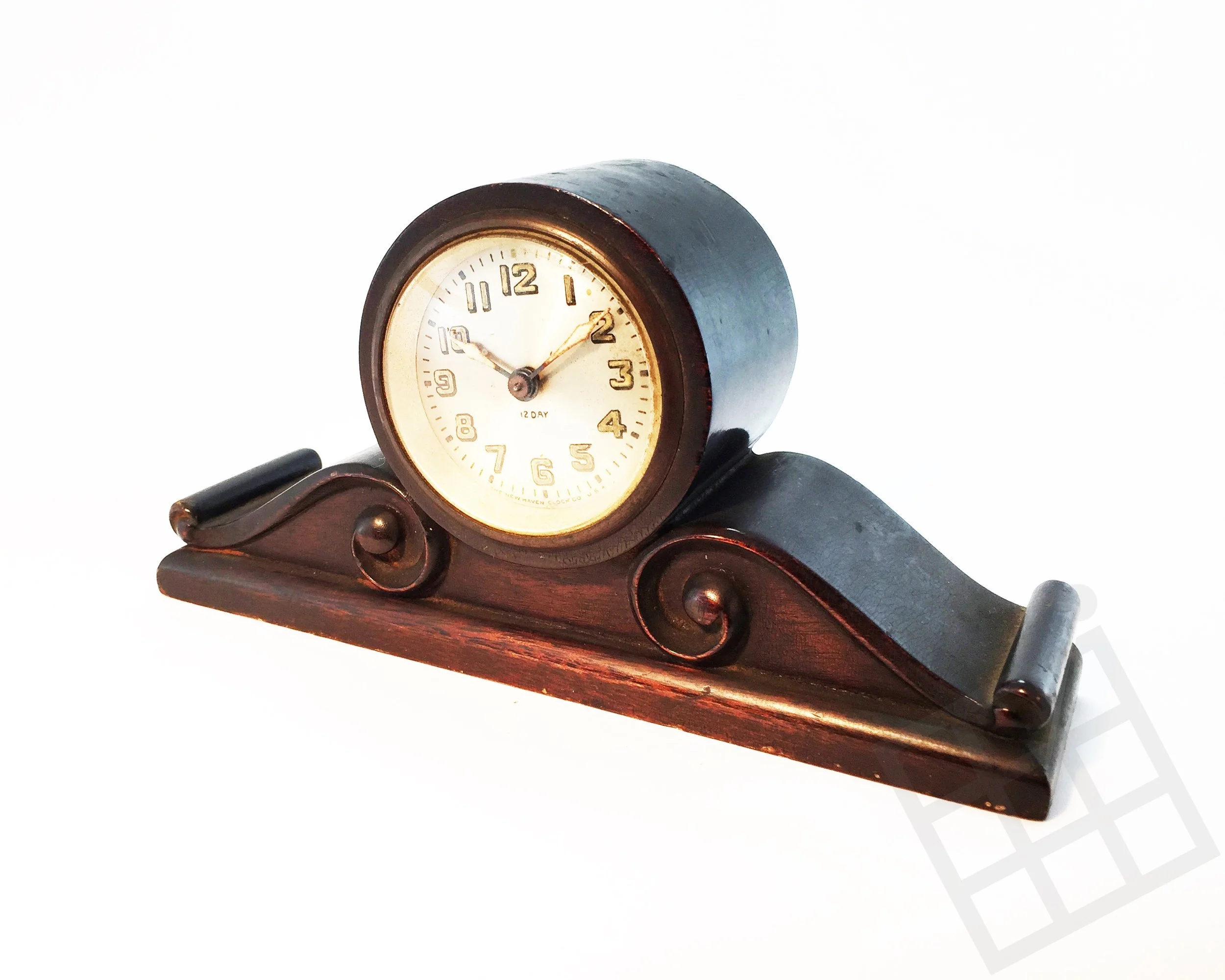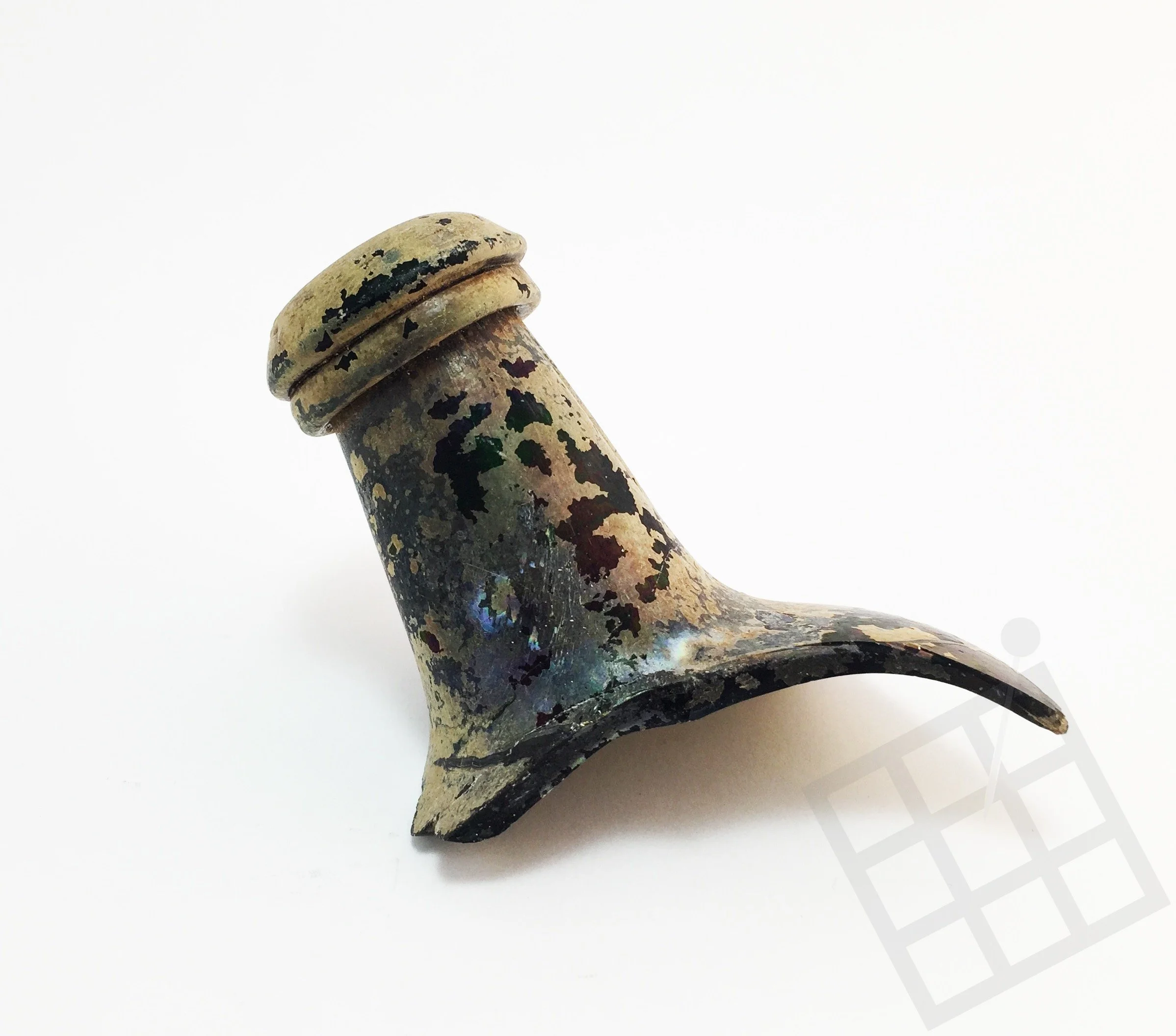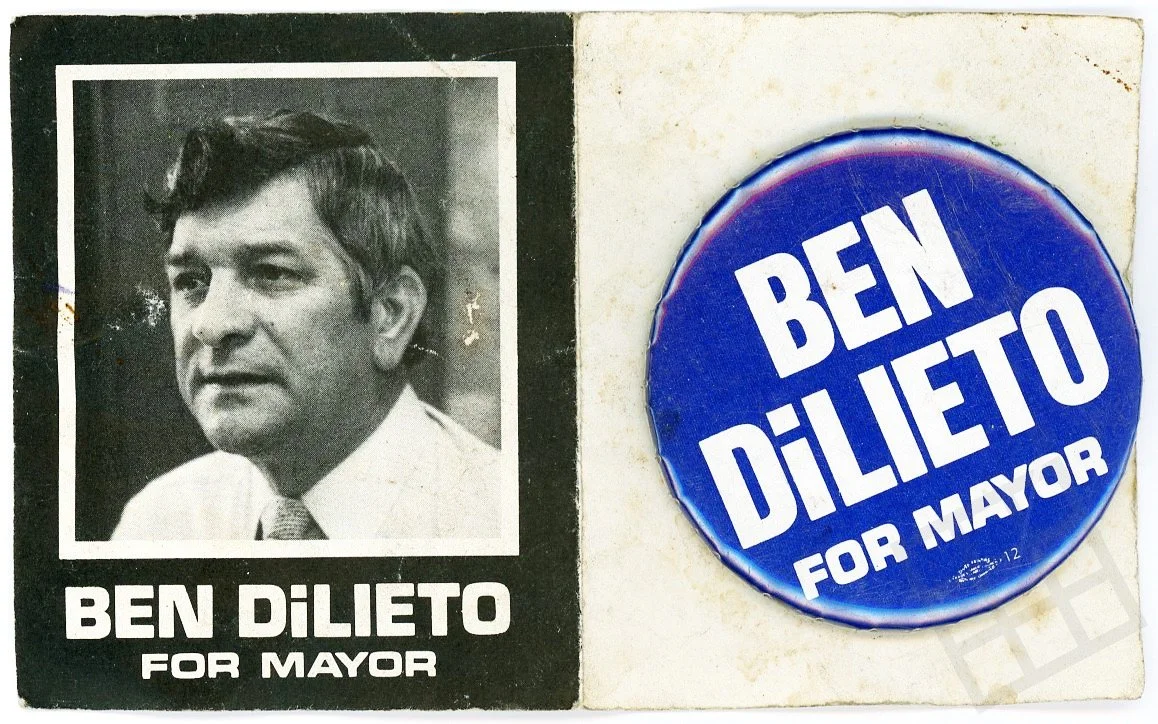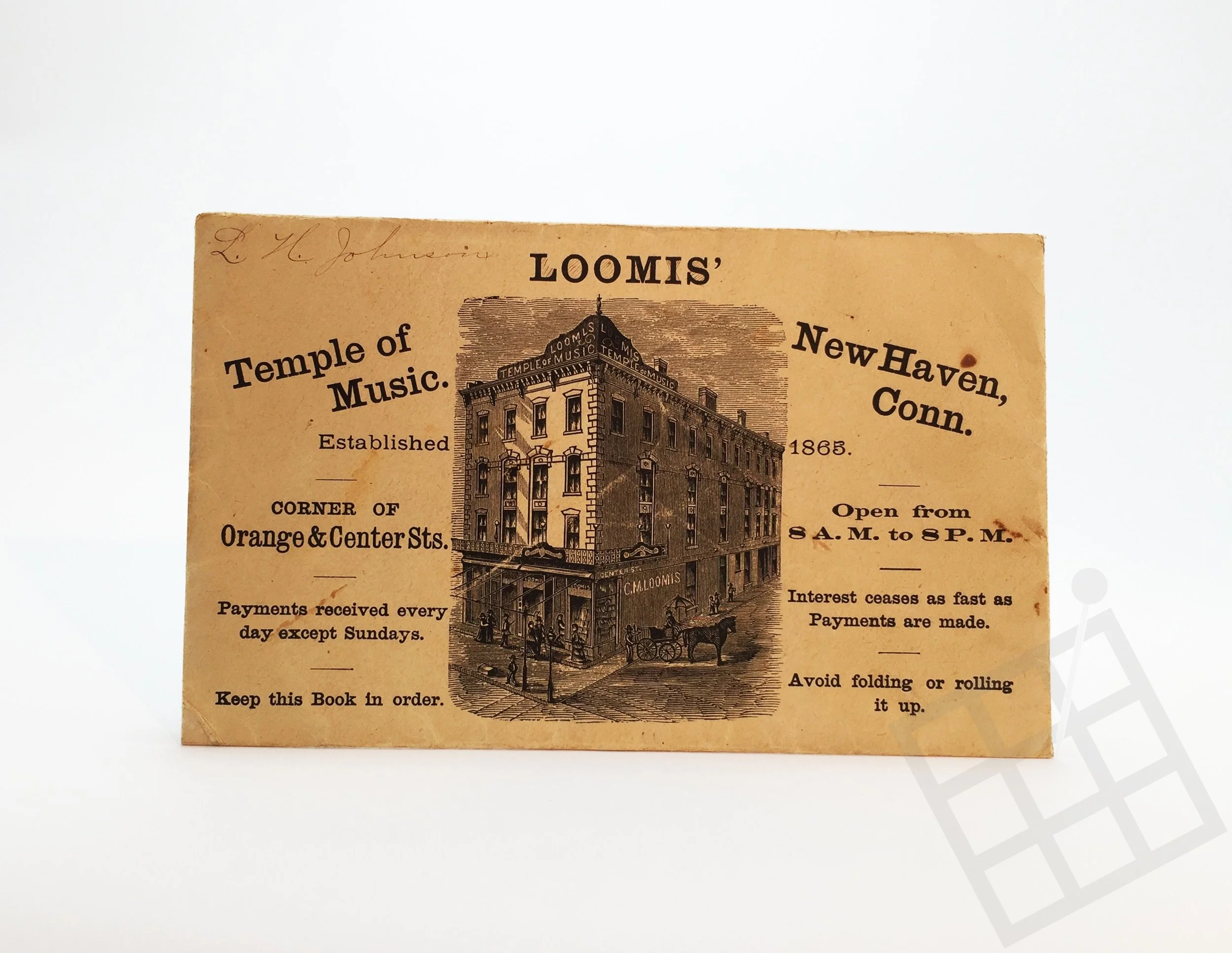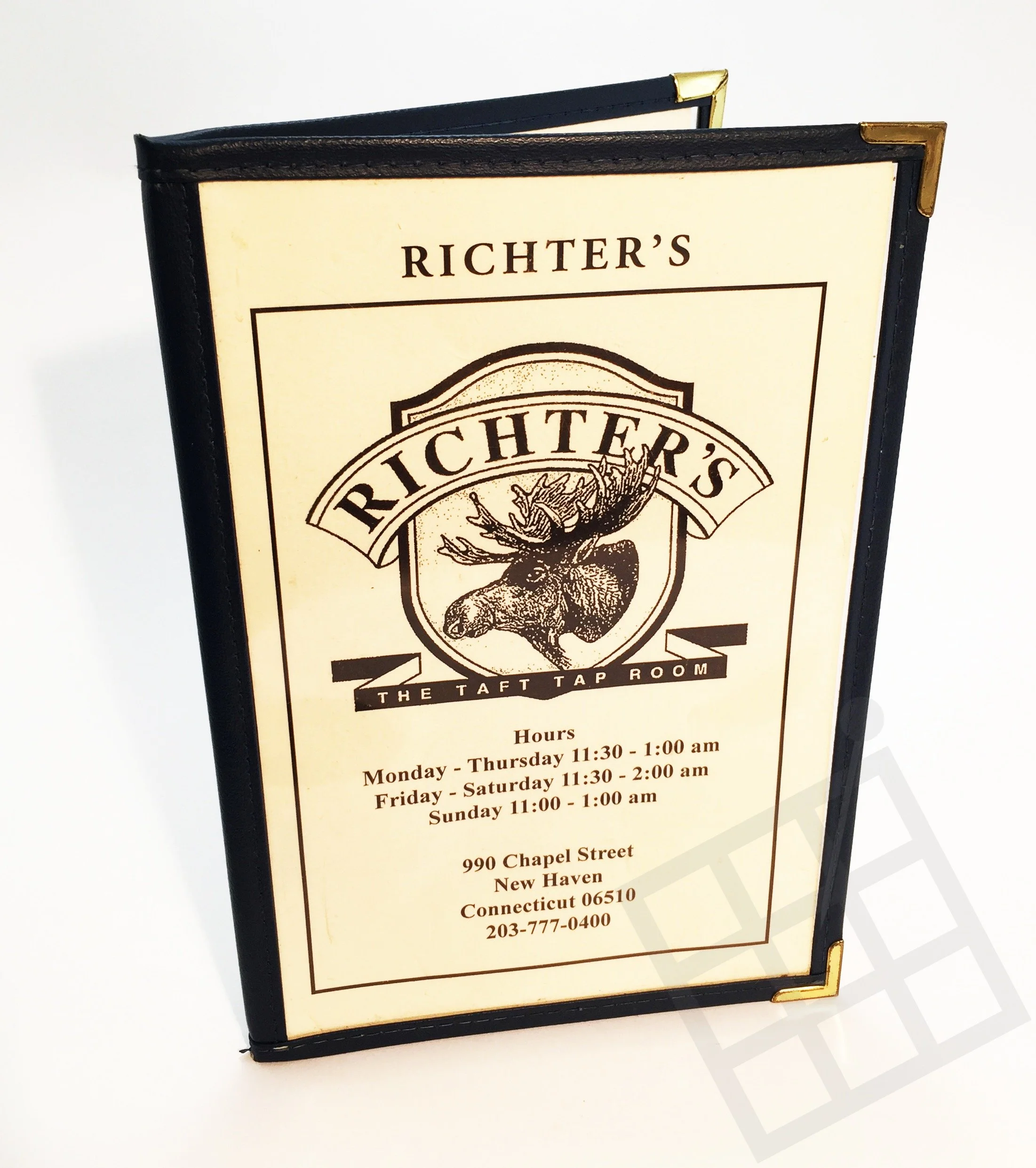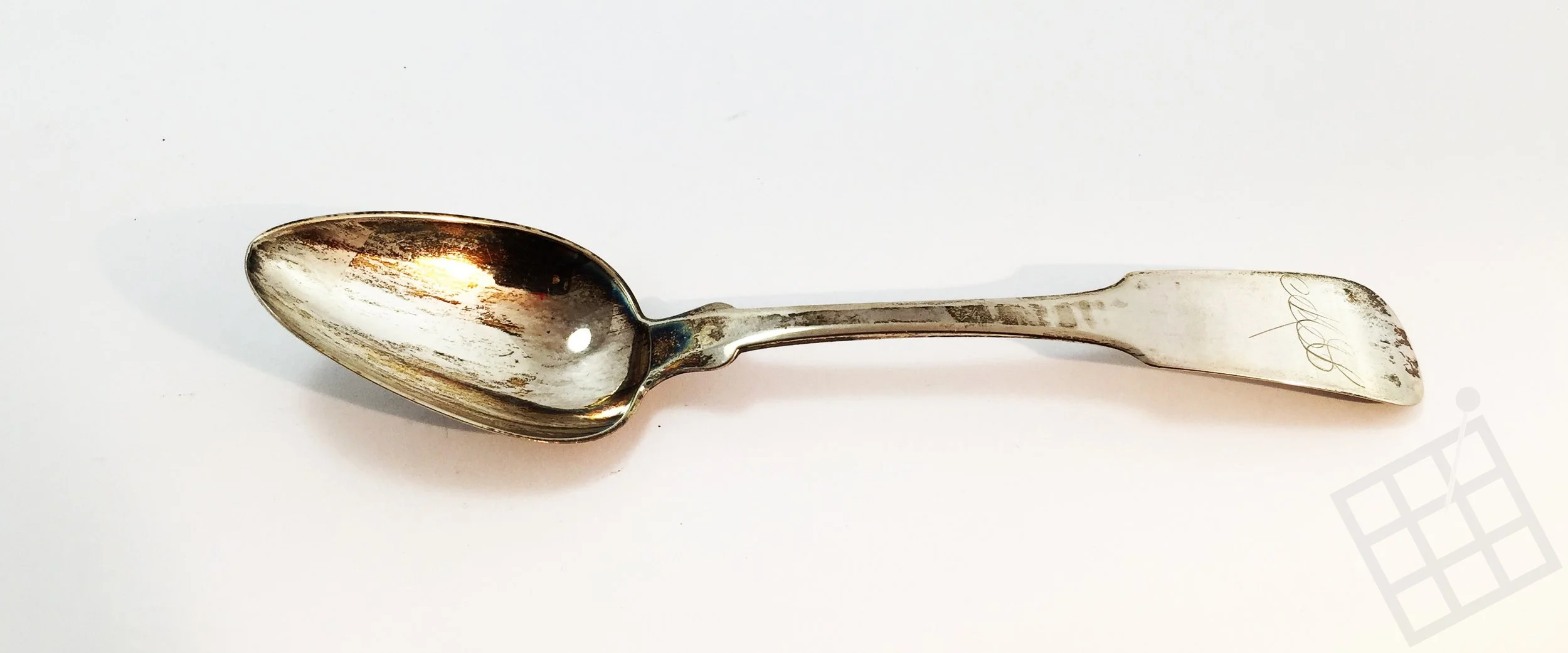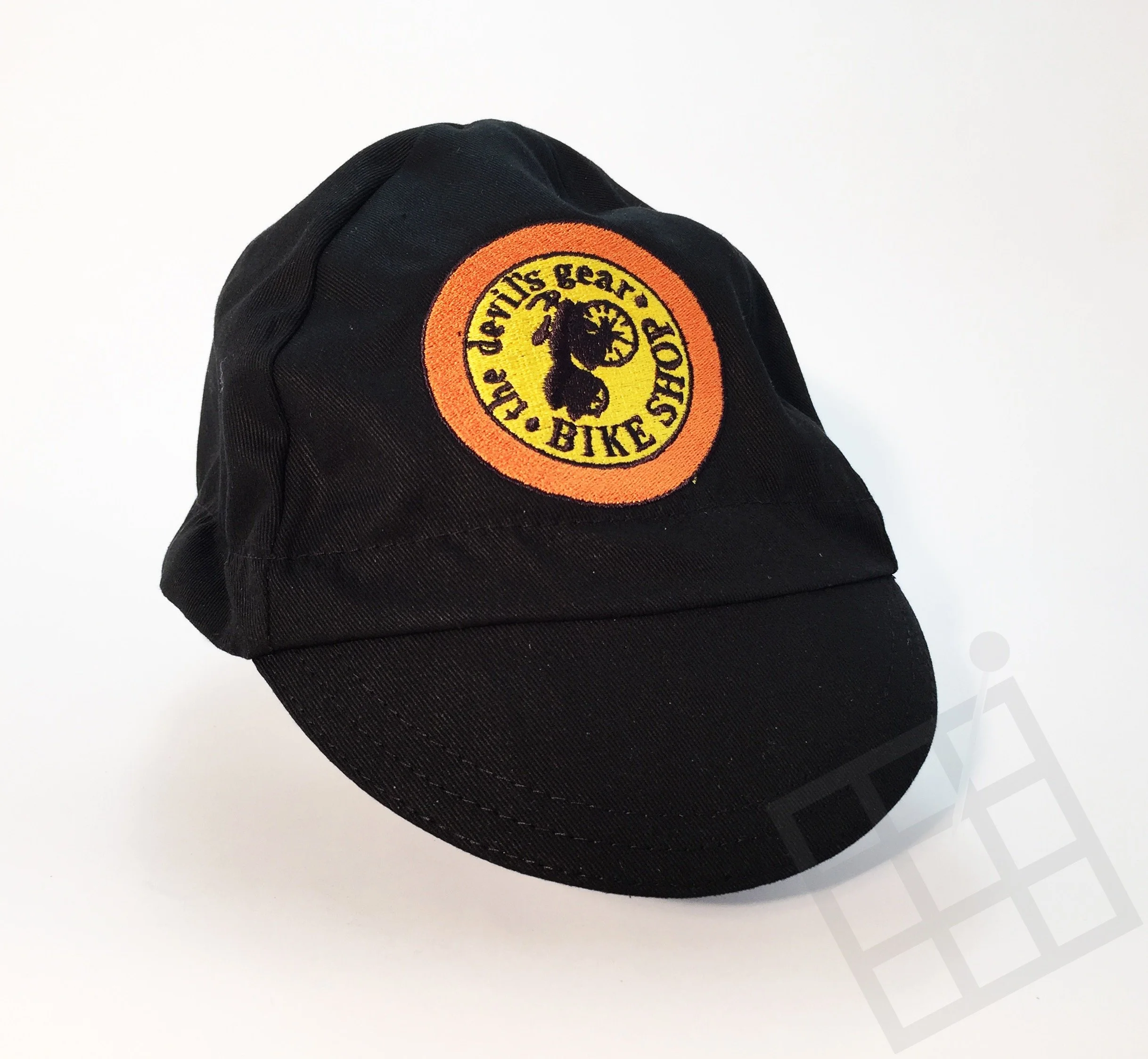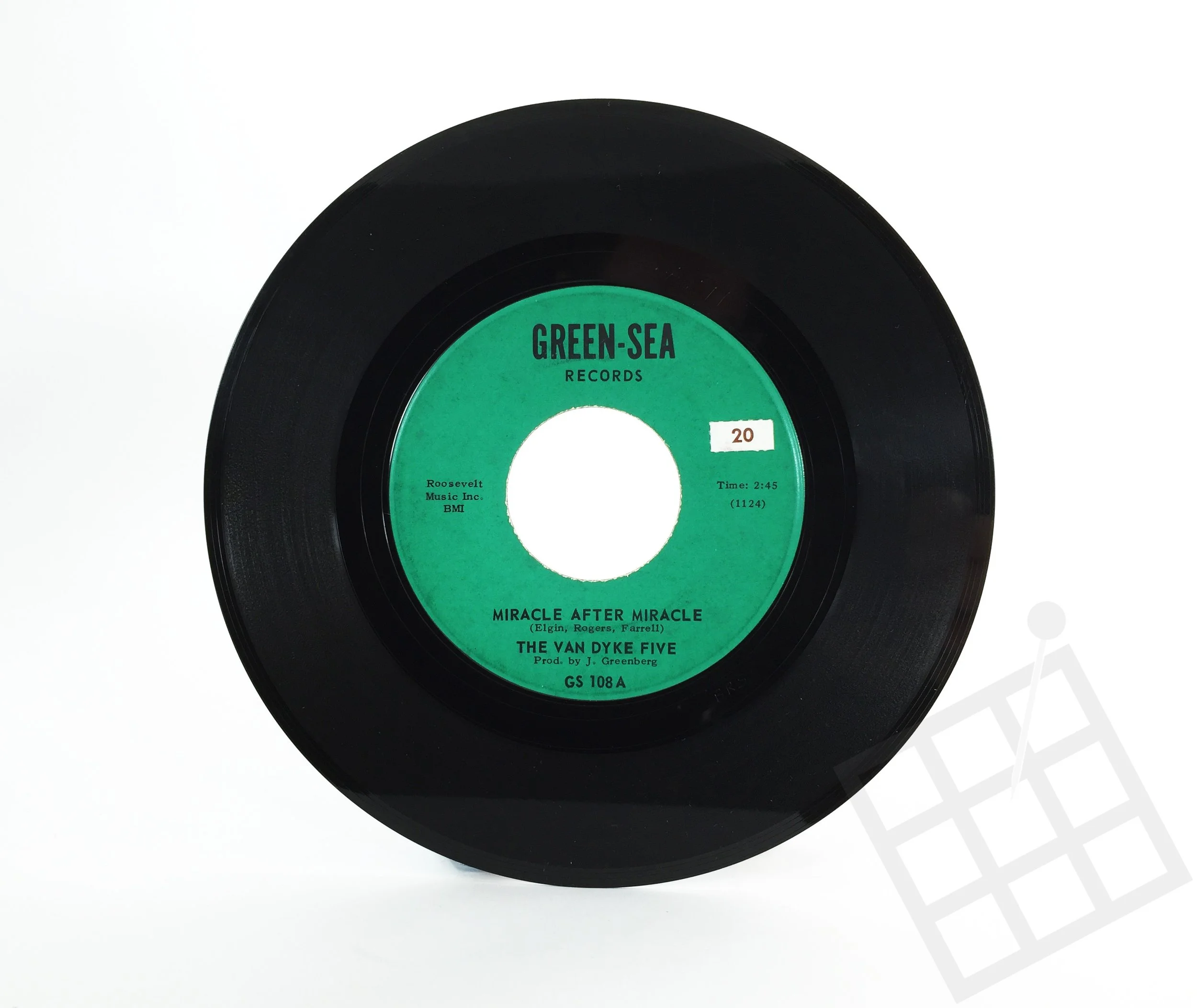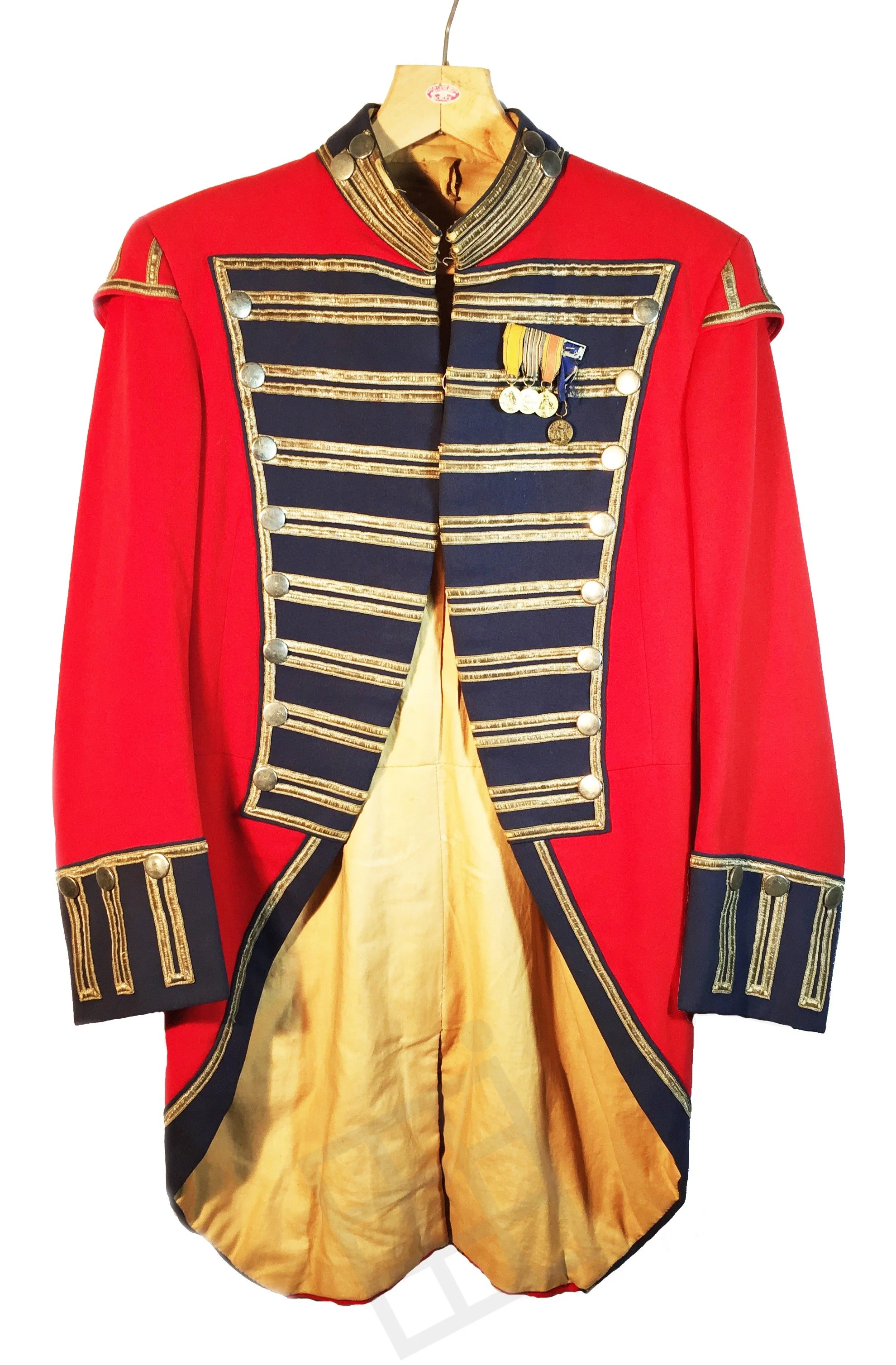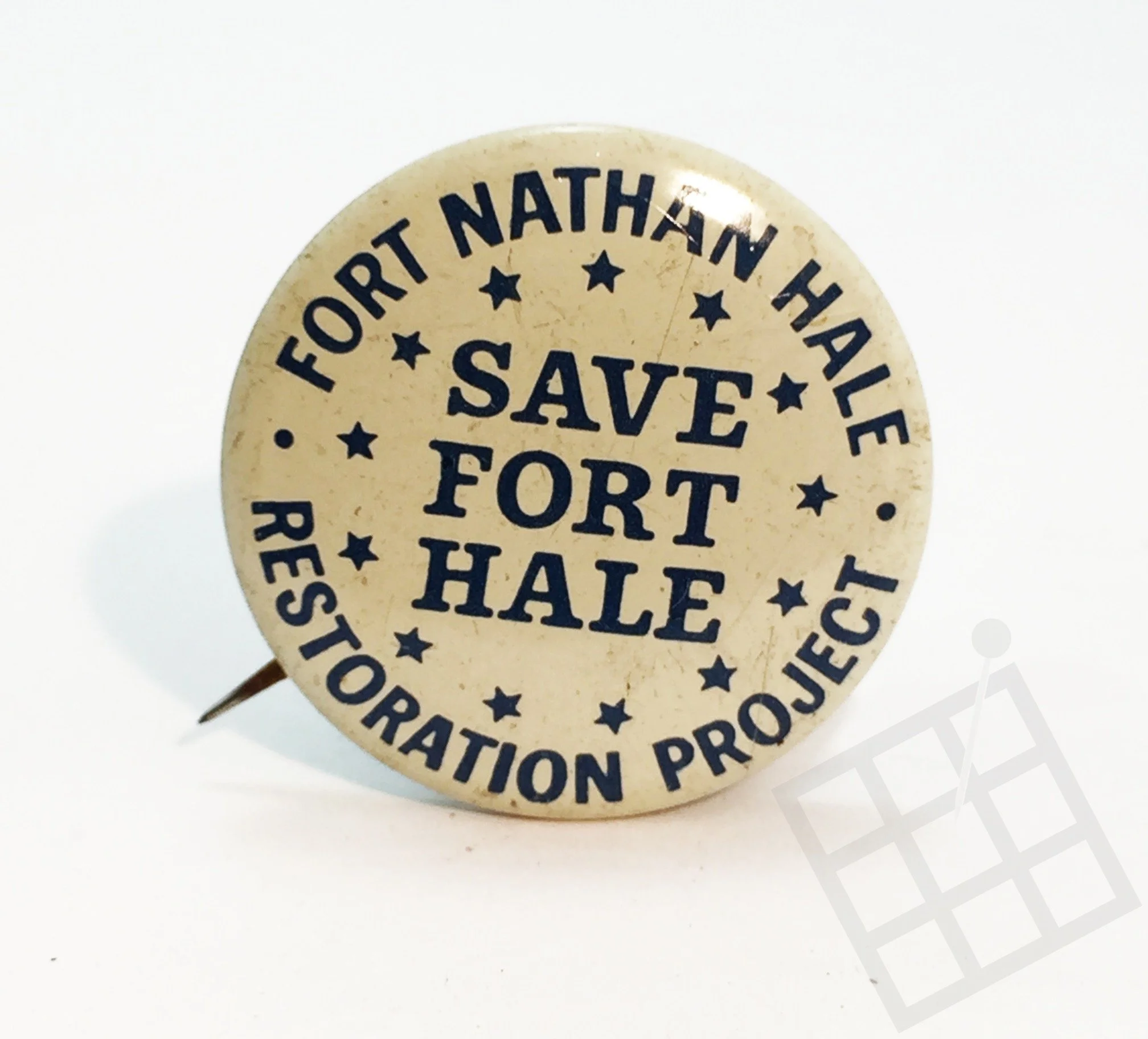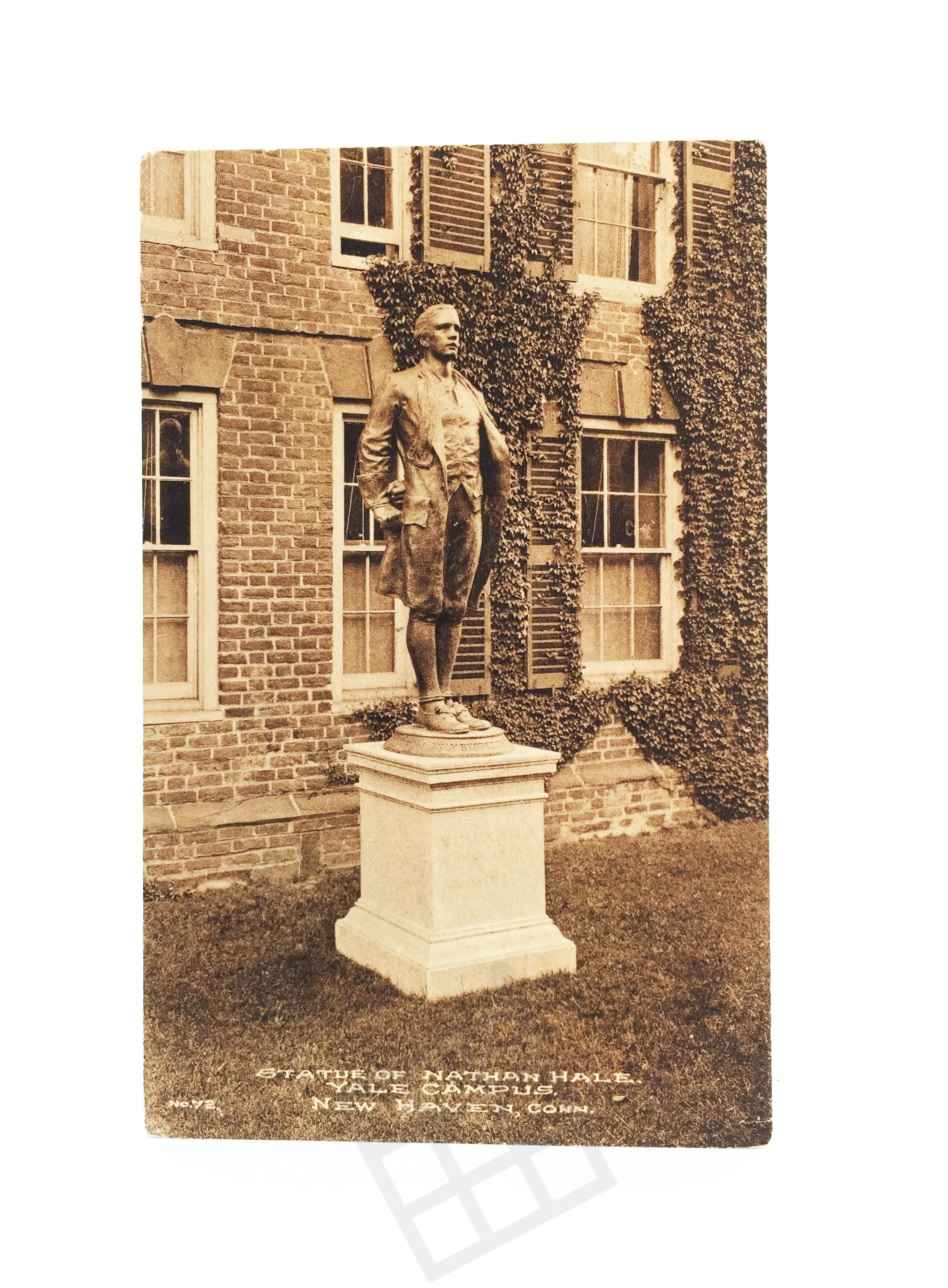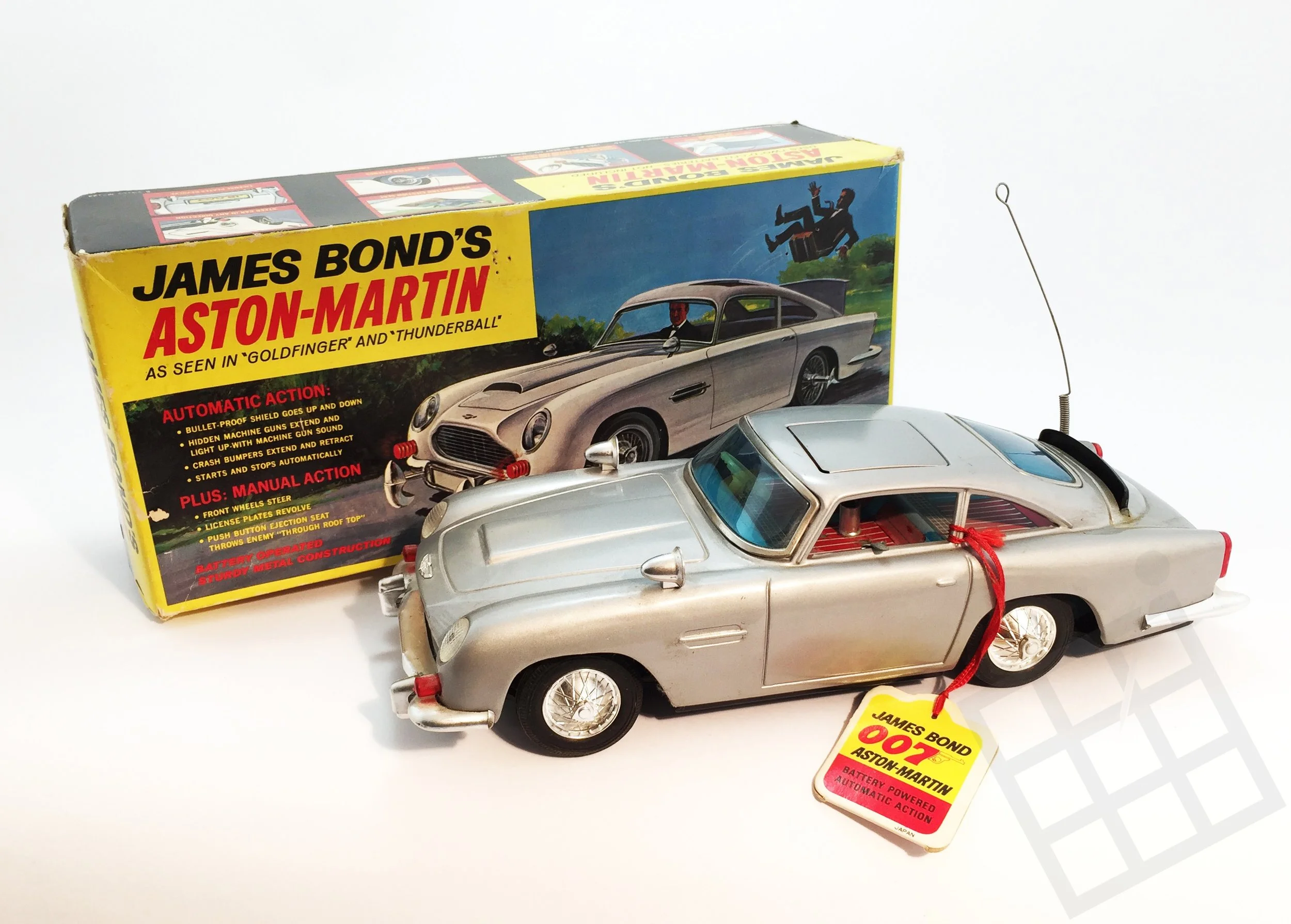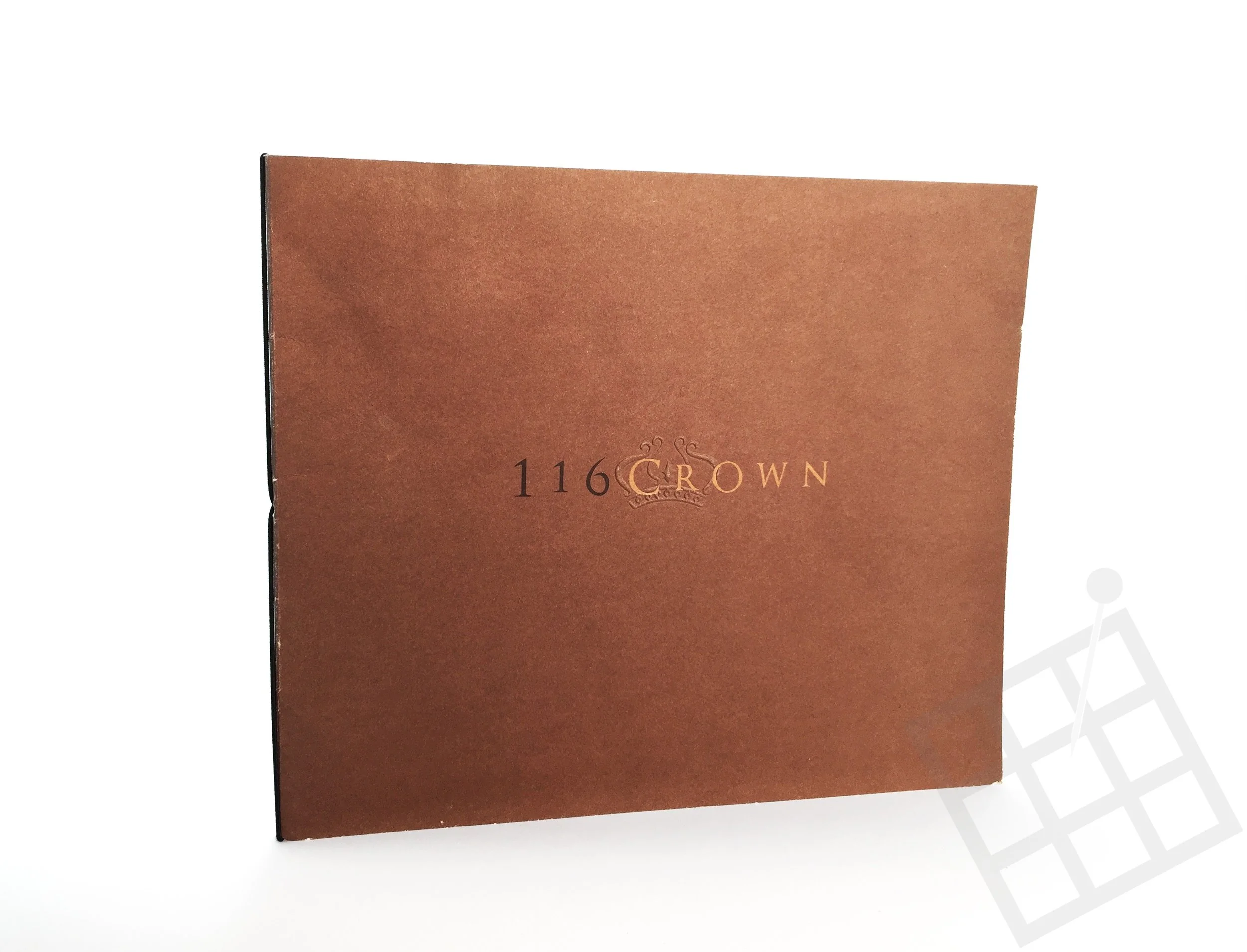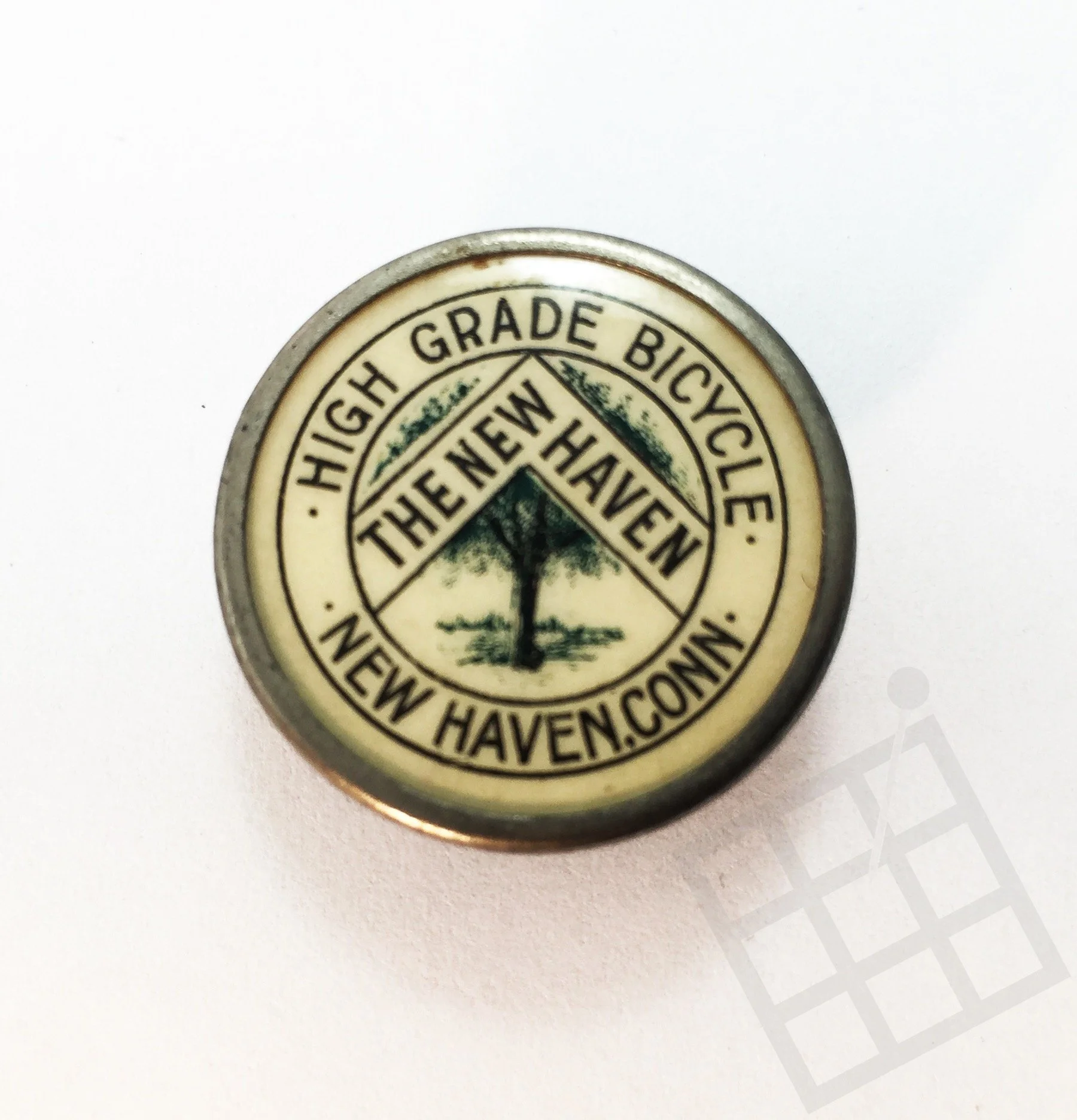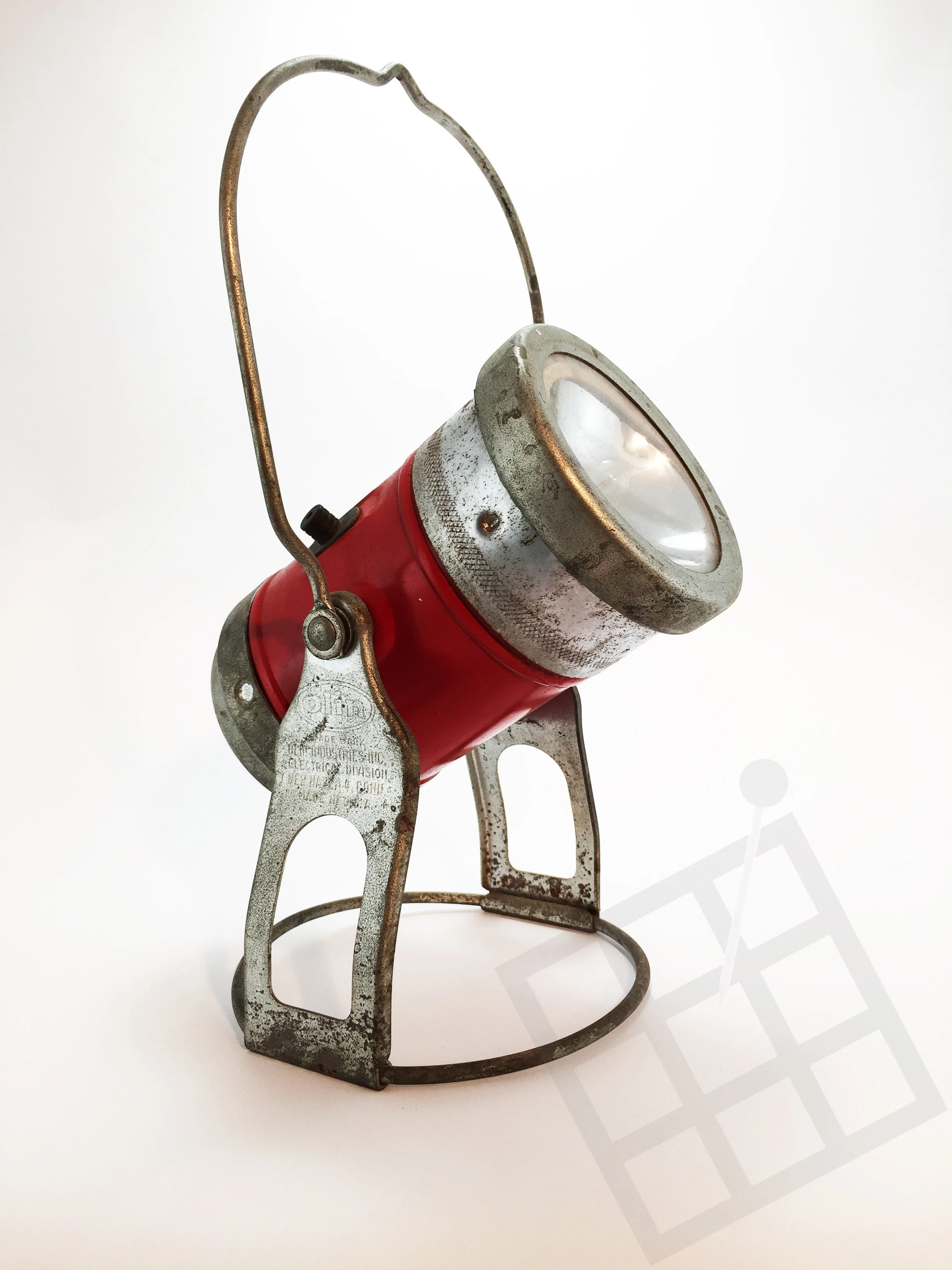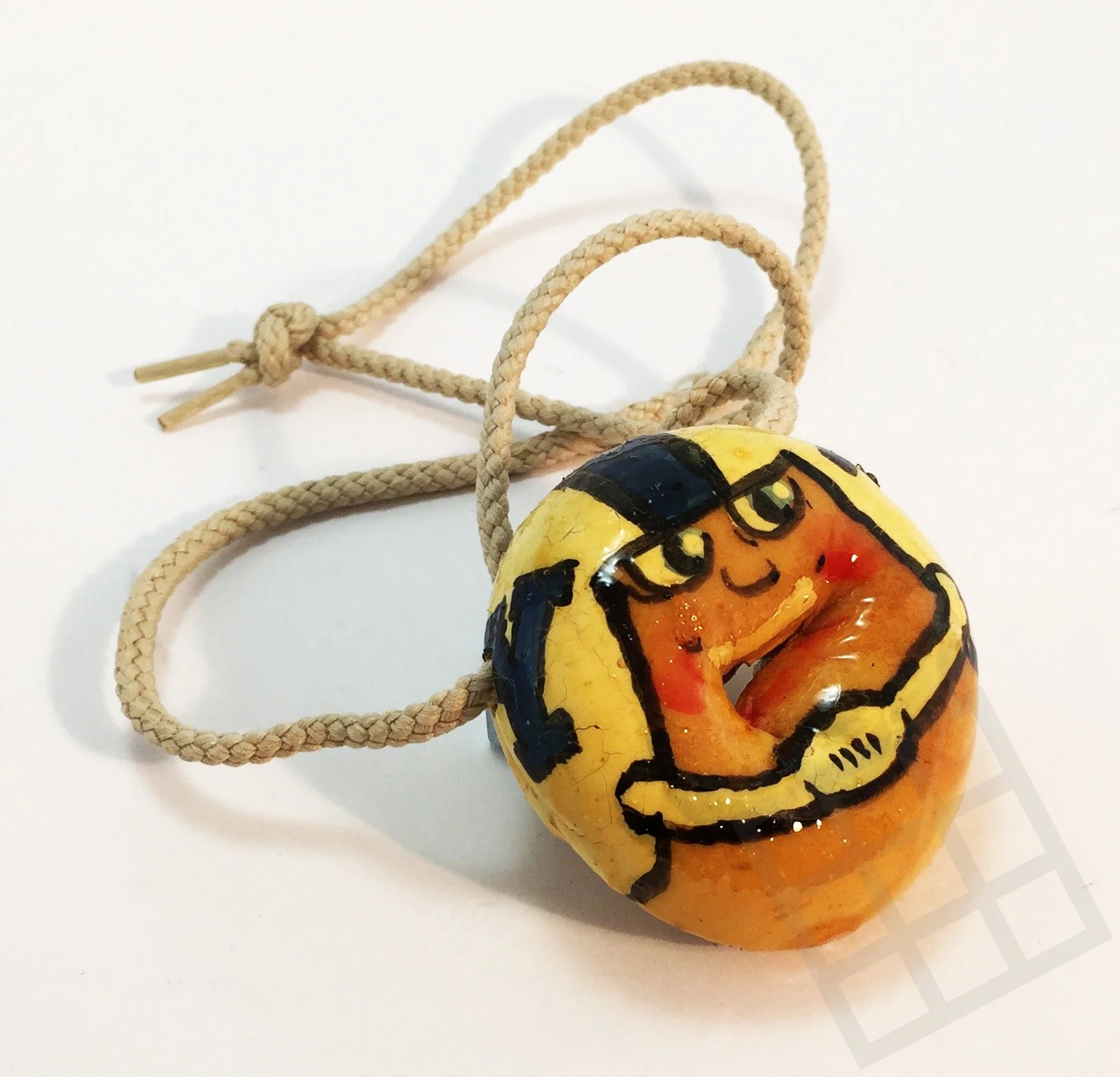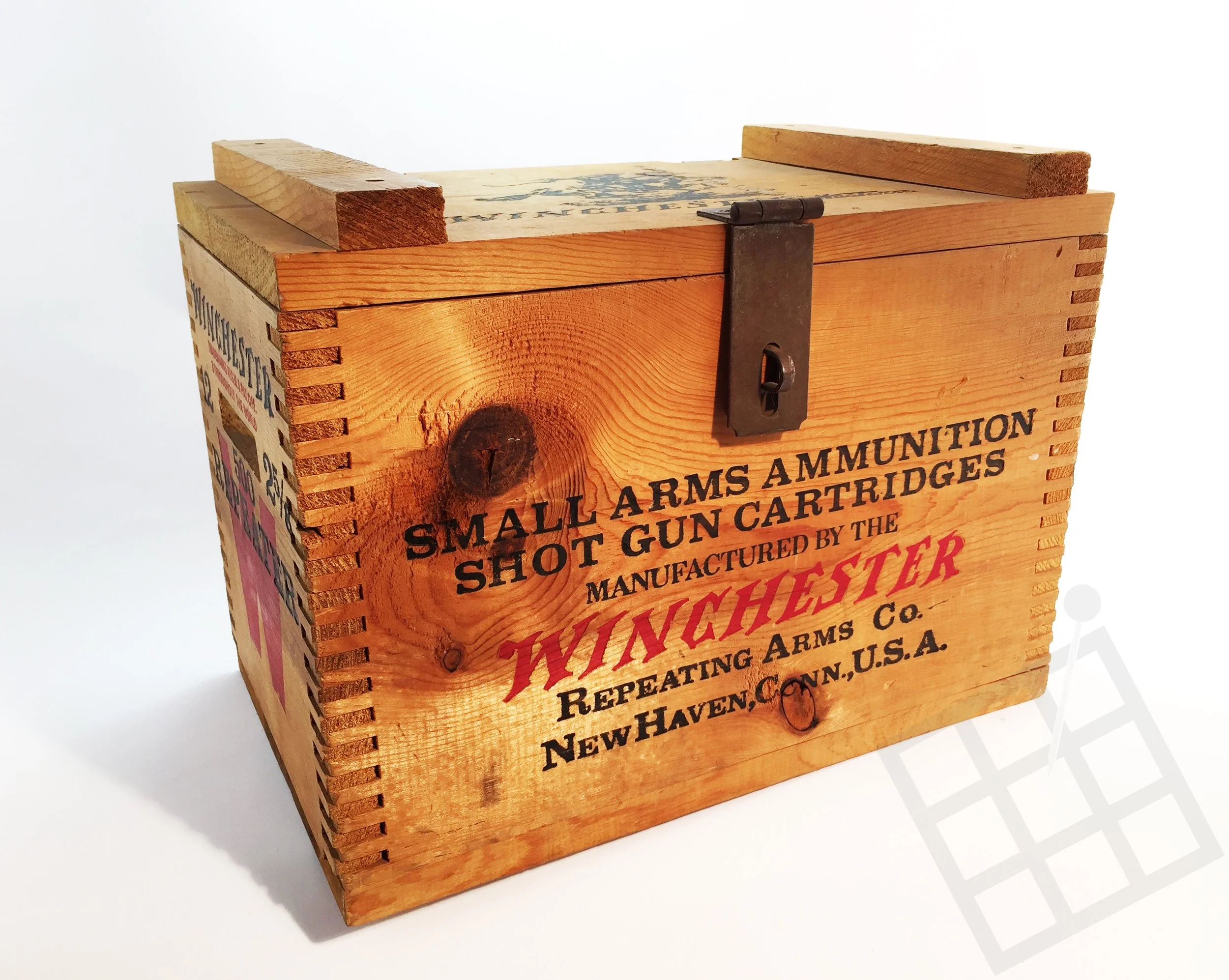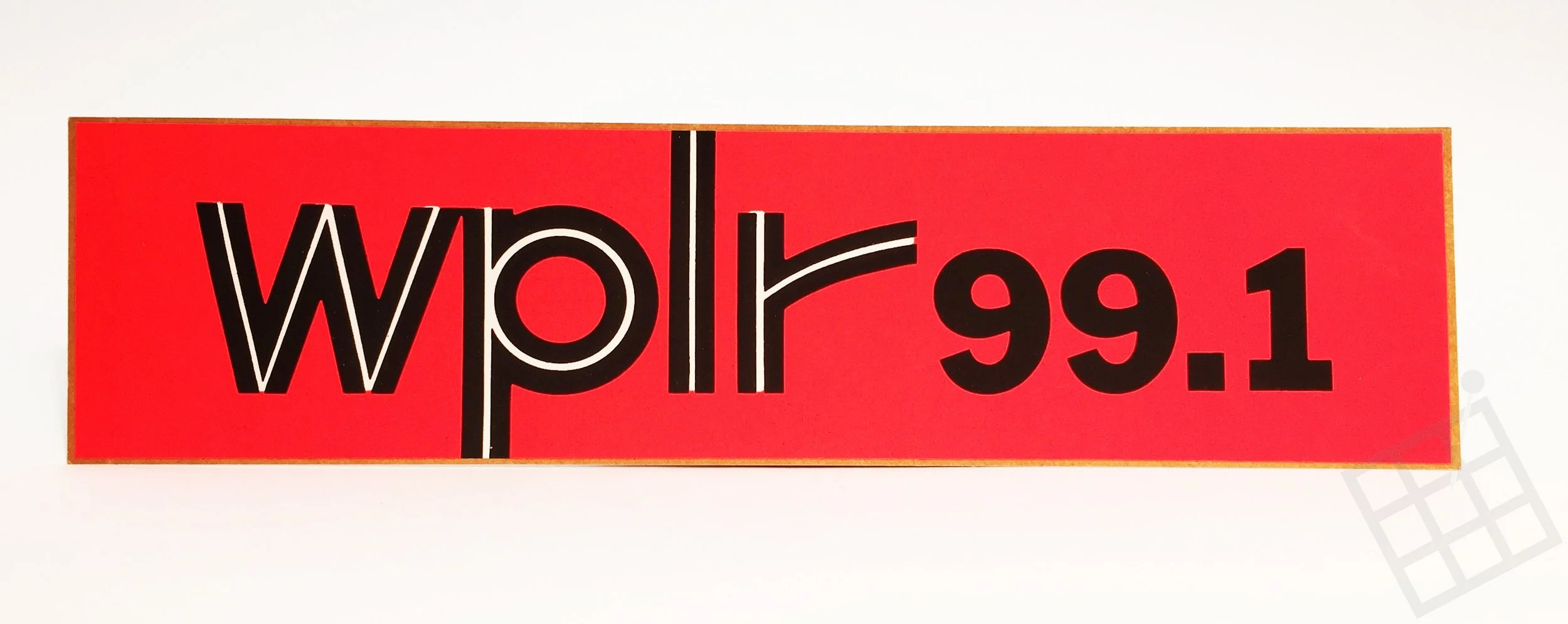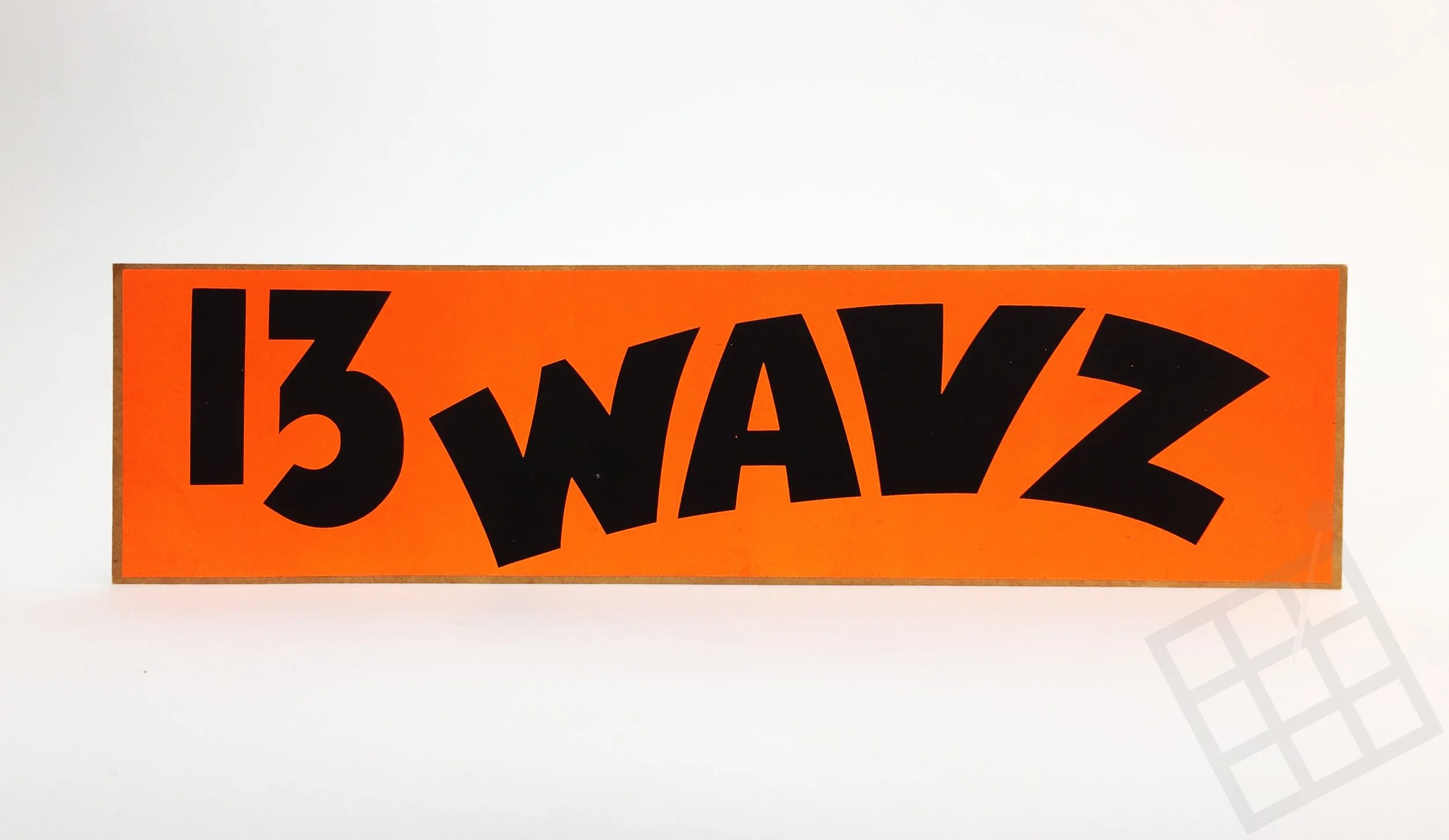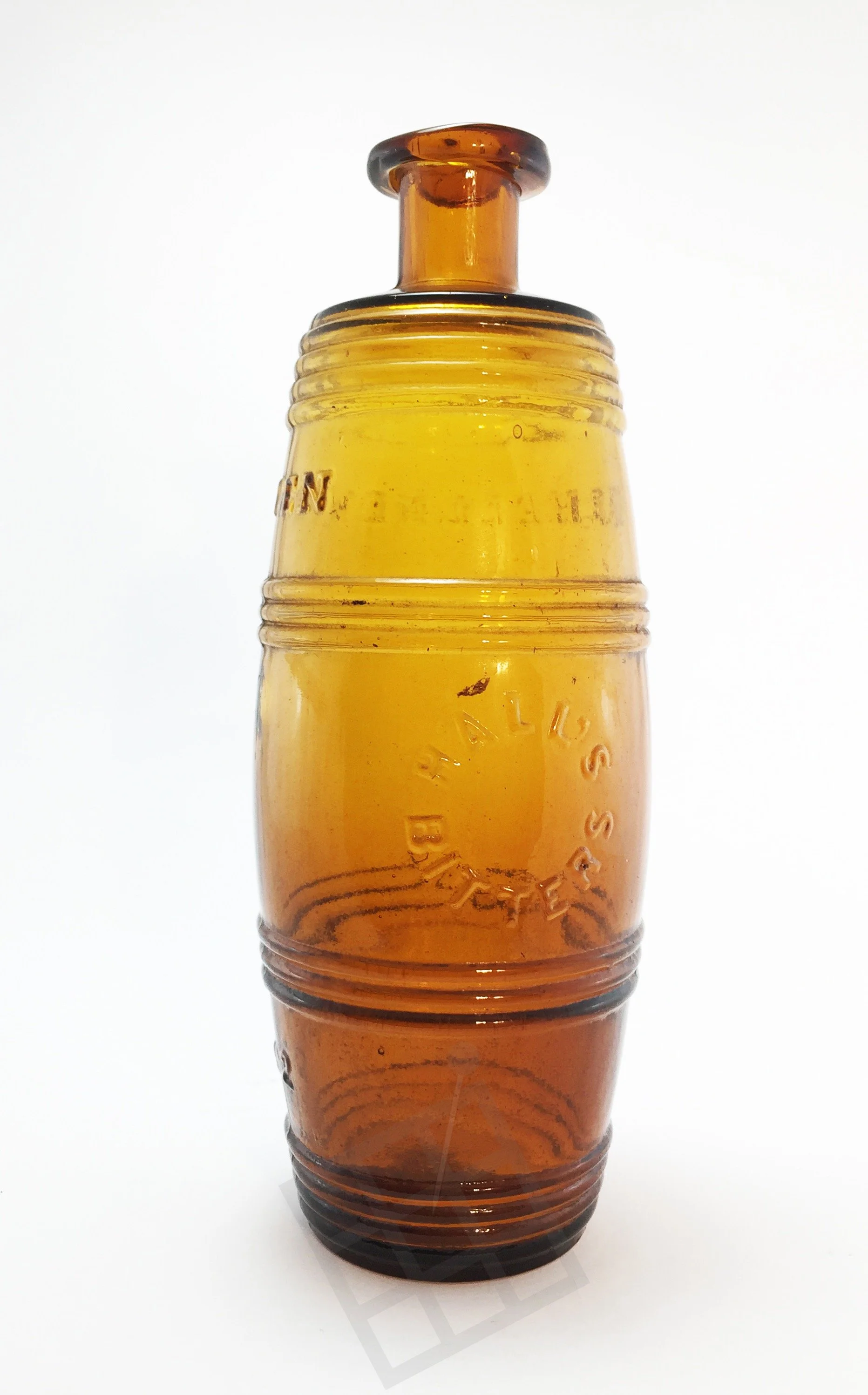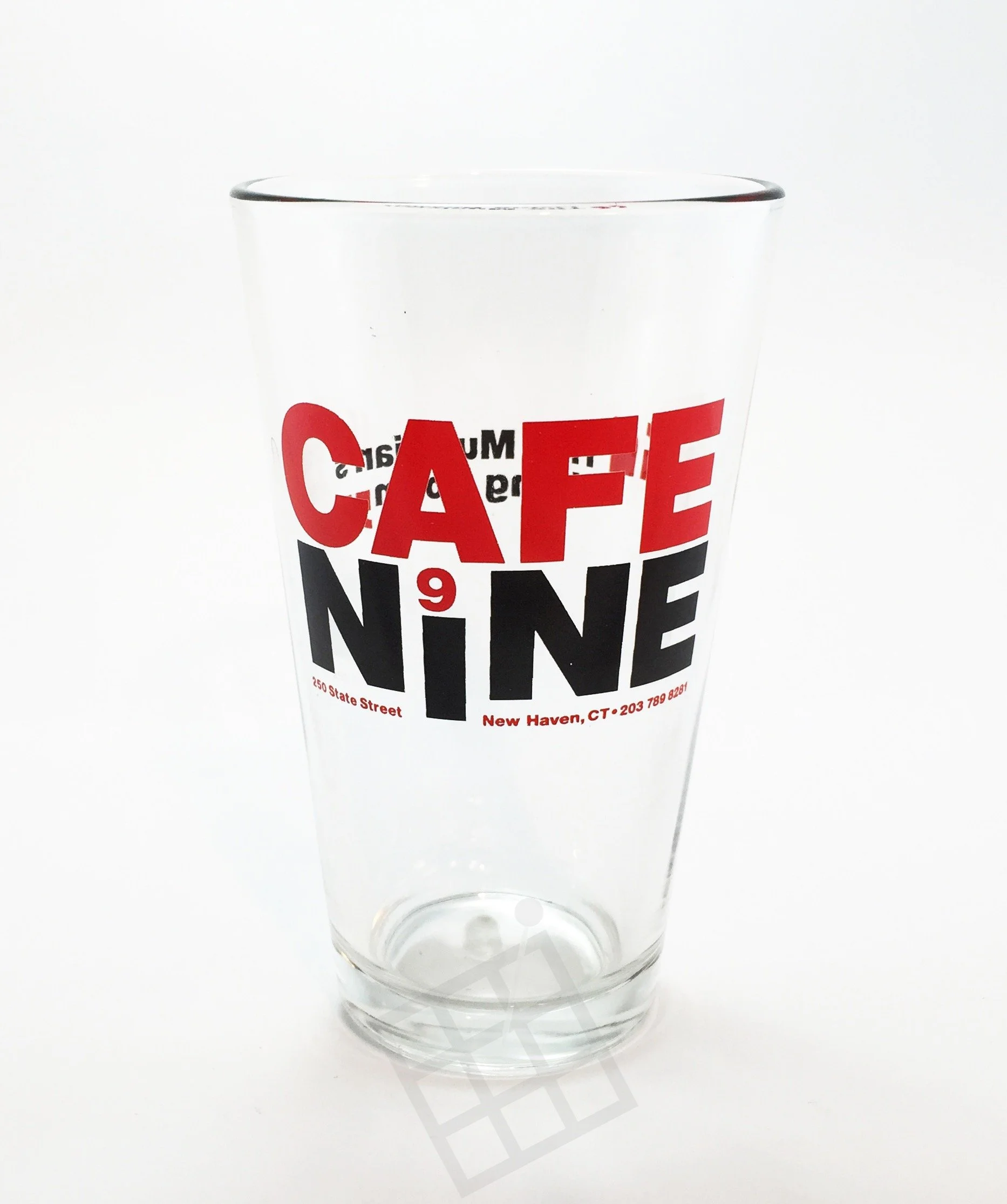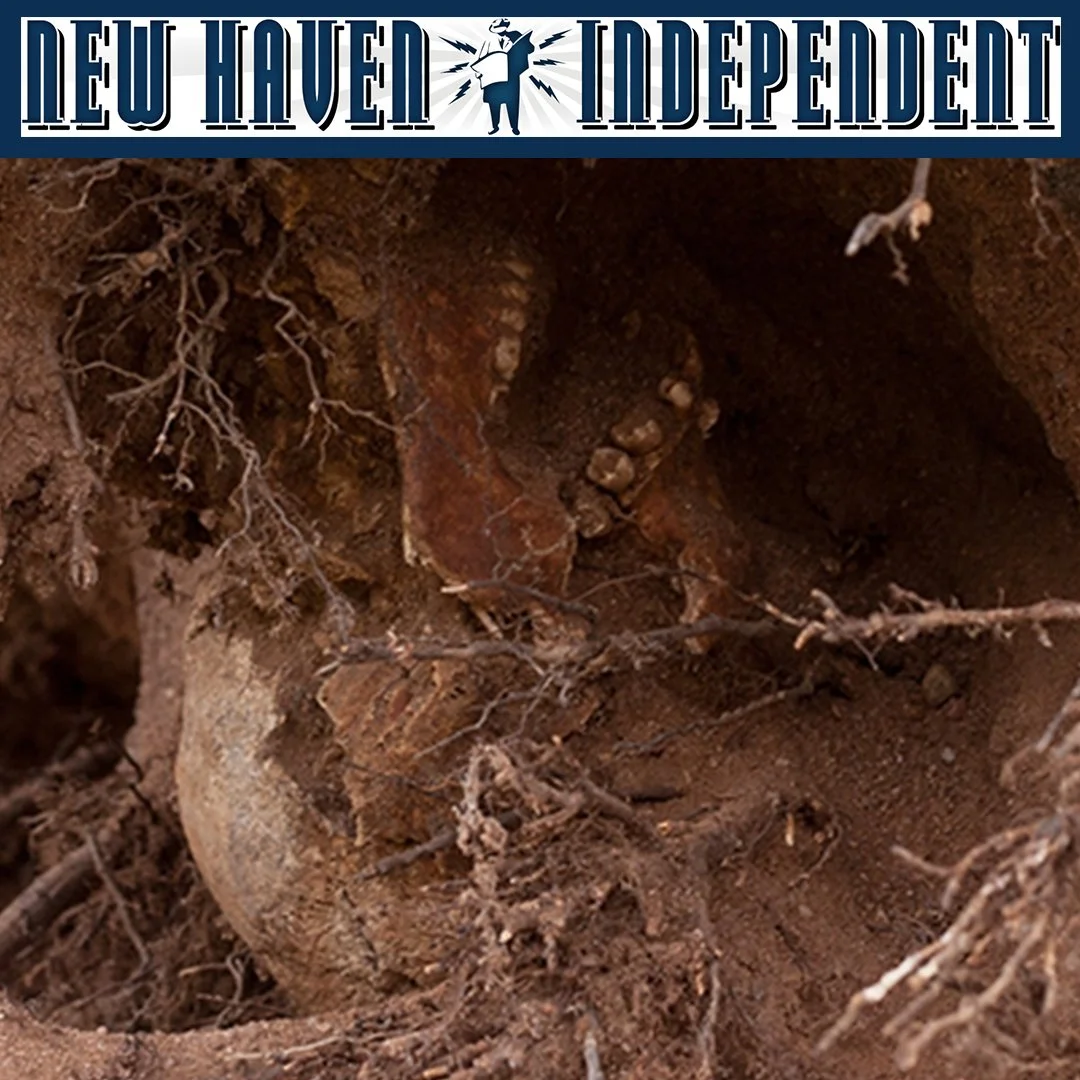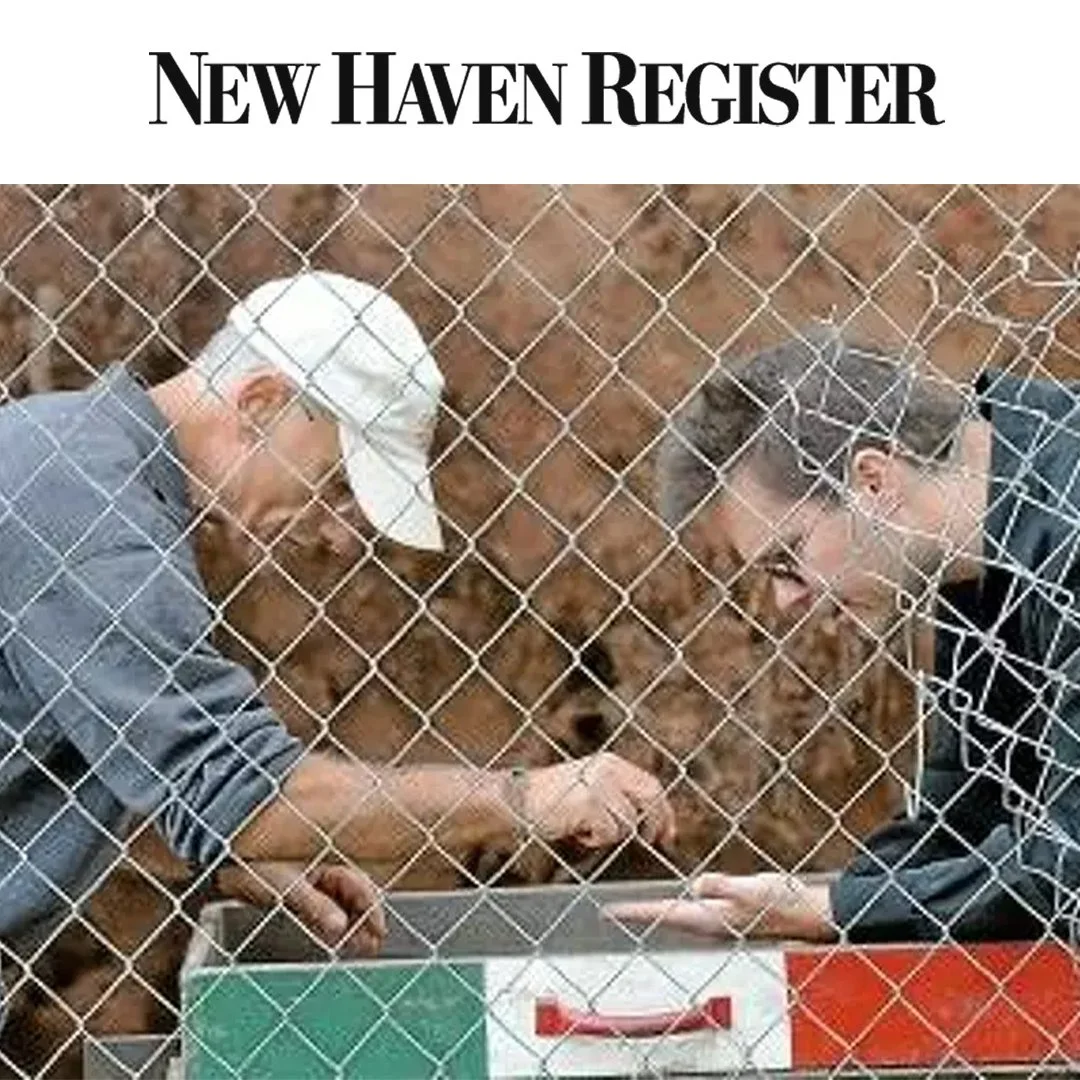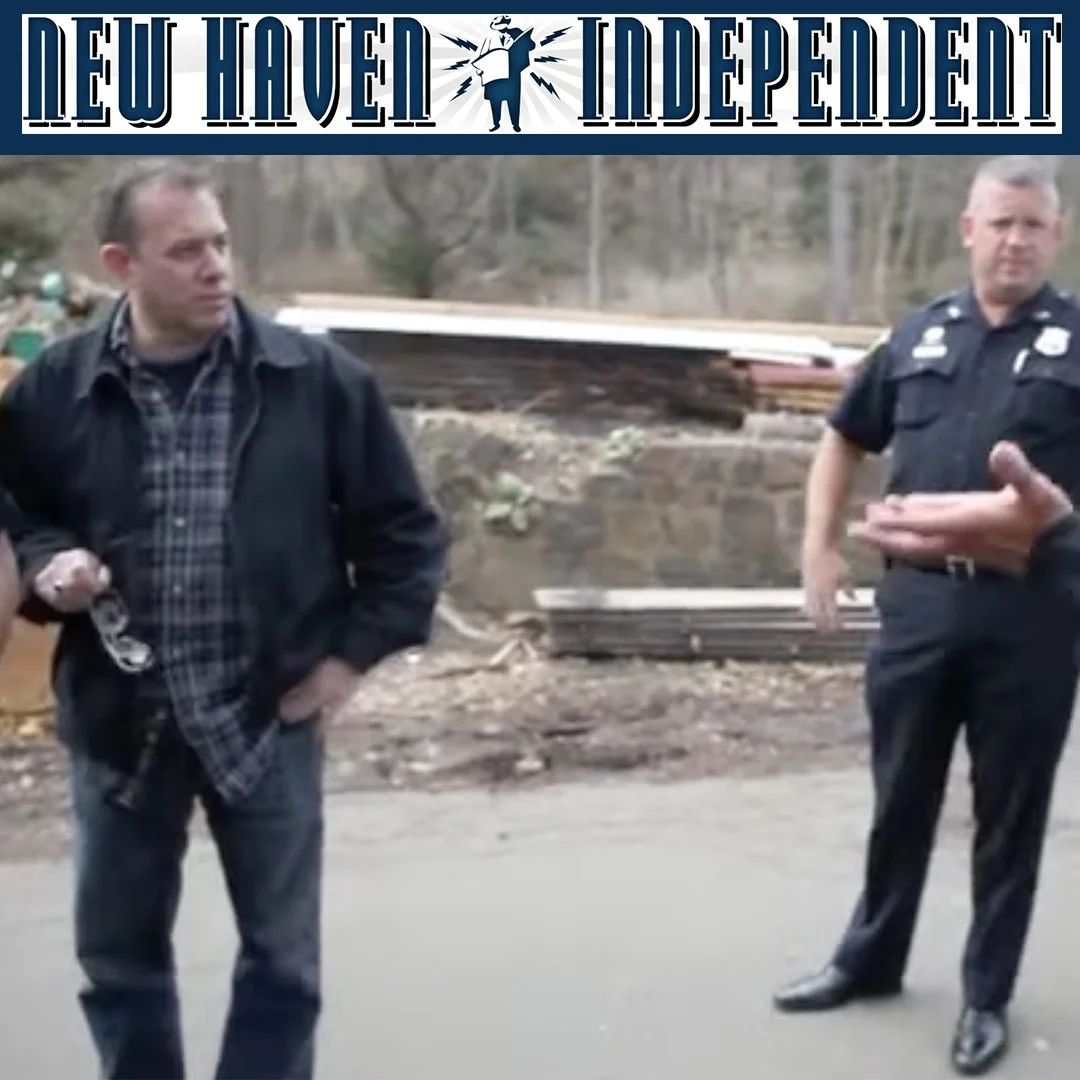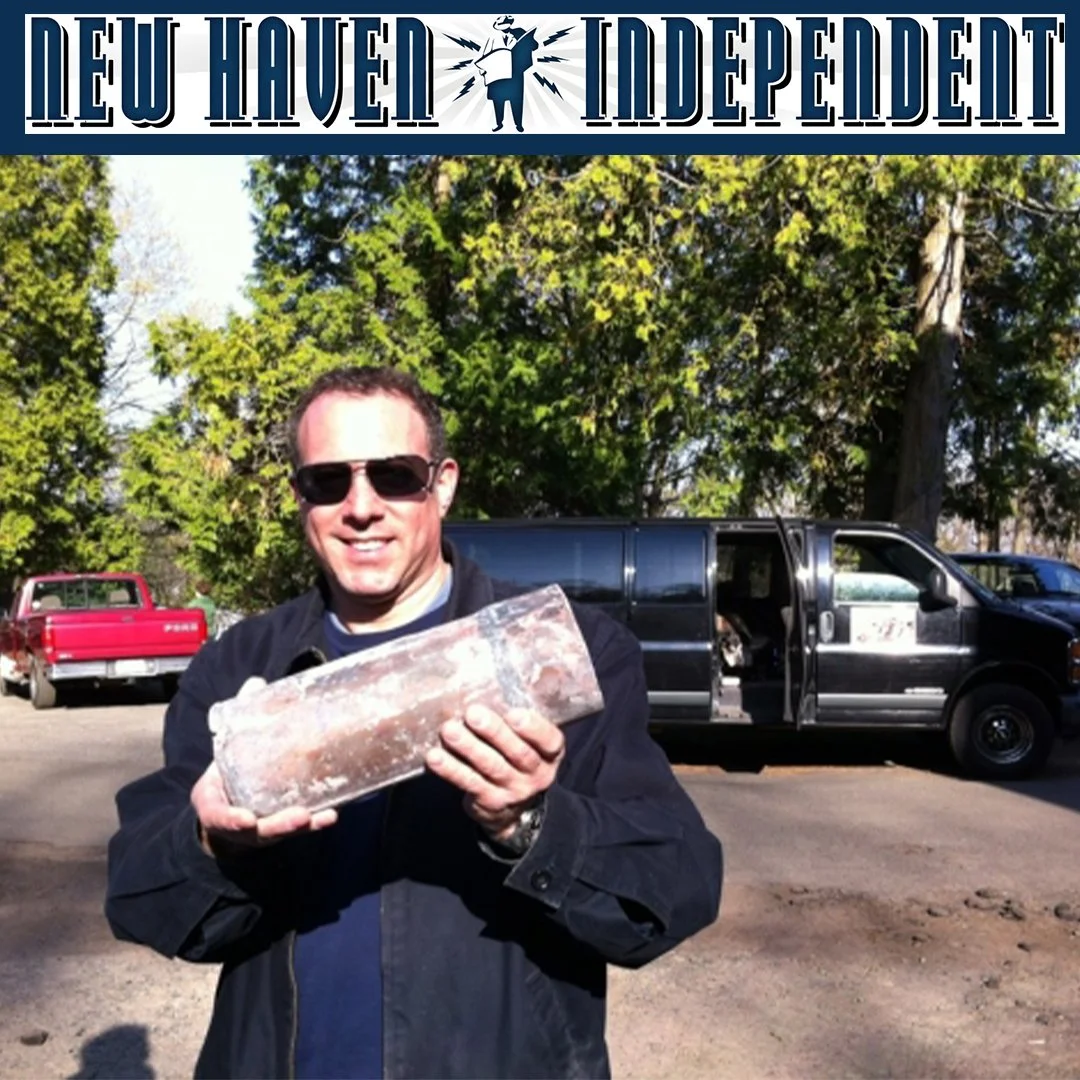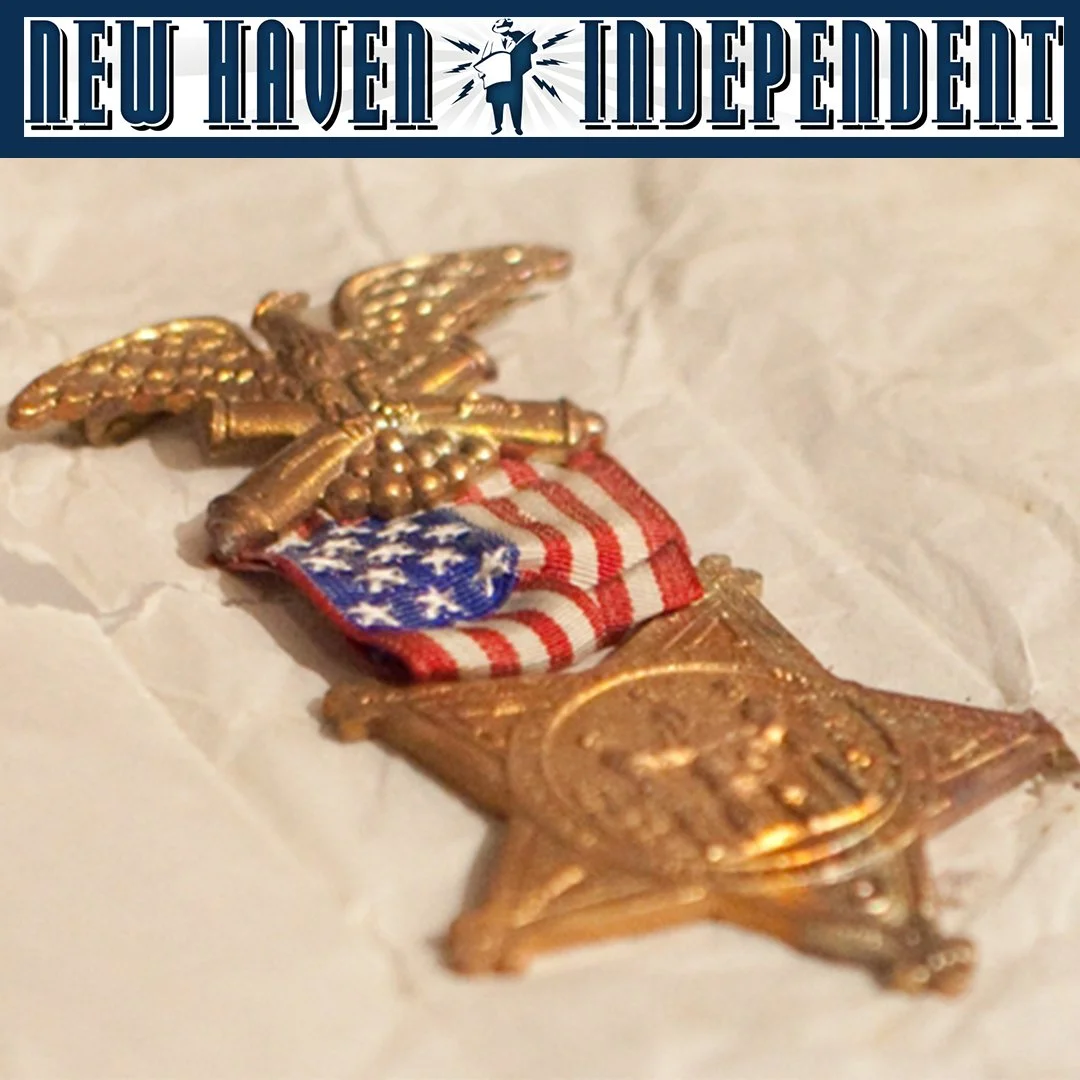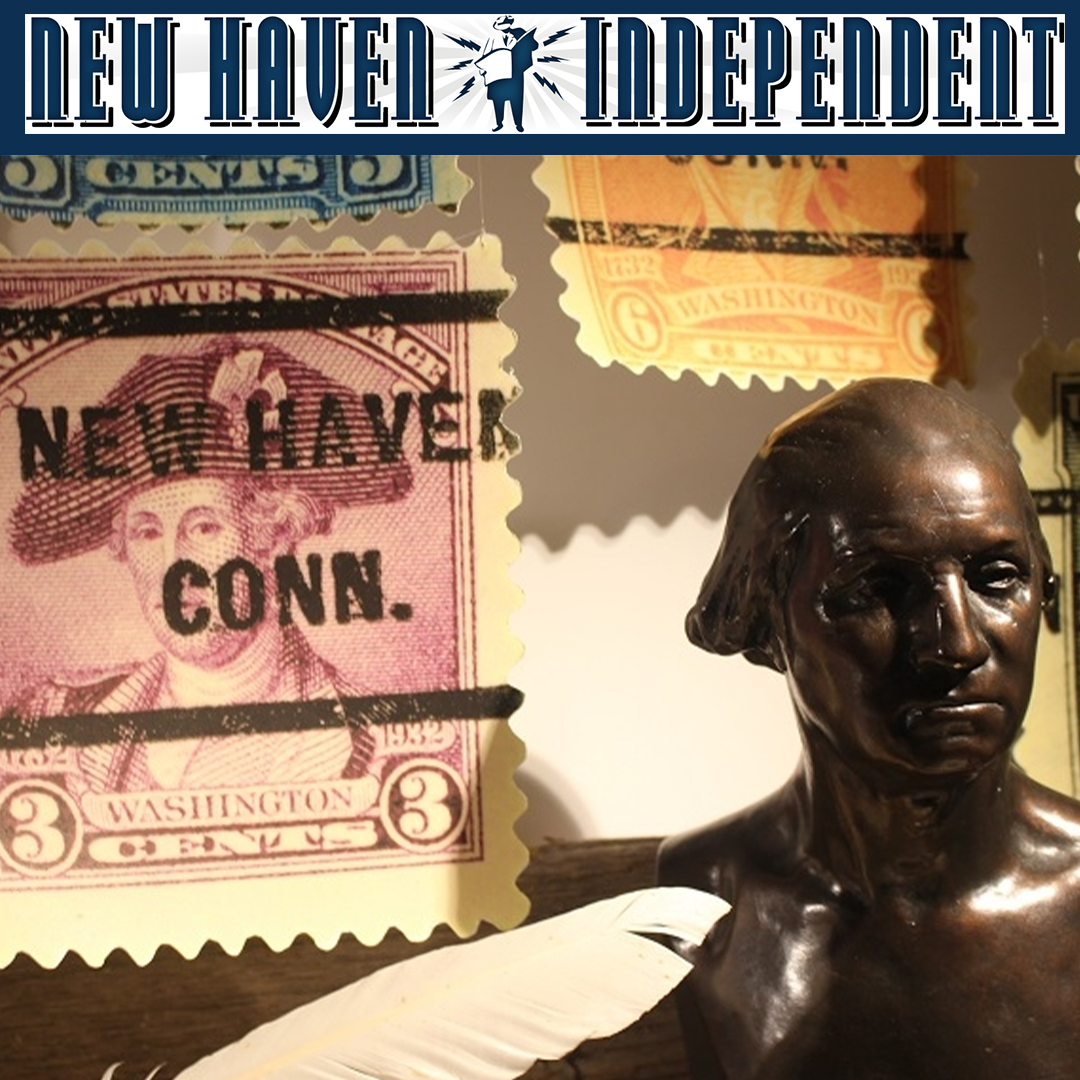Quinnipiac Nation arrowheads found around West Rock, collected by notable 20th century architectural historian Frederick J. Kelley.
Beaver Skin Top Hat, 19th century.
A.C. Gilbert hairdryer, manufactured in Fair Haven, c. 1930's.
Advertisement card for John E. Bassett hardware and sportsmen supplies, the nation's longest-ran hardware firm (1784-1968).
Print of 1881 "The First Sunday at New Haven" (unknown artist), depicting Davenport's first sermon with Puritan settlers at what is now the intersection of George and College Street on April 25, 1638.
New Haven Trench Lighter, c. WW1.
Piece of West Rock, one of two rock formations flanking New Haven valley.
Albertype Co. (est. 1880) Postcard of New Haven's Franklin Elm.
19th Century Chauncey Jerome Clock.
1790 New Haven Almanac.
Cream Ale can from The Hull Brewing Company (1872-1977).
Historic postcard of Elihu Yale, founder of Yale University.
Late 20th century New Haven Chamber of Commerce bumper sticker.
H.C. Rowe & Co. oyster tin, early 1900's.
Clark's Best Screwdriver set, late 19th century.
New Haven-made telegraph sounder: an electromechanical device used as a telegraph line receiver during the 19th century.
Historic photograph of Connecticut Hall, third-oldest American colonial-era college building, and the second-oldest structure built for Yale College (1748 - 1752).
1888 ribbon commemorating the 250th anniversary of the New Haven settlement.
1907 collection of Alfonso M. Simon's photographs of New Haven.
Steel from New Haven Coliseum, recovered from the 2007 demolition.
New York, New Haven, and Hartford railroad (NY, NH & H) toy metal train car, c. 1930.
1851 Goodyear patent rubber button, Novelty Rubber Co.
Mallory Wheeler & Co. (1834 - 1913) padlock and key.
Wax Crayons from the New Haven City School District, circa 1900.
New Haven Water Co. Hat, 20th century.
Peck Brothers &Co. drain cover, 19th century.
Historic Photograph of Winchester Repeating Arms factory, c. 1900.
Postcard of Benedict Arnold House, late 19th century.
Rivet Bolt to Pearl Harbor Memorial Bridge (Q Bridge), New Haven, c. 1958.
New Haven City Hall Stereoview, c. 1860.
New York, New Haven, & Hartford Railroad buffalo china dish, early 20th century.
Henry Bullet, New Haven Arms Company (manufactured between 1860 and 1866).
New Haven WW1 Medal.
34. Yale Co-op (1885-2000) bookmark, mid-century.
Photograph portrait of Jennie Cramer, c. 1880.
G. & D. Cook & Co. catalogue of carriages, mid-19th century.
U.S. Post Office badge, New Haven c. 1900.
Harris, State Street stoneware, late 19th century.
Mory's (est. 1849) History brochure, 20th century.
Cutler's Record Shop business card, late 20th century.
New Haven Police hat, mid-20th century.
Frank J. Rice campaign button, c. 1910.
Mid-century Hotel Taft luggage ticket.
Steel hook, Fish Hook & Needle Co., c. 1865.
Kilborn & Bishop Co. (est. 1896) wrench.
Kickapoo Medicine Co. (est. 1881) Indian Sagwa bottle.
Mid-century Acme Furniture Co. shirt badge.
E.E. Hall & Son (est. 1842) Old Bay Rum bottle.
Peck Bros. photography portrait of Abraham Lincoln, c. 1860.
Sally's (est. 1934) pizza box, c. modern day.
Yale University's Peabody Museum, "Age of Reptiles" (1947) mural by Rudolph Zallinger print (c. 1980).
A. E. Gould Black Ink bottle, c. 1900.
New Haven Dairy ice cream sign, c. 1920.
Sperry Duck, c. 1930. (Decoy ducks from Paul Sperry.)
New Haven Cattle Co. shareholder document, 1885.
Fairman's Ice Crusher, c. 1884.
T.E. Twitchell National Bill Holder, c. 1870
Pink Smoothie Corset, Strouse Adler Co. (1876 – 1923)
1963 Official Yale vs. Harvard football game program.
W.H. Wilson & Son oyster jar, late 19th century.
Fritz & Hawley Co. (est. 1900) barometer.
"The Coliseum Book: New Haven Veterans Memorial Coliseum," c. 1990.
New Haven Fire Department photograph of horse drawn fire engine, 1872.
Jim Morrisons's mug shot from his arrest at the New Haven Arena, 1967.
Historic photograph of WWI soldiers gathered on the Green.
Iron Rail segment from New York, New Haven, & Hartford Railroad, c. 1870
Shubert Theatre Program, 1951.
Ponce Molasses jug, Dewell importers, New Haven, c. 1900
Opera Binoculars, early 20th century.
Straw Hat, c. 1920
Sargent's & Co. cowbell, c. 1860
New Haven Dairy, Sealtest milk bottle, c. 1930
Bulldog paperweight from Yale Upholstering Co., 20th century.
Historic Photograph of Grove Street Cemetery gate, c. 1890.
Cott Soda advertisement display, c. 1950.
"Elm City Women and Child" tintype, c. 1860.
New Haven Horse Association, Hamilton Park season ticket, 19th century.
Commemorative pin for New Haven's 300th anniversary, 1938.
Tape tin, New England Typewriter Exchange, c. 1910.
1935 New Haven Journal-Courier newspaper, "Joe Louis Knocks Out Baer."
Baggage Master hat, New York, New Haven, & Hartford Railroad, c. 1930
J. Matthewman powder flask, manufactured between 1845 and 1871.
Rogers & Co. silver plate dressings tray, c. 1865
Mid-century ashtray, Sero shirts.
"New Haven Week," commemorative ribbon, 1912.
Oil can, early 20th century.
Historic photograph portrait of Adm. Andrew Hull Foote, c. 1860.
Cigar Box from F. D. Graves, c. 1890.
Hotel Duncan postal envelope, 1921.
Crawford Show Store glass paperweight, c. 1890.
"Beachey off for New Haven" historic photograph of aviator Lincoln Beachey mid-take-off, 1914.
Take-out box, Claire's Corner Copia, modern day.
John W. Murphy campaign button, c. 1940.
Acme Moving & Storage Co. letterhead, 1930.
A.C. Gilbert Fan, c. 1930
J. W. Harris soda bottle, c. 1850
Coffee mug, Yankee Doodle Coffee and Sandwich Shop (1950-2008)
Rubbing of commemorative George Washington bronze plaque of 1932.
Savitt Jewelers (1920-2012) gemstone cut models, midcentury.
Elvis concert ticket, New Haven Veterans Memorial Coliseum, 1975.
Late 19th century pressure gauge, New Haven Steam Heating Co. (est. 1854)
Stone from Yale University Street Hall (completed 1864).
First New Haven National Bank building figure, c. 1960.
Yale Felt Banner, c. 1940
"Tomorrow is Here," New Haven City Plan Commission, 1944.
Plan of the Town of New Haven, by Hon. Gen. Wadsworth, 1784.
Candee Rubber Boots, salesman sample, 19th century.
Handsome Dan branded tobacco tin, c. 1910.
ECA canvas bag, c. 1985.
Hungry Charley's button, c. 1970.
Doyle's "Tomato Catsup" bottle, c. 1915
Hotel Taft menu, c. 1920's.
Black rotary dial phone, c. 1950.
White glazed brick, Macy's Department Store in New Haven (1964-1993).
Poli Theatre weekly program, 1910.
The World of Eli Whitney, by Jeannette Mirsky and Allan Nevins (Published by The Macmillan Company, New York: 1952.)
New Haven Fire Department helmet, 20th century.
Belden Machine Co. hammer, c. 1885
West Rock tunnel construction photograph, 1948.
Yale Lolly Pop tin, The Bradley & Smith Co., c. 1935.
Paul Roessler & Co. (est. 1855) Opticians glasses, 19th century.
Defenders Monument historical photograph, 1910.
I. C. U. Metal Polish, the Livingston Co., c. 1930's.
C. Cowles carriage Lantern, 19th century.
W. D. Carlson Co. magnet, modern era.
Original doorknob from New Haven City Hall, late 19th century.
"Oration on the Death of Robert Grant," by Eli Whitney, 1792.
“Benedict Arnold Demands the Powder House Key” by Morton Kunstler (1991), print.
1st place Harbor Cross swim trophy, 1933.
Original Silly Putty, c. 1943.
Peck & Co. photo case, c. 1854.
Metal placard for Larson's Bowling Alley Co., manufacturers of standard regulation bowling alleys, early 20th century.
Winchester Repeating Arms Co. gun barrel stamps, late 19th century.
Hendryx Fishing Reel, c. 1910.
DeStefano campaign button, c. 1994.
Pepsi Cola Co. 12 oz. bottle, c. 1930's.
1938 commemorative medal for 300th anniversary of New Haven (named Quinnipiack at the time of Davenport's 1638 sermon).
Concrete fragment of Lincoln Oak time capsule, 1906 (unearthed 2013).
Perkins (est. 1876) Rubber Stamp, midcentury.
Pegnataro's Market matchbook, c. 1960.
"The First Step," Connecticut Savings Bank book, c. 1910.
New Haven Steamboat Co. pass, 1896.
Frank S. Platt seed and agricultural wares catalog, 1888.
Mid-century pink feathered hat from Shartenberg's Department store (1902-1962).
Taft Hotel novelty matchbook, early 1900's.
Dr. Jacobs bitters bottle, 1860-1880.
Historic photograph of the marriage between Charles "General Tom Thumb" Stratton and Lavinia Warren, 1863.
Bennett, Sloan, & Co. tea tin, mid 19th century.
New Haven Statehouse stereoview from the upper Green, c. 1880.
Knights of Columbus commemorative medal, c. 1928
Frisbie Pie tin, c. 1930.
Hendryx bird cage, c. 1910
Pipe mold, National Pipe Bending Co. (1883-1980).
"On the New York, New Haven, & Hartford," by Frank J. Conroy and Albert Von Tilzer sheet music, 1911.
H. Bixon & Sons, Amvets Post 16 little league team photograph, c. 1965.
Two shillings & six pence, New Haven's 1771 currency.
Hotel Garde room key, c. 1960.
Singer Sewing Machine, Singer Manufacturing Co. of 710 Chapel St., 1893.
Bigelow Co. boiler labeling plate, c. 1900.
Toni Harp campaign, c. 2014.
Louis Lunch press photo, 1973.
Henry Hooker & Co. paperweight, 19th century.
1960 photograph of then-Senator John F. Kennedy addressing the New Haven Green.
New Haven Nighthawks hockey puck, c. 1980.
1912 Rossett from ROIA restaurant, formerly Taft Hotel's Grand Restaurant.
English & Mersick Anvil, 19th century.
Frank Pepe's Pizzeria Napoletana (est. 1925) business card, c. 1930.
New Haven Clock Co. clock, early 20th century.
Bottle fragment from College St. archeological dig, early 19th century.
Ben DiLieto campaign poster and button, c. 1985.
360 State St. development brochure, c. 2010.
Loomis Temple of Music (est. 1865) postal envelope, late 19th century.
Richter’s menu, c. 2011.
Amos Doolittle silver spoon, 18th century.
45 from Green Sea Records, a record label founded by New Haven’s Jerry L. Greenberg (who became Atlantic Records’ President in 1974), c. 1960.
Section of wood seat from original Yale Bowl, 1914.
Uniform coat from New Haven's 2nd Company of the Governor's Foot Guard, 19th century.
"Save Fort Hale" button, Fort Nathan Hale Restoration Project, 1967.
Historic photograph of Bela Lyon Pratt’s 1913 statue of Nathan Hale outside Yale’s Connecticut College, early 1900’s.
A.C. Gilbert novelty toy: James Bond's Aston-Martin, c. 1970.
New Haven Ravens baseball club bobblehead, c. 2005.
New Haven Traffic & Parking Enforcement uniform patch, late 20th century.
116 Crown Restaurant menu, c. 2005
New Haven Bicycle Co. button, mid-century.
Red Olin flashlight, c. 1930
Willy Evans bagel head necklace, Lender's Bagels, c. 1970.
East Rock Soldiers' and Sailors' monument commemorative medal, 1887.
Winchester Repeating Arms Co. wooded ammunition box, early 20th century.
WPLR 99.1 bumper sticker, c. 1970
13 WAVZ bumper sticker, midcentury.
See Click Fix Brochure, c. 2010
EE Hall’s bitters bottle, c. 1860.
Whalley Ave Jail Fire historic photograph, 1910.
Seneca Oil Company stock certificate, 19th century.
Café Nine Pint Glass, c. 1990
How it all began…
Lost in New Haven has a collection ranging from colonial to contemporary. We engage visitors from 1 to 100 years old. The best way to understand the breadth of our collection is to visit!
Lost in New Haven assembles antiques and artifacts that tell the many incredible stories of New Haven, CT. The collection is curated by Founder/Executive Director Robert Greenberg and showcased to the public. Greenberg has been collecting artifacts since he was a child, inspired by his kind-hearted grandfather, Simon Evans, who customized toy vehicles with the hand-painted names of local businesses that were lost during urban renewal. These painted toys were given as gifts to the independent businesses of New Haven or kept as mementos. Simon’s collected toys started as a hobby to honor the New Haven community but soon grew into a vast catalog of New Haven’s late 20th century local economy. Simon Evans’s creativity, spirit, collector’s ingenuity, and love for New Haven inspire Lost in New Haven to this day.
Simon Evans tabling at a local event with his grandson Robert Greenberg, 1980
1962:
First Artifact…
Robert Greenberg collects New Haven artifacts before he can walk. This metal toy truck, painted by the creative hand of his maternal grandfather Simon Evans to honor Greenberg’s paternal grandfather’s family business, Acme Furniture Co., is the first item in Greenberg’s collection. Over the next four decades, Greenberg collects more New Haven artifacts without knowing exactly why. It isn’t until later in life, when he has a close encounter with the “spirit world,” that he realizes he’s got to leave New York City for New Haven and build an epic museum. There’s a lot of time between this first artifact and Lost in New Haven. During this time, Greenberg establishes himself as an artist, designer, historian, collector, and preservationist.
Robert Greenberg with Mayor DiLieto celebrating Greenberg’s winning New Haven 342nd birthday poster design, 1980.
1962-1985
New Haven at heart
A student of the New Haven public school system (Beecher Elementary to Sheridan Middle to R.C. Lee High and ECA), artist Robert Greenberg has always been an active member of the New Haven community. He won the Elm City’s 342nd Birthday poster design contest and the Public Works fleet logo contest. Other artistic contributions include graphic design work for high schools and art for venues like Toad’s Place and The Moon.
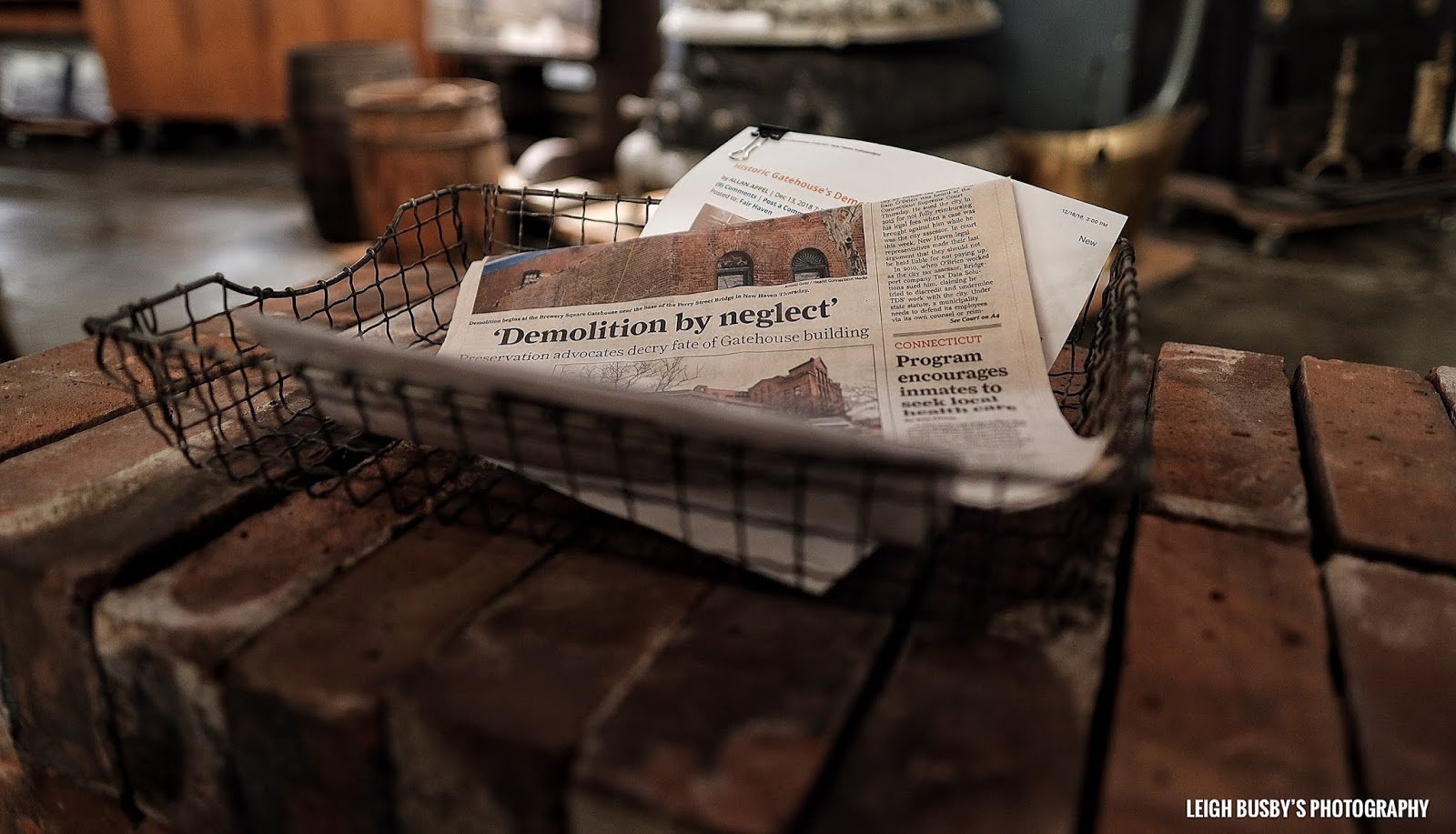
Advocacy
In adulthood, Robert Greenberg’s artistic contributions to New Haven dovetail with his passion for history. From barges to gravestones, Greenberg’s voice for historical preservation is heard throughout the city and beyond.
The New York Times: "An 1850's-Era Oyster Barge Is Saved for Yet Another Life on the East River," by Cory Kilgannon
"Hidden History: The Old Barge," by Samantha Schoenfeld
"Before Makeover, Artists Preserve Winchester Legacy," by David Sepulveda
"Demolition Begins for a Historic Building in New Haven Despite Protests," by Kent Pierce
"Historian Thwarted in History-Rescue Quest," by Allan Appel

"Construction at CenterPlan Unearths Artifacts from New Haven's Past," by Ray Hardman
"Dead Speak On The Green," by Thomas Macmillan
"George Washington was Rescued Here," by Paul Bass
"Construction Crew Unearths Colonial Gravestone," by Thomas Macmillan
"Historian Takes Construction Protest to New Level," by Thomas Macmillan
2000
The Collection grows…
Robert Greenberg grows his collection of New Haven artifacts in a small room inside his father’s Acme Office Furniture building at 33 Crown Street. He builds the collection while living in New York City, working as an Art Director and designer for such iconic companies as MTV and Spin Magazine.
Greenberg amidst his collection in the old Acme Office Furniture building, 33 Crown Street, 2013
2011
…and overflows
The collection fills the allotted room in the Acme Office Furniture building, and Robert Greenberg is struck by a sudden and intense ambition. After 26 years in NYC, Greenberg officially returns to his hometown of New Haven and commits to building a museum.
2012 - 2013:
The Lincoln Oak and The Time Capsule
On October 29th, 2021, Hurricane Sandy topples the Lincoln Oak beyond repair, and the tree dies at 103 years old. The root ball emerges from the New Haven Green tangled in human bones. Robert Greenberg arrives on site with maps and historic documents to assure the public that these bones are the remnants of New Haven colonials, buried before the turn of the 19th century, back when the Upper Green was still a graveyard. It is not a fresh crime.
Something else comes up with the root ball, something long forgotten: a 1903 time capsule. Below the granite memorial post commemorating the Lincoln Oak, a barrel-shaped mass of concrete emerges from the dirt. Nobody knows what it is, and nobody thinks it is significant. In the clean-up effort of the fallen tree, the granite post, concrete mass, and tree were broken down and carted away for disposal. Robert Greenberg interferes on a hunch; “That’s a time capsule,” he insists, noticing unique markings on the concrete mass. It takes him a long time to convince the right people to explore this possibility. But when they do, lo and behold, Robert is right. Immediately, the state swoops in and takes it from there. Though he never gets credit for his discovery beyond independent journalism (and one New York Times article), the whole situation solidifies Robert Greenberg’s indispensable role in keeping New Haven’s history.
"Skeletal Remains Found in Upended Tree; The Death Investigator Exhumes Skull," by Thomas Macmillan and Melissa Bailey.
"Tree Fall Reveals 2 Skeletons on New Haven Green After Hurricane Subsides," by Randall Beach and William Kaempffer.
"X-Rays Reveal Lincoln Oak Mystery," by Thomas Macmillan.
"Proprietor to the Public: Get Out of Here," by Thomas Macmillan and Paul Bass, concerning the moment local press and Robert Greenberg were barred from the time capsule's opening.
"Time Capsule Reveals 'Grapeshot,'" by Thomas Macmillan
2017-2019: Life on Grand
The Acme Office Furniture building is sold, and Greenberg finds a small warehouse space on Grand Avenue in Fair Haven to hold his collection. This enlarges the Collection’s footprint to 4,500 sq ft. After tireless reimagining of the space, Lost in New Haven opens its doors as a hidden museum, making rounds in the local news and attracting New Haven history buffs, culture builders, and schools.
2020: Seeking a New Home
In 2020, the Grand Avenue space is no longer available for leasing. Furthermore, Greenberg’s collection is outgrowing its box; New Haveners know who to call when a business closes their doors and removes their signage, when a construction dig reveals colonial era artifacts, or when maps are discovered in an abandoned attic. Donations and acquisitions expand the collection during a difficult time of transition. Many CT media groups amplify Lost in New Haven’s call for assistance. The Elm City loves its cabinet of curiosities.
Present Day
80 Hamilton
With the help of New Haven’s most influential cultural advocates, philanthropists, and arts patrons, Lost in New Haven finds its forever home on Hamilton Street in 2020.
At the time, 80 Hamilton is just an abandoned paint warehouse last leased by the New Haven school system, full of drop-ceiling and old carpet. Over the next five years, the building is renovated by a small but dedicated team. The collection is transported and displayed, and the first phase of the opening plan is reached. There is still so much to do, but our passion and momentum has never been stronger!

